


FOREWORD
Dr. Crispian Olver, Executive Director Presidential Climate Commission
THOUGHT LEADERSHIP
JSE
World Wildlife Fund
Water Research Commission Green Cape
CHIEF EXECUTIVE OFFICER: FOODBEV MANUFACTURING SETA






FOREWORD
Dr. Crispian Olver, Executive Director Presidential Climate Commission
THOUGHT LEADERSHIP
JSE
World Wildlife Fund
Water Research Commission Green Cape
CHIEF EXECUTIVE OFFICER: FOODBEV MANUFACTURING SETA



Through our Brewing A Better World agenda HEINEKEN Beverages is committed to ensuring that our emissions and targets for this Decade of Action are in line with the benchmarks set by the UN Global Compact. We are determined to contributed to the UNSDGs to protect the planet, ensure prosperity and end poverty for all.
6 7 12 13 CLEAN WATER AND SANITATION AFFORDABLE AND CLEAN ENERGY RESPONSIBLE CONSUMPTION & PRODUCTION CLIMATE ACTION
Path to an inclusive, fair and equitable world

Path to moderation and no harmful use
5 8 3
12 GENDER EQUALITY DECENT WORK AND ECONOMIC GROWTH GOOD HEALTH AND WELL-BEING RESPONSIBLE CONSUMPTION & PRODUCTION


FOREWORD | 10
Dr Crispian Olver, Executive Director, Presidential Climate Commission

46 | Hydrogen: A catalyst to fuel Africa’s green industrial revolution
48 | Green energy: Establishing the just transition and a competitive market
50 | Funding the transition to sustainable agriculture
Nokuthula Selamolela, Chief Executive Officer, FoodBev Manufacturing SETA




24 | Loshni Naidoo, Chief Sustainabilty Officer, Johannesburg Stock Exchange
26 | Dr Morné du Plessis, Chief Executive Officer World Wide Fund for Nature (South Africa)
28 | Nicholas Fordyce, Communications and Publications Manager, Green Cape Fund for Nature (South Africa)
32 | Lani van Vuuren, Knowledge Dissemination Manager, Water Research Commission
52 | We have a sustainability challenge –let’s not waste it
56 | Looking forward to a sustainable future in SA
60 | Giving transport and logistics the green light
64 | Future-proofing your business with renewable energy
66 | The rise of e-commerce and its impact on climate change
68 | Moving towards a green transition: Lessons in mobility from Denmark

76 | Business for change: The rise of corporate social investment
78 | Navigating the path to sustainable success: A deep dive into Sustainability Key Performance Indicators (KPIs)
82 | Sustainability key to attracting and retaining workers
84 | Employees want to learn. The question is–what?
88 | Happiness is open for business
92 | Is it possible for all employees to be star performers?
94 | Taking care of your employees is taking care of your business


Discover the latest trends, success stories, and thought leadership in our 23rd edition of Impumelelo Top Empowerment


Brett van Aswegen CEO, Wonga
Carlos Martins
Advisory and Compliance, Change Financial Solutions
Hannes Schoonraad
Founding Partner, Regarding My Life
John Hudson
National Head: Agriculture, Nedbank
Kate Stubbs
Group Director Business Development and Marketing, Interwaste
Lani van Vuuren
Knowledge Dissemination Manager, Water Research Commission
Loshni Naidoo
Chief Sustainability Officer, Johannesburg Stock Exchange
Michael Gullan CEO, G&G Advocacy
Mmaki Jantjies
Adjunct Professor in Information Systems
Morné du Plessis
Chief Executive Officer, World Wide Fund for Nature (South Africa)
Nicholas Fordyce Communications and Publications Manager, Green Cape
Parmi Natesan
CEO, Institute of Directors in South Africa
Rowland Gurnell
MD, CBRE Excellerate Facilities Management, Sub-Saharan Africa
Sandra Villars Partner, Oliver Wyman
Tariro Mutizwa
Regional Vice President – Africa, AICPA & CIMA
Tiago Marques
Head of Content of Global African Hydrogen Summit and Vice President of Production, Sustainable Energy Council
DISCLAIMER
All rights reserved. No part of this publication may be reproduced, stored in a retrieval system or transmitted, in any form or by any means, electronic, mechanical, photocopying, recording or otherwise, without the prior written consent of Top Media & Communications (Pty) Ltd T/A Topco Media. Reg. No. 2011/105655/07. While every care has been taken when compiling this publication, the publishers, editor and contributors accept no responsibility for any consequences arising from any errors or emissions. ISBN: 978-0-992-1778-0-6
CEO Ralf Fletcher
TOPCO STUDIO
Production Director Van Fletcher
Group Editor Fiona Wakelin
Deputy Editor Koketso Mamabolo
Production Coordinator Daniël Bouwer
Graphic Designer Tashwell Brown
Contributors
Jessie Taylor Sinazo Mkoko
BUSINESS DEVELOPMENT
Head of Brand Twaambo Judy Chileshe
Project Manager Odelia Fester
Business Development Managers Clay Tsapi Charlton Mouton Emlyn Dunn Amu Hlabano
Images Cover image: Okay Deer iStock Pexels Unsplash Freepik
Flickr
HEAD OFFICE
Top Media & Communications (Pty) Ltd T/A Topco Media 2nd Floor, Elkay House 186 Loop Street, Cape Town, 8001
Tel: +27 86 000 9590
Email : info@topco.co.za
Scan the QR code to visit our website


t seems like yesterday I was wishing everyone a peaceful, prosperous 2024 – and now there is Christmas cake back on the shelves! What a year it has been – a tough one for many of us – and at the moment, with global geo-political tensions, the bets are off for what 2025 will bring. Fingers crossed.
Top Media and Communications has a stable of 6 annual publications – and, like a parent guilty of secret partiality, ESG: The Future of Sustainability is up there with my favourites. I do believe that respectful, sustainable living and business practices for the longevity of this planet and all her inhabitants.
This 7th edition, with the theme #thefuture is now, opens with a Foreword penned by Dr Crispian Olver - Executive Director of the Presidential Climate Commission:
“The Presidential Climate Commission is an independent multi-stakeholder body set up by our President to advise on feasible pathways to decarbonise our economy and build climate resilience.”
Continuing on the path of excellence, our esteemed thought leaders include Dr Morné du Plessis, Chief Executive Officer, World Wide Fund for Nature (South Africa); Lani van Vuuren, Knowledge Dissemination Manager, Water Research Commission; Loshni Naidoo, Chief Sustainability Officer, Johannesburg Stock Exchange; and Nicholas Fordyce, Communications and Publications Manager, GreenCape.
This year our front cover - and cover storycentres around the work being done by the FoodBev Manufacturing SETA, with multiple award-winning CEO, Nokuthula Selamolela, at the helm:
“Consumers are increasingly seeking options that are free from artificial additives, preservatives and high levels of sugar and salt.” Nokuthula also highlights South Africa’s sugar tax, how younger generations are becoming more health conscious and that companies are conscious of the need for sustainable, environmentally-friendly practices and are finding innovative ways to implement them. This includes reducing waste and the consumption of water and energy. “There is a push towards eco-friendly packaging and sustainable sourcing of ingredients. There’s also a growing trend of companies understanding that - especially after the pandemic - we need to locally source products and support our SMMEs.”
Inside these pages we take a deep dive into the 3 ESG pillars of sustainability and cover important issues such as:
GSESustainability in the transport and logistics sector; How will climate change impact SA’s provinces? The circular economy; Future-proofing business with renewable energy and Why hydrogen is a game-changer in Africa
Wellness in the workplace; Sustainability KPIs; Staff retention; The rise of corporate social investment; Health and safety in the workplace; and Measuring happiness
Greenwashing; COP28; COP29; Climate finance; Public-private partnerships; Diversity on boards of directors; How to take a holistic approach to risk management; Transparency - checks and balances; The new ISSB standards; and Sustainable impact investing.
They say a picture paints a thousand words…

From myself and the amazing team who brought you these important pages, we hope you enjoy the read.
FIONA WAKELIN | GROUP EDITOR

Dr Crispian Olver Executive Director
Presidential Climate Commission
The Presidential Climate Commission is an independent multi-stakeholder body set up by our President to advise on feasible pathways to decarbonise our economy and build climate resilience. We aim to address the social and economic aspects of the transition in a way that is equitable and supports people who are most impacted. At the same time, we need to make a fair contribution to the global effort to stabilise greenhouse gas at a pace that enables sustainable national development.
The world is racing to get to net-zero in order to head off catastrophic climate change, and the next 25 years are going to be critical. The climate transition will involve profound changes to our economy and society. Some sectors are going to expand dramatically, such as clean energy, battery storage, electric vehicles, green hydrogen, sustainable aviation fuels, climate smart agriculture and minerals for the future green economy. Other sectors linked to the fossil fuel economy will decline. Communities and workers linked to declining sectors, who are reliant on incomes derived from the sector, are at risk, with young, unskilled, unemployed and women particularly vulnerable.
The good news is that there are more jobs to be created in new low-carbon and climate-smart sectors than will be
lost in high-carbon sectors. However, this cannot be taken for granted. To realise these opportunities and cushion the impact on the poor and vulnerable, South Africa has committed to a just transition. This involves targeted interventions around skills for the future labour market, industrial policy interventions to actively support new economic sectors, and social support mechanisms such as basic income support and unemployment insurance. It also involves inclusive governance that brings together a broad crosssection of stakeholders involved in the climate transition and involves vulnerable communities in decision making about their future.
The Just Transition Framework emphasises the wide scope of the just transition, focusing on people and socioeconomic issues as an integral part of a long-term climate response. All sectors of the economy will be impacted, and many people will be affected—both from the physical changes that climate change brings, along with the economic implications in the global transition to reduce emissions.
It is clear that people must be the starting point. This means that the lives and livelihoods of the workers, communities, and households that are impacted by climate change are central to any efforts to mobilise change. What are their experiences? What are their
perceptions? What are their stories? What are they doing in their own lives and businesses to meet the opportunities of tomorrow?
Achieving deep and sustained industrialisation, localisation and competitive technologies will require substantial investment and an enabling economic environment. Underpinning the principle of justness and equally by differentiated responsibilities, is the assertion that the costs of transition should be borne by those historically responsible for the problem. There are active efforts underway through the Just Energy Transition Investment Plan and other instruments to mobilise the required resources. We are expanding this approach into adaptation and just transition sectors, and have recently made proposals for a mechanism to finance bottom up community orientated just transition initiatives. The Presidential Climate Commission looks forward to working with all stakeholders to make this transition fair and equitable.

Dr Crispian Olver Executive Director Presidential Climate Commission
“We
By Fiona Wakelin & Koketso Mamabolo
2030 is fast approaching and with the 17 Sustainable Development Goals yet to be achieved, future-proofing is a priority across all sectors-including food and beverage. The sector faces considerable shifts due to factors such as geopolitical dynamics, climate change and technological advancements. These changes bring new skills requirements to sustain growth and address emerging challenges. This is where the Food and Beverages Manufacturing Sector Education Training Authority (FoodBev SETA) plays a crucial role. With a refreshed brand image emphasing its manufacturing core, FoodBev Manufacturing SETA reinforces its commitment to providing skills development opportunities for both employed and unemployed individuals, remaining steadfast in its mandate.
“We facilitate the delivery of various learning programmes, including internships, learnerships, apprenticeships, bursaries, skills programmes, recognition of prior learning and more,” explains Nokuthula Selamolela, the multi-award-winning CEO of the SETA, who has led the SETA for over half a decade.
FoodBev Manufacturing SETA supports career developments in rural and township areas, educating young people on available career opportunities based on research and developing qualifications that are sector-relevant and responsive. Additionally, the SETA provides grant funding, drawing from revenue from skills development levies contributed by companies in food and beverages production, which are then allocated to address the sector’s diverse skills development needs.
As Nokuthula explains, the sector is impacted by global trends and must adapt continuously. Among key trends, she notes the shift towards plantbased alternatives and the increased consumer demand for organic and natural food products.
“Consumers are increasingly seeking options that are free from artificial additives, preservatives and high levels of sugar and salt,” says Nokuthula. She points to South Africa’s sugar tax, the rise in health consciousness among younger generations, and how companies are embracing sustainable, eco-friendly practices. These include reducing waste, conserving water and minimising energy consumption.
“There’s a strong push towards very eco- friendly packaging and ingredient

Chief Executive Officer: FoodBev SETA
sourcing. There’s also a growing trend to supporting local products and SMMEs, especially after the pandemic highlighted the importance of local sourcing”, she notes.
Focusing on the local supply chain - which is driven by the need for new products - is particularly important given the levels of youth unemployment in the country and the need to support the local economy. Not only is the SETA promoting sustainable practices among the businesses in its sector, but it’s also focusing on developing the ‘future’ skills which are needed for agro processing, renewable energy and waste management.
“Currently we’re collaborating with Energy and Water SETA (EWSETA) to train TVET graduates who have qualified in electrical engineering and other trade related qualifications, where they’re going to learn about solar manufacturing. There’s a serious trend of using solar energy in South Africa because of loadshedding, which also helps the environment.
“‘We saw an opportunity to empower Africa’s solar future by supporting graduates in acquiring cutting-edge skills in solar panel manufacturing, maintenance, and operation through a one-year programme in China.”
FoodBev Manufacturing SETA is also working with local communities to create opportunities that alleviate unemployment, particularly in rural areas.
“The FoodBev Manufacturing SETA consists of five chambers and 13 sub-sectors, each with committees representing labour organisations, employers,and skills development groups.”
“We have initiatives in place that support rural development, whether through apprentice training, business training on regulatory compliance, or community education on recognising counterfeit foods and food fraud.”
Governance and stakeholder engagement
Upholding high standards of governance is central to FoodBev SETA’s operations, Nokuthula asserts.
“We ensure transparency, accountability, and integrity across all our processes, which is a core part of our values. This includes adhering strictly to regulatory requirements and committing to ethical decision-making.”
Stakeholder engagement is key to FoodBev SETA’s success, ensuring that programmes are relevant, impactful, and collaborative. This collaboration
spans government bodies, educational institutions, the private sector, and communities, supporting progress toward the 2030 goals. Of these goals, threequality education, decent work and economic growth, and responsible production and consumption - are the SETA’s primary focus areas. “Our new visual identity aligns with our mission to drive and innovate in developing quality through robust partnerships, enabling us to transform and build a competitive sector.”
Sector engagement
The FoodBev Manufacturing SETA consists of five chambers and 13 sub-sectors, each with committees representing labour organisations, employers, and skills development groups. The committees serve as a bridge between the SETA and the sector. “We hold quarterly meetings with these chamber committees to keep our finger on the pulse of


sector needs - they help us understand required qualifications and emerging trends. When we develop our sector skills plan and conduct research, we run it by them for input. We use them as our focus group when we need to have oneon-ones discussions with the sector, interviewing them as sector experts,” explains Nokuthula.
FoodBev SETA’s research and development team conducts research that informs the Sector Skills Plan (SSP), with input from the University of the Witwatersrand’s research chair. The SSP identifies skills gaps, change drivers, and potential partnerships to develop the necessary skills base.
The SETA also conducts impact studies to assess the effectiveness of its interventions. The SETA conducted research on emerging skills in the manufacturing sector, identifying the future skills required to meet industry demands. The report emphasises the growing need for digital skills training, as automation is increasingly transforming manufacturing processes.
“We conduct an in-depth skills gaps analysis that identifies areas with skilled worker shortages. This helps us then prioritise funding for programmes that address these gaps,” explains Nokuthula. “We also communicate through our chambers, ensuring the sector understands which new qualifications are necessary to remain relevant in an evolving world.”
“Most companies in the sector are small businesses, and the SETA has developed programmes to support entrepreneurs in building supplier capabilities and promoting economic inclusion,” - Nokuthula.
The SETA offers training and upskilling opportunities to help these businesses meet industry requirements, with access to grant funding to enhance their skills and grow their operations. She also notes that small business owners often lack access to structured skills development plans, therefore the SETA pairs them with business coaches and mentors from the industry. In one example, FoodBev SETA funded an international SME programme for 25 business owners, giving them global insights to enhance their operations.
“FoodBev SETA also collaborates with other entities on incubation programmes, helping entrepreneurs create viable businesses. These programmes address common challenges such as creating bankable business plans, managing finances, and accessing seed funding.”
Small businesses are key to stimulating economic growth and creating jobs, and Nokuthula believes that supporting them, developing youth talent, and enhancing public-private partnerships are essential to addressing the unemployment crisis.
“We need to advocate for expanding demand-driven skills development programmes that closely align with industry needs,” she says. She also highlights the importance of specialised programmes that address the digital age, equipping young people with the practical experience necessary to understand first-hand how things work in the real world of work
A call for collective action In the last three years, FoodBev SETA has supported over 1 000 small businesses with skills to succeed. Training covers food safety, regulations,
business development, and market exposure, as seen with the group sent to the New York Summer Fancy Food Show, where one business now exports products to the U.S.
Addressing unemployment requires collective effort, and the SETA is committed to playing its part through skills development that can alleviate poverty. Nokuthula stresses the importance of collaboration, calling on industry players to participate actively. “We ask the industry to open doors for our learners, providing mentorship and helping small businesses access markets.” The education sector, too, can benefit by partnering with the industry to ensure colleges offer relevant training for the sector.
“We are here, ready to engage. Collaborate with us so that we can develop the relevant skills the sector needs,” she says, expressing optimism for South Africa’s future with a new, collaborative government paving the way for sustainable growth.
To get in touch with FoodBev Manufacturing SETA or became a stakeholder, kindly visit www.foodbev.co.za or call 011 253 7300.
Additionally, you can connect with us on social media via @foodbevseta.


Naspers, one of the largest technology investors in the world, understands that sustainable development is integral to eachieving inclusive economic growth. The Group creates sustainable value for its key stakeholders through its business model, which is aligned with the nine Sustainable Development Goals the organisation contributes to. The multinationals locally built businesses in Brazil, India and South Africa are
driving sustainable growth through innovation which impacts not only areas such as education and finance, but also the creation of jobs and promotion of sustainable consumption.
Responsible investing is at the heart of Naspers’s approach with the organisation’s capital-allocation strategy geared to increasing its exposure to revenue streams from a diversified portfolio of asset-light and low-carbon digital services.
The group’s investment decisions are made based on clearly defined criteria which exclude or limit the group’s exposure to business models that clash with their commitment to sustainability. Naspers invests in innovative entrepreneurs who are rooted in their communities and building online businesses that have a significantly lower environmental footprint than their traditional counterparts.

The first objective involves the proactive exclusion of investments in a defined set of controversial activities such as weapons and tobacco. The second requires the continued monitoring of performance through an ESG lens, with the group’s sustainability agenda
systematically spread to its subsidiaries. The third objective involves exploring new opportunities in a range of sectors. An example of this are agri-tech companies DeHaat and Vegrow, which are using soil-biology analytics and AI tools to explore sustainable agricultural solutions.
Naspers’s sustainability accelerators network (SAN), a forum for sustainability leaders and experts, is an engagement platform offered to all the group’s companies. Each quarter the leaders and experts across the group gather to share developments and best practice.
Managing environmental impact
Over the last five years Naspers has been implementing environmental impact reporting across the group - which involves the measuring and reporting of GHG emissions from its subsidiaries - following the same principles applied in their financial reporting. The scope of their emissions reporting is wide and complex due to an array of business models, locations and operating contexts.
In 2024 Naspers took a further step by expanding the scope of disclosures among its companies to include material aspects of their indirect GHG emissions footprint. To add more impetus, the expansion was included as a part of the KPIs of the Group CEO and CFO. This year all of Naspers’ subsidiaries achieved

limited assurance on their GHG footprint, including scope 1, scope 2 and material scope 3 categories.
While countries of the industrialised north are responsible for emitting most of the historical GHG emissions, which cause global warming, impacts are felt most strongly in parts of the world with limited resources to tackle the problem. An example would be how a company seeking to decarbonise its delivery fleet in a European country would benefit from lower costs of capital and enabling policies, incentives and infrastructure when compared to a company in an African country.
Article 2.2 of the Paris Climate Agreement recognised the need to consider the disparities when it comes to climate
justice. The need to bridge the gap between the Global North and Global South, as well as an evidence-based approach was the subject of a roundtable discussion at COP28 moderated by Naspers/Prosus’ Global Head of Sustainability, Prajna Khanna.
The panel of industry leaders, policymakers, and sustainability experts discussed the need to adapt climate action policies and frameworks to local contexts. Climate change tends to disproportionately impact people in the Global South as it worsens existing inequalities and social issues typically prevalent in developing economies, explained Phuthi Mahanyele-Dabengwa, South Africa CEO of Naspers. She reiterated that for the transition to be just, voices from the Global South
must be represented and included. While climate goals are global, the environment in which businesses operate and the cost of the transition are influenced by the mix of energy available, the structure of the local economy and the varying net-zero commitments, policies and regulations in different states.
The panel emphasised the importance of sharing knowledge and creating adaptable policies, highlighting that such flexibility is critical for the successful implementation of science-based targets and overcoming the challenges which are unique to different geographical and socio-economic landscapes.
“In developing our targets, we recognised that our businesses in emerging markets will face an extra-steep challenge in decarbonising their operations, simply by having higher emissions from local electricity grids, lacking an enabling infrastructure, and by facing higher cost of capital,” said Prajna.
The group set out its own science-based targets in 2023, engaging thoroughly with the Science Based Targets Initiative (SBTi), an organisation which is spearheading climate action in the private sector.
Scaling zero-emissions delivery of food, groceries and parcels Naspers believes electric vehicles are set to shape the future of food, grocery and retail delivery, offering a compelling combination of economic, social, and environmental benefits. Over the years, Naspers has built a portfolio of food delivery and etail companies that work with more than 2 million drivers to deliver over 275 million food and grocery deliveries per month from India to Brazil and South Africa to Europe. Its companies are at the forefront of shaping how we eat and live and rethink transportation in urban areas. Naspers’s research shows that global demand for last-mile delivery is set to increase 78% by 2030, with a 36% rise in the number of delivery vehicles in the world’s top 100 cities. This increase would see a potential rise in GHG emissions by 32% if there
is no intervention. This gives a clear imperative to decarbonise deliveries, and electrification and other zeroemissions deliveries offer the potential to accomplish an array of crucial sustainability objectives, including mitigating localised air quality issues nd improving the livelihood of delivery drivers.
Naspers’s companies have implemented many initiatives, deployed investments and are collaborating on innovative programmes to increase the share of electric vehicles in their delivery fleets. The Group’s investees share Naspers’s entrepreneurial spirit and are motivated by a commitment to delivery and profitability.
An example is iFood which is committed to advancing sustainable transportation methods, with a target of achieving 50% of its deliveries through clean vehicles by 2025. To reach this goal, it is developing innovative solutions to facilitate more deliveries using environmentally friendly vehicles, while introducing products and projects to promote the adoption
of bicycles, e-bikes, scooters and e-motorcycles. In the first quarter of calendar 2023, 23.2% of iFood’s deliveries were made by non-polluting means such as bicycles, e-bikes, scooters or e-motorcycles.
iFood celebrated the third anniversary of its iFood Pedal initiative in October 2023. This initiative, which offers bicycle-rental services exclusively for delivery, now operates in seven Brazilian cities. On average, it handles 830 000 orders per month, totalling 19.5 million orders by March 2024, using 3 750 e-bikes. Additionally, through a partnership with the start-up Vammo, iFood has conducted successful trials on e-motorcycles, with plans for expansion. iFood has also enhanced its understanding of scope 3 emissions in its value chain, paving the way for future science-based sustainability targets. By the end of the year, iFood had achieved a milestone of delivering 37 million zeroemissions orders using bicycles, e-bikes, e-motorcycles and drones

Prajna Khanna, Naspers Prosus’ Global Head of Sustainability

Green energy and sustainable packaging
As part of the Group’s approach to creating sustainable value, Takealot has embraced green energy as part of its distribution network and infrastructure. At its warehouse and distribution centres in Johannesburg and Cape Town, grid-tied solar-power installations are expected to be completed in the first quarter of 2025. In Cape Town, 900kWp of solar capacity will be made available while Johannesburg will see an increase from 240kWp to 600kWp. The new warehouse and distribution centre in Durban, which will host a 300kWp solar system, is expected to be commissioned and in operation during the course of 2025. The facility will use harvested rainwater for irrigation and toilets and make use of water-saving sanitaryware.
This year Takealot implemented changes to its stock-storage strategy at its main distribution centres which are expected to decrease the number of boxes needed per customer for around 70% of orders placed. To reduce costs and the number of deliveries to distribution centres, Takealot also optimised its inbound courier network.
Another cost- and environment-saving initiative was to restore and reuse packaging pallets. At the Cape Town distribution centres, onsite teams restore and rebuild Takealot-owned damaged pallets and, in Johannesburg, damaged pallets are sent for repairs and then reused. For the year, 17 529 pallets were repaired in Cape Town alone.
In 2023, Takealot joined the South Africa Plastics Pact, an industry collaboration of members that spans the value chain for plastic packaging, to tackle plastic packaging waste by creating a circular economy
In an effort to reduce carbon emissions through the advancement of its sustainable supply chain goals, Takealot, in partnership with AEVERSA, AVIS, and JAC Motors, is expanding its electric vehicle (EV) truck fleet in Cape Town and Johannesburg with a target of 16 trucks by the end of 2024.
Driven by rising diesel prices and the need for sustainable transport solutions, Takealot, South Africa’s largest on-demand delivery service and
largest EV fleet operator, conducted a proof of concept in 2022 with one EV truck. By the final quarter of 2023, four JAC N75 EV trucks had been deployed in Cape Town and seven in Johannesburg. Takealot plans to deploy EV trucks in other cities like Durban and will look to tackle long-haul trucking in the future. Through the successful pilot programme, the EV trucks have proven to be cost-effective, showing a 19% total cost benefit over traditional trucks in Johannesburg. To ensure a smooth transition, 30 drivers were given specialised training on the processes put in place by management which included measures to prevent failed charges and to manage driver anxiety around the driving range of vehicles operating on low batteries.
Charged overnight, during low-cost hours, the trucks rely on the local grid and are topped up during loading. While the trucks already emit less greenhouse gases than diesel vehicles, Takealot has plans to use solar power for charging hubs which could cut diesel emissions by 67%. A feasibility study is underway to supply up to 80% of the fleet’s power needs via green energy with the potential to save over 14 tons of CO2 emissions annually per vehicle.

Through its social impact initiative, Naspers Labs, Naspers is harnessing the power of technology to support the economic participation of talented young South Africas, through digital skills training and employment opportunities. Naspers Labs was created to offer training for in-demand digital skills to specifically target unemployed youth between the ages of 18 and 34, who have relevant post-matric qualifications but are unable to find employment.
The investment in training and development contributes to job creation for South Africa’s youth and the base of skills needed to reap the benefits of digital platforms and expand meaningful participation in the economy. Digital skills training and employment opportunities are the key focus areas that underpin the objectives of Naspers Labs. These include streams such as Artificial Intelligence, Internet of Things (IoT), Cyber Security, IT Support, Software Development and Data Science, among others.
Training programmes are formulated to equip young people with both hard skills, such as coding, and soft skills like critical thinking and problem solving. This detailed approach seeks to ensure that the young people participating in the programmes are not only ready to work but also provided with the ‘digital-
first’ mentality which is key to driving innovation across sectors. Naspers Labs’ programmes bridge the gap between theory and practice, giving young people access to new career paths. This year, 1 430 unemployed youth received training, while 1 193 young people were provided with employment opportunities.
As part of Naspers’s commitment to promoting digital inclusion, Naspers Labs has a particular focus on recruiting young people from marginalised groups. Naspers Labs has equipped 5 386 young people with the skills they need to become software developers, cloud engineers, cybersecurity technicians, data analysts, desktop technicians, data scientists, web developers and robotics specialists, among others.
With the help of an expansive network of partners – including Afrika Tikkun Services, CapaCiti, Zaio and Mindworx –5 113 young people have been placed in tech and tech-enable jobs. Naspers Labs is also a strong advocate of enterprise acceleration and as part of their investment in the programme they have provided business support for 59 young entrepreneurs, allowing them to scale up, improve their business, become selfsufficient and leverage technology.



Address: 40 Heerengracht, Cape Town, 8001, South Africa
Email: investorrelations@naspers.com
Tel: +27 21 406 2121
Website: naspers.com
LinkedIn: Naspers Limited

Loshni Naidoo, Chief Sustainability Officer at the Johannesburg Stock Exchange
By Loshni Naidoo, Chief Sustainability Officer at the Johannesbu rg Stock Exchange
In the constantly evolving global corporate landscape, few roles have surged to prominence as rapidly as that of the Chief Sustainability Officer (CSO). Over the past decade especially, the rise of the CSO mirrors an unfolding recognition that the longterm viability of businesses is deeply intertwined with their approach to sustainability.
At the turn of the millennium, sustainability was, for many firms, relegated to annual reports or isolated departments. Modern CSOs are no longer just guardians of corporate responsibility; they are strategic partners guiding businesses through an age of environmental and societal challenges.
Their pivotal role ensures that sustainability isn’t a peripheral effort or a public relation gesture; but an integration into the company’s core objectives and strategies. They tread the delicate balance between short-term profitability and long-term societal impact, ensuring both coexist harmoniously.
Yet, why this shift?
The seismic disruptions brought about by the COVID-19 pandemic acted as a magnifying glass, highlighting the vulnerabilities in our systems and the pressing need for resilience. As businesses grappled with unprecedented challenges, the workforce underwent a profound introspection with employees, confined
to their homes and witnessing the larger societal impacts of the pandemic, prioritising values and purpose over salaries.
For example, a Deloitte survey found that 49% of Gen-Zs and 44% of millennials said that they had made career choices based on their personal ethics.
One also cannot discount the weight investors now place on a company’s sustainability agenda. In today’s market, a strong sustainability focus translates to resilience, innovation, and long-term value creation – the perception being that a company is better equipped to handle unforeseen challenges and capitalise on emerging opportunities. Beyond perception, there are now tangible metrics and benchmarks, from carbon footprints to societal impact, that investors increasingly rely on.
According to studies, sustainability can affect operating profits and increase productivity by up to 60%. Furthermore, companies with an inclusive culture are shown to have a 27% higher profitability and a 22% greater productivity, according to research.
There are various financial and investment mechanisms that now directly intersect with the sustainability agenda, making it easier for businesses to raise capital and entrench ESG best practice.
For example, the JSE launched its Sustainability Segment in 2020, a
facility which makes it easier for issuers to raise debt for green, social, and sustainable initiatives. To date, there are 74 listed sustainability bonds on the exchange, with a total market capitalisation exceeding R46.1billion. The bourse also launched its Sustainability and Climate Disclosure Guidance in 2022 which aims to promote transparency and good governance, and guide listed companies on best practice in ESG disclosure.
The JSE has also launched a South African Voluntary Carbon Market (VCM) which will allow local participants to buy or sell carbon credits and renewable energy certificates that are held in either local or global registries. Clients will be able to advance their sustainability goals as they will have full access to the functionality of the global Xpansiv platform for spot trading, auctions, or requests for quotes for both carbon offsets and renewable energy certificates.
Looking ahead, the role of the CSO promises to be even more central. CSOs will remain at the nexus of ensuring a corporate landscape where sustainability remains deeply ingrained in organisations and reach a point where every department, from finance to production, inherently operates with the planet and people in mind. While the journey towards this ideal is steep, every step taken by today’s CSOs brings us closer to a future where sustainability isn’t a specialty, but the norm.

South Africa
By Dr Morné du Plessis, CEO of WWF South Africa
For nature to keep giving bountifully to us there is no room for destructive pessimism. And the same applies to our country, writes Dr Morné du Plessis, CEO of WWF South Africa.
Hope is life and death in equal measure. At its best it colours the day and lights up the night. At its worst, it remains an elusive hankering for something to be gifted by others.
As South Africans, we know all too well how easy it is to slip into a spiral of despair and become a liability to ourselves (just think of all those solution-free conversations at social gatherings that dwell on the negatives, from loadshedding to shoddy service delivery, taxi strikes and more).
Yet, South Africa is widely acknowledged for having turned calamitous predictions of a turbulent future into unmatched opportunity.
Those of us who lived through the 70s and 80s know just how far we’ve come. Imperfect as our new society may be, there are few who hanker for that unequal past and many who wish we could rekindle the blossoming optimism post-1994. We have come to find ways to work around inconvenience and count ourselves lucky for what we have. Should we expect better? Of course, we must and can do better! But better will not be possible if we outsource the responsibility to others, be it government, business, or civil society organisations. Fixing the country starts with each one of us.
Environmentalists are by their very nature agents of hope. Those dedicating their lives to environmental causes are profoundly accustomed to an enduring sense of doom. Every day there is more evidence, most of it about how we are knowingly destabilising our climate, dismantling our ecosystems
and leaving a growing debt to nature for our children to settle.
Yet hope, supported by action, is far more powerful than the strangely seductive slide into despair. Environmentalists know how to deal with relentless negativity. It is what we deal with all of our lives. We simply believe that it is possible to be better.
What underpins this belief? We are surely motivated by the knowledge of our extraordinary natural inheritance and the responsibility of care that comes with it.
Sometimes, just as we need reminding how far we’ve come as a society, we need reminding of just how exceptional South Africa’s natural and social endowments are.
Few places on Earth can match the claims of this country as the cradle where humankind was born – from the rich early palaeontological finds of early hominids, millions of years old, to the precursors of human culture spanning tens of thousands of years. Our very essence as human beings has been shaped right here in the mountains and plains of South Africa, and in these finds it is possible to sense the origins of hope and wonder.
Fewer than a handful of nations surpass South Africa in natural wealth. This wealth is the outcome of tens of millions of years during which an astonishing array of species were formed. When it comes to biodiversity, we are members of the Big League no matter which way you look at it.
As an example, within our borders lies the entire exquisitely abundant and unmatched Cape Floristic Kingdom (CFK) with its thousands of species of plants, insects and animals. Compared to the world’s largest floristic region, the Holarctic Kingdom, our CFK is the
size of a mouse to an elephant. Yet it is so incomparably unique that not even tropical forests can match its magnificent diversity.
This knowledge should fill us in equal measure with unbridled pride and a delight of responsibility.
Even though we have not even had to compete for it, our natural inheritance is all of our endowment to look after, as is our wealth in human capital. The World Cup of Nature and Humanity is in our hands. This trophy, however, is not merely a sign of extraordinary superiority, but it is our duty to keep intact.
What ultimately gives me hope, of the kind that colours the day and lights up the night, are the passionate young specialists within my own organisation who embody the best of what our democracy has delivered. Their willingness to embrace change and to conquer obstacles in pursuit of a better world for people and nature is truly inspiring. As much as we are blessed with a natural bounty in this country, we too have unsurpassed human capital to match – if only we are able to harness it.
If, like me, you have experienced the same wondrous uplifting emotion at the song of a chorister robin-chat at dawn or the joy of catching the strain of melodic village songs floating over the far hills at dusk, you will know that you too have skin in the game. It is us who must solve the unsolvable and conquer the insurmountable, doing the constructive deeds that we so often expect of others.
With so much to play for, better is surely well within our reach.
Yours in nature

Communications and Publications Manager,
By Nicholas Fordyce, Communications and Publications Manager, Green Cape
The building blocks of any economy are the same: To power an economy, we need sources of energy. To grow our community, we must provide food and other resources. We need infrastructure to supply and distribute water and sanitation services. We require a waste management system which can capture, process and safely dispose of, or clean, the waste we generate. And for all of the above, we require modes of transportation.
However, not all economies are built the same. For far too long people have pursued a form of economy, a linear “take-make-waste” model based on the extraction and consumption of limited fossil fuel resources. This has gradually plunged us into a number of crises including the global climate crisis, the 6th extinction, resource availability crises, landfill airspace shortages and significant widespread inequality. Globally, there is now an urgent trend towards transitioning to alternative ways of operating.
A green economy has all of the same building blocks of its linear counterpart, but with an emphasis on technological solutions that are circular, clean, renewable, sustainable and, critically, also profitable. Moreover, a green economy is one that is considered socially inclusive, creating meaningful and dignified job opportunities and focused on service delivery to those communities that are most vulnerable. For businesses which transition to green technologies, enhanced business resilience and profitability are anticipated outcomes.
Through its partnership with the City of Cape Town, GreenCape – a non-profit organisation which drives the widespread adoption of economically viable greentech solutions across Africa – has published a suite of freely available case studies and industry briefs designed to showcase the broad range of green economy opportunities, solutions and interventions, across all of the aforementioned sectors,
which are currently present within Cape Town. The examples provided below are not exhaustive, but paint a clear picture of the type of opportunities that exist within Cape Town’s enabling environment.
For South Africans, the most glaringly obvious challenge facing our country is our energy crisis. Loadshedding is now a daily reality, with the schedule so extreme we shift through many stages a day. Indeed, in 2023 we’ve seen more hours of loadshedding, and at higher stages, than in any previous year, and we still have months to go!
For businesses, the combination of energy insecurity and rising Eskom tariffs makes the provision of electricity a major liability. There is now a huge movement for businesses to ensure security of supply, with many opting for the costly and dirty solution of running diesel generators, or seeking energy storage solutions. But those are not the only solutions. There is an increasingly strong business case for small-scale embedded generation (SSEG) – a green economy solution which allows for the generation of clean, renewable energy, at a cost significantly lower than that of Eskom tariffs.
Indeed, the uptake of SSEG has exploded in South Africa, particularly in the commercial and industrial (C&I) sectors.
So, what’s the catch?
Until recently, a significant one was the upfront capital costs associated with installing a solar photovoltaic (PV) system . But accessing finance has now shifted from being a barrier to becoming a competitive means of extracting additional value.
Consequently, the most significant consideration for companies is selecting the most appropriate financing option for
their project and a range of innovative financing options exist. Whilst outright purchases still provide the best return on investment over the lifetime of the asset, power purchase agreements (PPAs) and lease agreements have cash flow and system performance benefits, and provide great alternatives for businesses without the upfront capital for a solar PV system.
Many businesses are starting to take up these opportunities. For example, Pick n Pay (Brackenfell, Cape Town) has demonstrated the benefits experienced from installing a 250.8 kW solar PV system (developed, designed and installed by Emergent Energy and financed through a solar rooftop rental agreement by Decentral Energy).
Urban agriculture – the growth of cannabis
Turning to agriculture, a trio of urban agricultural opportunities in the hemp market - in pharmaceuticals, in the construction industry and in textiles production - demonstrate the inherent potential within Cape Town’s urban agricultural market. Globally, the cannabis sector is growing, and is currently valued at ~$51.28 billion (Statistica 2023). Nationally, recent policy and regulatory changes have created an enabling environment that is opening up local opportunities for investment and job creation within the cannabis sector.
In Cape Town, the first of these key opportunities for investment in the cannabis sector, lies within the pharmaceuticals industry. Because medicinal cannabis can be grown in three different production systems (indoor, greenhouse or outdoor), opportunities exist across the value chain, not only in cultivation and processing, but also in the companies that provide the required agro-technologies and services. The medicinal cannabis companies in the Western Cape use both greenhouse and indoor production systems and so agrotechnology suppliers of systems such
as lighting, fertigation (the practice of applying fertilizer solutions with irrigation water), drip irrigation, and water treatment etc., will benefit from the greater market demand as more medicinal cannabis start-ups set up facilities. Industrial zones, such as Epping, are well-suited for start-ups looking to repurpose existing warehouses and set up indoor facilities.
Additionally, in 2018, Cape Town was the leading medical destination for medical travellers in Africa and has a competitive advantage in that it has world renowned doctors, a medical industry which has pioneered many ground-breaking surgeries, and a favourable currency exchange rate (in comparison to the US Dollar, Pound Sterling and Euro). This only serves to highlight the potential of the opportunity within the Cape Town context. In addition to pharmaceuticals, there is a growing global interest in the use of hemp in the construction sector, particularly as the sector looks at differ ent pathways for reducing the overall carbon footprint of the value chain. It is estimated that the building and construction sector accounts for around 40% of greenhouse gas (GHG) emissions globally, from materials to heating, cooling, and lighting (Muller et al 2020). There is also growing concern that the price of building material inputs will continue to increase at a rate greater than building prices, making construction profit margins tighter. The most popular hemp construction materials are hempcrete and hemp insulation, particularly because the properties of hemp, such as its mould- and mildew resistance, breathability, fire-resistance and tensile strength make it a good insulation material. Hempcrete is a biocomposite material, made from hemp hurd (the coarse parts of hemp that adhere to the fibre after it is separated), lime binder and water. The mixture can be produced as a slurry to form a solid wall or poured into moulds to form bricks (Hempt 2009). The process of manufacturing hempcrete produces less carbon than is absorbed in the biomass of the hemp plant, making it a vehicle for carbon storage. It is estimated that hempcrete can sequester 108kg of carbon dioxide per cubic metre, acting as a carbon sink for the lifespan of the building (Envirotecture 2012).
A positive indication of this local interest in the use of hemp in construction has been the recent completion of the “Hemp Hotel” in Cape Town. The building has 54
rooms and stands at 12 storeys and is the “tallest building to incorporate hempbased materials in the world”, according to the director of the International Hemp Building Association.
Finally, Hemp can also be used as a substitute raw material in textiles, replacing less sustainable plant fibres such as cotton. There are opportunities to invest in the primary production of hemp, which generates more revenue per hectare than other plant fibres, and can be sold to local or international markets. There are also opportunities to invest in the mid-stream processing and spinning capacity of hemp textiles. Cape Town, as one of two traditional clothing and textile hubs of South Africa (the other being eThekwini, KwaZulu-Natal), is well-positioned to become a hemp textile processing hub. It is already home to a number of hemp apparel businesses and most head offices of major national clothing retailers, enabling a verticallyintegrated value chain. Cape Town has historically been a strong region for South Africa’s clothing manufacturing industry hosting 175 (82%) of the 214 clothing manufacturers in the Western Cape. Cape Town also hosts the majority of South Africa’s largest domestic clothing retailers and is well known for its fashion and design. This positioning also lends itself towards another natural transition for the city – threading the loop towards a circular economy for textiles and fibres.
A circular economy keeps products, components, and materials at their highest use and / or value for as long as possible. Circularity is also a strong enabler of localising supply chains by cycling secondary products, components, and materials close to the market. A solution to unlock an agile circular textile supply chain is the recycling of textile waste. Either through down-cycling into lower value products or by recycling back into fibres. Cape Town possesses a number of existing and potential aggregators ready for scaling and upgrading. The potential is, well, palpable. Creating a circular economy in South Africa and within Cape Town isn’t just the in vogue thing to do – it’s an urgent societal and environmental imperative, and a strategic business decision to remain relevant and competitive in an ever evolving industry. Since most of South Africa’s municipalities have run out of, or are running out of, landfill airspace, two recent developments, in organics and
waste foundry sand (WFS) demonstrate just the latest opportunities for diverting waste from landfill. Almost a third (31%) of annual global edible food production is lost or wasted: 14% takes place at farm and post-harvest, whilst 17% takes place from distribution to consumer. South Africa fairs worse with ~45% of the ~22.8 million tonnes of edible food never eaten. Our food system is therefore confronted with two incentives/challenges; the need to minimise the ecological footprint of food production whilst maximising food security.
Enter Hermetia illucens , the Black Soldier Fly (BSF); another solution for unlocking the circular economy in Cape Town and to ensure the Western Cape’s 2027 organic waste landfill ban is achieved. Cape Town is regarded as the epicentre of South Africa’s BSF industry, and a global hub for innovators. In 2015, Cape Town made global headlines when AgriProtein established the world’s first industrial scale insect rearing and processing facility. In 2021, AgriProtein closed its South African operations, but a number of companies carried on, and new companies have been, or in the process of being, established in Cape Town and surroundings. By combing modern technology, these Cape Town based innovators are leveraging the insatiable appetite of the BSF larvae to upcycle low-value organic waste into high-value products; products that have a wide array of applications, most notably in animal feed and pet food, but also for crop production and healthy soils to feed the food that feeds humans.Owing to the large volumes and hazardous nature of WFS, which is produced at six foundries in Cape Town, it is considered a problematic waste stream. At the same time, many companies that use silica or other sands are unaware of the potential for reduced raw material costs that can be enabled through industrial symbiosis, which is the sharing of resources between companies for mutual benefit. At a regional level, the uptake of WFS in other industries has the potential to play a large role in driving circularity.
Opportunities exist for the recycling of WFS at the foundry site and through synergies with off-takers able to utilise WFS as a secondary material input. Potential off-takers can benefit from cost savings on raw materials through the use of a secondary material as an alternative to costly virgin material. This innovation within the WFS context demonstrates
that even with waste streams considered “problematic” there are circular economy solutions that enhance business resilience, and reduced waste to landfill.
Electrifying our transport sector
Even when it comes to transport, Cape Town is leading the way in transitioning to a green economy. In an ideal world, our entire transport sector would be electrified and powered through renewable means. The journey towards that goal is underway, taking into account the work towards transitioning to renewables within the city and nationally, whilst there is evidence of increasing investment in charging infrastructure to support an ecosystem of electric vehicles. In 2021, Golden Arrow Bus Service (GABS) became the first commuter bus operating company in South Africa to pilot and field test the use of electric buses for public transport. The study has
demonstrated the successful piloting of electric buses and the use of solar energy for charging in the context of public transport services in Cape Town. Currently there are ~65 000 buses and minibuses in South Africa (comprising both public transport and the private sector) that can be replaced by electric buses in a phased approach. Bus fleet operators can play a leading role in the growth of private offtake of renewable energy, thereby reducing operational costs and lowering GHG emissions in cities. Operators can also implement innovative opportunity charging models which take into consideration fleet utilisation levels and peak renewable energy generation windows. Even the City of Cape Town’s (CCT) Fleet Management Department’s electric vehicle pilot project has demonstrated a business case for the procurement of electric passenger vehicles for municipal fleets. In addition
to offering more affordable operational costs (when compared with its internal combustion engine (ICE) vehicle equivalent), electric passenger vehicles can be used as a decarbonisation lever in municipalities, if charged with renewable energy.The project demonstrates the CCT’s commitment to reducing GHG emissions, improving air quality in the city and saving on fuel costs. It also shows the intent of the CCT to play an active role in shifting the needle towards electric mobility within the city. These real time examples, which cover all of the fundamental building blocks of any economy, demonstrate that Cape Town is not only a fertile enabling environment for the green economy, but our most shining example of it!
The full list of publications is represented below: https://greencape. co.za/archives/content/
1. Industry brief: Innovative finance enabling the uptake of small-scale embedded generation (click here)
2. Case study : Rooftop rental agreements as a green finance mechanism for solar PV (click here)
3. Case study: Green economy industrialisation: Combatting systemic loadshedding (click here)
1. Industry brief: Opportunities for cannabis in Cape Town’s pharmaceutical industry (click here)
2. Industry brief: Opportunities for hemp in Cape Town’s textiles value chain (click here)
3. Industry brief: Opportunities for hemp in Cape Town and South Africa’s construction materials value chain (click here)
1. Case study: Electrification of public transport (click here)
2. Industry brief: Electric vehicles-as-a-service (click here)
3. Case study: Electrification of municipal fleets (click here)
1. Industry brief: Threading the loop: Textile recycling and fibre recovery (click here)
2. Industry brief: Unlocking value from waste foundry sand (click here)
3. Industry brief: Black Soldier Fly agriculture (click here)





By Lani van Vuuren - Knowledge Dissemination Manager - WRC
South Africa needs to ensure that its natural resources remain in circulation for longer to alleviate food insecurity and deal with its challenges concerning water and energy. The water-energy-food (WEF) nexus strategy is gaining recognition globally as an intersectoral approach to resource management and sustainable development. Unlike integrated water resource management, which is water-centric in nature, the goal of the WEF nexus is to approach resource management more holistically by utilising a multi-centric philosophy.
Individually, food, energy and water are all vital for a sustainable future. However, these resources are also mutually connected or linked. So energy, for example, requires water, often in large volumes for fuel production, mining, hydropower and power plant cooling. On the other hand, energy is needed for pumping, treatment and distribution of water as well as the collection, treatment and safe discharge of wastewater. In turn, both energy and water resources are required to produce food. Water, energy, and food securities are inextricably linked, with the usage of resources
within one sector influencing the use and availability in the adjacent sectors. The Water Research Commission (WRC) with its research partners have been conducting studies on the WEFnexus for over a decade. Through this focused research, the Commission has not only been able to establish the nexus as an important framework for development in the country, but has been able to demonstrate successfully several initiatives aimed at improving sustainable development, especially at the local, community level. A couple of recent initiatives are highlighted here.

Despite being a water-scarce country, South Africa has numerous river systems, more than 4 500 dams, thousands of weirs, irrigation networks comprising over 6 500 km of canals, hundreds of water and wastewater treatment plants and thousands of kilometres of water distribution networks with numerous pressure reducing locations. These structures offer the potential for power generation, ranging from pico (<20kW), micro (up to 100kW), or even mini (up to 1MW) schemes, which could possibly supply a school, clinic or even a whole community with electricity, among others.
To date, the lack of recognition of hydropower as a future contributor to renewable energy in South Africa has been due to the uncertainty pertaining to hydropower potential in th e country. To fill this knowledge gap, the WRC funded a project, undertaken by the University of Pretoria, to create So uth Africa’s first hydropower atlas (available here, http:// bit.ly/3o5qhl3). The aim of the project was to enhance the uptake of microhydro technology, making local stakeholders (private sector, financial sector, government entities etc.) aware of the opportunities that this technology brings, and the efforts required to get this technology successfully implemented in South Africa.
The South African Hydropower Atlas was developed on a Geographic Information System (GIS)-based platform to not only visualise the hydropower opportunities in South Africa, but to create a database where data related to hydropower quantification can be shared. This allows for private entities, water utilities, developers and general users of the atlas to share available data and aid in the identification of additio nal sites or to improve the reliability of data already included in the atlas.
The atlas includes several data layers, including existing hydropower plants, potential hydropower sites, South African electrical infrastructure, hydrological and rainfall layers, to name a few. These layers aim to enhance the visualisation of South African water infrastructure and rivers and the hydropower that exist within.

In the villages of Krwakrwa and Upper Ncera, in the foothills of the Amathole mountains in the Eastern Cape, the WRC with the Agricultural Research Council (ARC), the provincial Department of Rural Development and Agrarian Reform (DRDAR), the Fort Cox College of Agriculture and Forestry, and the University of Fort Hare undertook a six-year project to assess rainwater harvesting and conservation practices for production of food as well as renewable energy in the form of biogas.
In these villages, as with many in South Africa, few households have a monthly income exceeding R2 000, so poverty and food insecurity is rife. Most households are headed by elderly women, some of whom tend household gardens. Electricity is expensive so it is typically only used for lighting, while c ooking and heating is done with firewood collected from the veld. This not only results in deforestation, but is a health and safety hazard through exposure to smoke and the risk of accidental burns and house fires.
Within the villages, demonstration plots were established to show how water harvesting, vegetable crops, cow dung and bioenergy can be integrated. Thanks to additional funding from DRDAR, 14 biodigesters – seven in each village – could be installed at households that had their own water storage tanks as well as ready access to cow dung. Project team members helped the households to construct in-field rainwater ha rvesting (IRWH) basins in their gardens and provided them with seeds and seedlings. With the IRWH technique the households are now able to produce a variety of vegetable crops throughout the year, as they can use water from the tanks for supplemental irrigation during the dry season. Bioslurry effluent from the biodigesters is used as a fertiliser source while the biogas is piped into householders’ kitchens, providing a valuable energy supply.

Farmers’ days were held to allow the selected beneficiaries to display the fruits of their labour and share their knowledge and challenges with stakeholders and other vill agers.

Biodigesters were installed at 14 households that already had w ater storage tanks and access to cattle nearby, since the biodigesters needed to be ‘fed’ with water and cow dung at least every five days. biogas.
The WRC projects under the WEF nexus theme raise awareness about the interlinkages between water, energy and food, and create a platform for discussion of practical solutions that include the negotiation of synergies and trade – offs linked to the WEF nexus issues. The WEF nexus presents an opportunity to promote integrated planning in a sustainable manner. The WRC will continue to drive research, development and innovation linked to knowledge generation on the WEF nexus.

Coca-Cola Beverages South Africa (CCBSA) is a proudly South African company which began operating as a legal entity in July 2016, after the merger of six non-alcoholic ready to drink bottling operations.
We are a level 3 B-BBEE empowered company. We employ over 7000 people at 13 manufacturing facilities across the country. As a subsidiary of Coca-Cola Beverages Africa (CCBA) and a bottler for The Coca-Cola Company, our vision is to refresh Africa every day and make our continent a better place for all.
We manufacture and distribute Coca-Cola beverages that make life's everyday moments more enjoyable, while doing business the right way. The result is shared opportunity for our customers, our employees, our communities, and our shareholders.
We conduct our business ethically, transparently and conscientiously. We espouse an inclusive business culture to reflect our African identity. We accelerate sustainable, profitable revenue growth across all categories and offer an innovative portfolio of products that respond to customer needs and consumer preferences. Profitability is important, but not at any cost.
People matter. Our planet matters. We do business the right way by following our values and partnering for solutions that benefit us all.
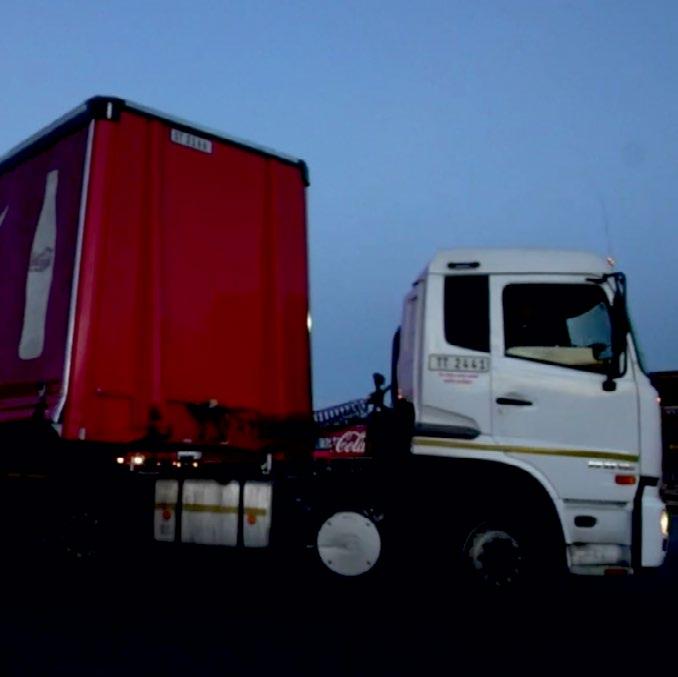

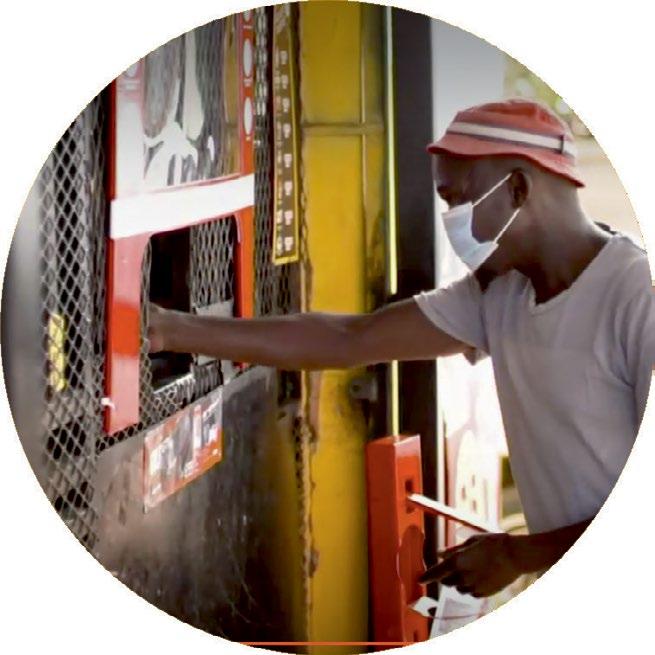
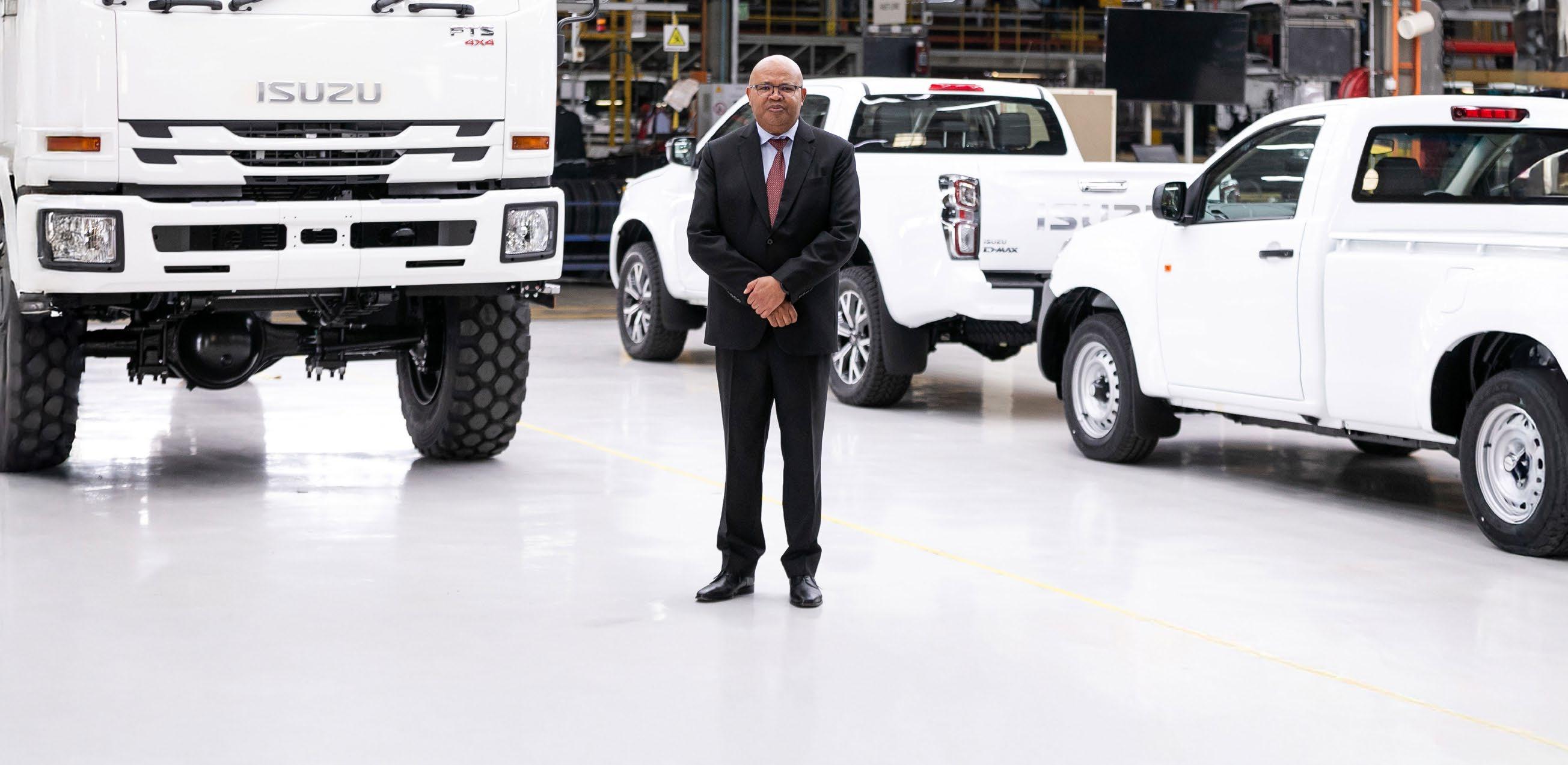
ISUZU MOTORS South Africa (ISUZU) has carved out a strong position in the African automotive landscape, underpinned by a firm commitment to sustainability. With a focus on reducing its environmental footprint, fostering inclusive economic growth, and driving innovation, the company is steering towards a future where business success and responsible stewardship go hand in hand.
A strategy rooted in purpose ISUZU's sustainability approach is directly aligned with its core business strategy, embodying a culture of connection and accountability. The company embraces the concept of "With you, for the long run," a philosophy that extends from its workforce to customers and broader communities. This purpose-led approach emphasises the importance of sustainable innovation, especially in the African context, where diverse challenges such as energy shortages, infrastructure gaps, and socioeconomic disparities necessitate tailored solutions.
A key pillar of ISUZU's sustainability agenda is its commitment to achieving carbon neutrality and logistics-focused digital transformation while ensuring that governance and disclosure remains an imperative. This aligns with the global vision of ISUZU Motors Ltd., which aims for zero greenhouse gas
(GHG) emissions across the lifecycle of its products by 2050. ISUZU Motors South Africa’s focus on Environmental, Social and Governance (ESG) principles is at the forefront of its operations. As a commercial mobility solutions company, ISUZU aims to resolve issues faced by customers and society by enhancing its corporate value, both social and economic – which includes continuing to support transportation. In this regard, ISUZU introduced compressed natural gas (CNG) vehicles and dualfuel trucks, catering to the specific needs of African fleets. Collaboration with its fleet customers provides them with insight into how it can meet their low or zero carbon needs. These vehicles offer a cleaner alternative while maintaining the fuel accessibility crucial for the continent's long-distance transportation. ISUZU’s progress in the CNG arena is a first step towards alternative energy vehicles.
Billy Tom, President of ISUZU Motors South Africa says , “Our future vision revolves around positively impacting the ISUZU global vision. We aim to improve our sustainability performance through innovation and creativity, creating a better world of transport and enhancing our societal contribution. ISUZU launched alternative fuel commercial vehicle models to cater to the increasing needs of African commercial fleets. Each technology has its context-specific benefits and
limitations. “We tailor solutions for industries, such as the CNG vehicle we developed for the baking industry in Gauteng. We have launched several Diesel/CNG dual-fuel trucks to service Gauteng's bakery and transportation industries. This hybrid approach offers the advantages of cleaner fuel while ensuring fuel accessibility for longdistance travel across Africa’s diverse terrains,” adds Tom.
“ISUZU introduced alterations to the existing models that significantly reduced CO2 emissions. For example, the 2022 mu-X SUV was launched with a more fuel-efficient 1.9-litre engine, replacing the 2.5-litre of the previous generation. This change cuts CO2 emissions by 21% and boosts fuel efficiency by 19%.”
ISUZU has also made significant strides in reducing its operational environmental impact. Notably, the company has maintained a zero-wasteto-landfill status for its manufacturing operations for five consecutive years. This achievement reflects a rigorous commitment to the five Rs: refuse, reduce, reuse, recycle, and recover. Efforts include initiatives like transitioning from disposable to returnable packaging for vehicle imports, which significantly cut material consumption. Furthermore,
ISUZU's collaboration with local entrepreneurs and educational institutions has enabled innovative waste-repurposing projects. For example, ISUZU supported the KwaZakhele Gap Trap Pilot, a community project aimed at creating a localised circular economy by repurposing automotive waste materials. Such initiatives illustrate how ISUZU leverages its resources to drive broader environmental and social impact.
“Our industry is learning that businesses cannot operate independently of the natural environment. The sustainability of our operations directly depends on how well we care for our surroundings. ISUZU’s Environmental Vision 2050 shapes our business strategy and breathes life into our daily practices. This vision isn’t just a document—it’s woven into the very values and strategy of ISUZU, guiding us toward a more sustainable future,” he explains.
As a leading automotive manufacturer in South Africa, ISUZU understands the importance of inclusive development. The company is an industry leading Broad-Based Black Economic Empowerment (B-BBEE) Level 1 contributor for five consecutive years, setting a benchmark in the industry. ISUZU's inclusive growth strategy extends to supporting small and medium-sized enterprises (SMEs) through initiatives like supplier incubation projects and skills development programs.
ISUZU's efforts to localise component manufacturing and create new jobs are directly aligned with South Africa's Automotive Master Plan 2035 (SAAM35). The localisation of components benefits the environment by reducing the transportation footprint. It supports the development of the South African manufacturing sector and creates jobs. To aid this progress, ISUZU has invested R570-million in localising styling components for the
7th generation ISUZU D-MAX pick-up. “By investing in local suppliers and developing a diverse dealership network that includes black- and women-owned businesses, ISUZU is fostering economic opportunities across the country. This not only supports the automotive sector but also contributes to the broader socio-economic upliftment of the communities it serves.”
As a responsible corporate citizen, ISUZU is committed to playing a societal leadership role with a focus on education, community development and conservation. Closer to home, the company places its people at the heart of its sustainability journey, with a strong emphasis on job creation, skills development, and workplace safety. The company created 289 new jobs, introduced 80 apprenticeships through the Youth Employment Services (YES) programme, and provided comprehensive training to employees to prepare them for future challenges. Additionally, ISUZU's focus on workplace safety, health, and wellness has fostered a supportive environment for its workforce.
“Our corporate social responsibility (CSR) efforts extend beyond our workforce to the broader community,” says Tom. “ISUZU has been involved in projects like providing boreholes for schools in drought-affected areas and supporting waste separation initiatives in partnership with local organisations. These initiatives underscore ISUZU's role as a community ally, striving to address pressing social and environmental needs in the communities where it operates.”
long run With a vision for a sustainable transport future, ISUZU is positioning itself within the evolving mobility landscape. While
electric vehicles remain a challenge due to the country's coal-based energy grid, ISUZU's approach is pragmatic— focusing on context-specific solutions that balance environmental benefits with local infrastructure capabilities.
ISUZU is well-equipped to address the unique challenges of the African market. The company aims to introduce new energy vehicles that meet the durability and performance demands of African roads, ensuring that sustainability does not come at the expense of practicality.
In an era where businesses are increasingly called upon to address climate challenges and social inequities, ISUZU's approach provides a compelling example of how sustainability can be woven into the fabric of business strategy. As ISUZU continues to drive forward on its sustainability journey, it remains a key player in creating a greener, more inclusive future for the African continent.

Address: ISUZU Motors
South Africa, Struanway, Struandale, New Brighton, Gqeberha, 6001, South Africa
Website: ISUZU.co.za
LinkedIn: ISUZU Motors
South Africa
Twitter: @ISUZUsa
Facebook: ISUZU South Africa
Instagram: @ISUZUsa

The National Energy Regulator of South Africa (NERSA) ensures the orderly development of the energy sector, mainly through licensing, setting and approving of prices and tariffs, compliance monitoring and enforcement, and dispute resolution in the electricity, piped-gas and petroleum pipelines industries.
NERSA endeavours to be more innovative and agile in ensuring that we continue to make a valuable contribution to the socio-economic development and prosperity of the people of South Africa, by regulating the energy industry in accordance with government laws, policies, standards and international best practices in support of sustainable development.
NERSA is a regulatory authority established as a juristic person in terms of section 3 of the National Energy Regulator Act, 2004 (Act No. 40 of 2004). NERSA’s mandate is to regulate the electricity, piped-gas and petroleum pipelines industries in terms of the Electricity Regulation Act, 2006 (Act No. 4 of 2006), Gas Act, 2001 (Act No. 48 of 2001) and Petroleum Pipelines Act, 2003
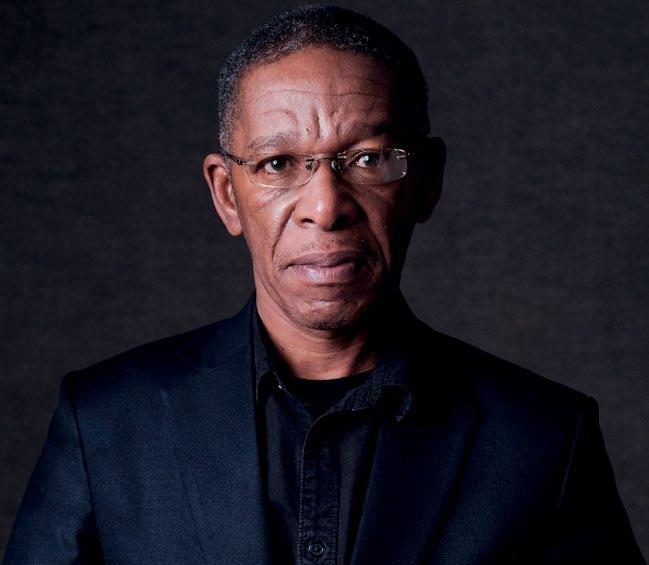



(Act No. 60 of 2003).
NERSA’s mandate is further derived from written government policies and regulations issued by the Minister of Electricity and Energy. NERSA is expected to perform the necessary regulatory actions in anticipation of and/or in response to the changing circumstances in the energy industry.
The Minister of Electricity and Energy appoints Members of the Energy Regulator, comprising Part-Time (NonExecutive) and Full-Time (Executive) Regulator Members, including the Chief Executive Officer (CEO). The Energy Regulator is supported by staff under the direction of the CEO.





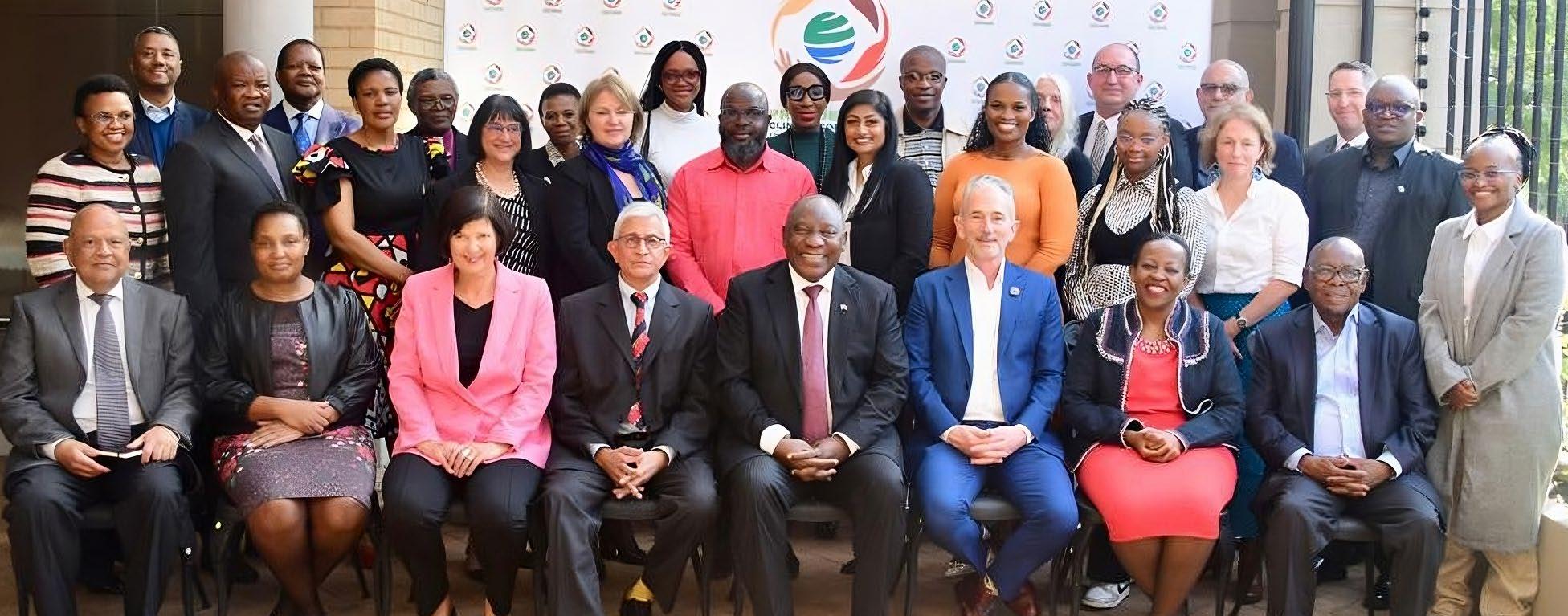
The Presidential Climate Commission (PCC) is a multi-stakeholder body established by the President of South Africa to advise the country on its climate change response and define pathways to a low-carbon climate-resilient economy and society.
In building this society, the country needs to ensure decent work for all, social inclusion and eradication of poverty particularly for the most vulnerable including women, children, people with disabilities, the poor and the unemployed and protecting workers’ jobs and livelihoods.
The PCC’s mandate emanates from the October 2018 Presidential Jobs Summit when social partners agreed to a statutory entity to coordinate and oversee the Just Transition towards a low-carbon, inclusive, climate-resilient economy and society. It consists of government ministers and commissioners representing social partners, including academia, business, civil society, labour and youth.
The PCC facilitates dialogue and defines the type of society we want and has already successfully delivered the country’s first Just Transition Framework adopted in May 2022, and by Cabinet in July 2022.
The Change Act , Act 222, of 2024 President Cyril Ramaphosa has signed the Climate Change Bill into law – which means South Africa, for the first time, has a law that is specifically aimed at developing an effective response to climate change.
Act sets out a national climate change response, including mitigation and adaptation actions, which also constitutes South Africa’s fair contribution to the global climate change response, under the Paris Agreement.
Mitigating the risk and impact on our economy
In 2022, the PCC focused on: (1) finalising a framework and pathways to a just and equitable transition; (2) building social partners support for this transition; (3) advising on improving the country’s resilience in a changing climate; and (4) mobilising financial flows towards the just transition, including supporting the implementation of the Just Energy Transition Investment Plan (JET-IP).
To mitigate social risks arising from the transition, these investment categories are needed urgently and at scale:
1. Economic diversification enabling new jobs and livelihoods, enhanced access to resilient services and infrastructure, and land and biodiversity rehabilitation and restoration
2. Equipping and strengthening the abilities of workers and SMMEs (small, medium, and micro enterprises) to participate meaningfully in transforming regional economies
3. Establishing and operationalising just transition management structures and institutional arrangements for coordinating policy responses through stakeholder engagements and the implementation of projects in affected areas


Physical Address: 14a Jellicoe Avenue, NEDLAC House, Rosebank
Postal Address: PO BOX 1775, Saxonwold, 2132
Website: climatecommission.org.za
Email: info@climatecommission.org.za
Facebook: @ClimateCommission
Twitter: @ClimateZA LinkedIn: Presidential Climate Commission

As the world grapples with increasing environmental pressures, the need for long-term resource management and sustainable practices has become essential across industries. One sector where this is particularly critical is mining, where resource extraction often has significant environmental and social impacts. Sustainable mining and land rehabilitation practices are no longer just regulatory requirements but are key to ensuring the sector’s future viability. Central to achieving these sustainability objectives are the United Nations Sustainable Development Goals (SDGs), which provide a comprehensive framework for guiding industry practices towards more sustainable outcomes. By aligning initiatives with the relevant SDGs, stakeholders can systematically address issues, thereby contributing to a more sustainable and equitable future.
At OMI Solutions, “Fit for Purpose Powerful Solutions with Gentle Delivery” is our undertaking, while our vision is to add value to clients through innovative implementation that improves sustainability. One such solution that has been pioneered, is our transformative Tailings Storage Facility Rehabilitation Trials. It aligns with several of the United Nations
Sustainable Development Goals (SDGs) particularly in its innovative, eco-friendly approach to rehabilitating tailings dams. By developing a method that eliminates the need to transport additional topsoil, the project addresses SDG 12: “Responsible Consumption and Production”, by reducing the environmental degradation associated with soil extraction from off-site locations. By doing this we also minimise the risk of introducing alien and exotic plant species that could disrupt local ecosystems. This focus on creating a plant community suitable for indigenous fauna supports the restoration of natural habitats and contributes to SDG 15: “Life on Land”.
The sustained plant growth achieved through our rehabilitation projects provides a suitable habitat for indigenous pollinators and insects. This feeds into our Bee Rescue and Wings Sanctuary initiatives that also contribute directly to SDG 15. By promoting biodiversity gain through various initiatives, we effectively halt long-term biodiversity loss through scalable solutions, raising awareness about the critical role of pollinators and the importance the environment plays to the good health and well-being of marginalised people. With our aim to establish these Wings Sanctuaries all across Africa, this initiative also contributes to SDG 2: “Zero Hunger”,
through honey production and the role that bees play in pollination, which is vital for food production. We also offer beekeeper training, giving attendees all the knowledge they require to start their own beekeeping journey. By creating sustainable livelihoods through beekeeping initiatives, the project also supports SDG 8: “Decent Work and Economic Growth”, empowering local communities and promoting sustainable economic activities.
OMI assists with the establishment of apiary farms, where rescued bee colonies are relocated. The apiary farms aim to form part of restoring local biodiversity, creating sustainable honey production facilities, and providing work opportunities for marginalised community members. Along with the other SDGs previously mentioned, this also covers SDG 1: “No Poverty” by creating sustainable livelihoods, lifting people out of poverty through income-generating activities and SDG 10: “Reduced Inequality” by focusing on disabled and disadvantaged people. The programme helps reduce inequality within and among communities, promoting social inclusion and providing equal opportunities for all, regardless of physical or socioeconomic challenges. On the 4th of September 2024, OMI also celebrated the first week of meteorological spring and Arbour Week
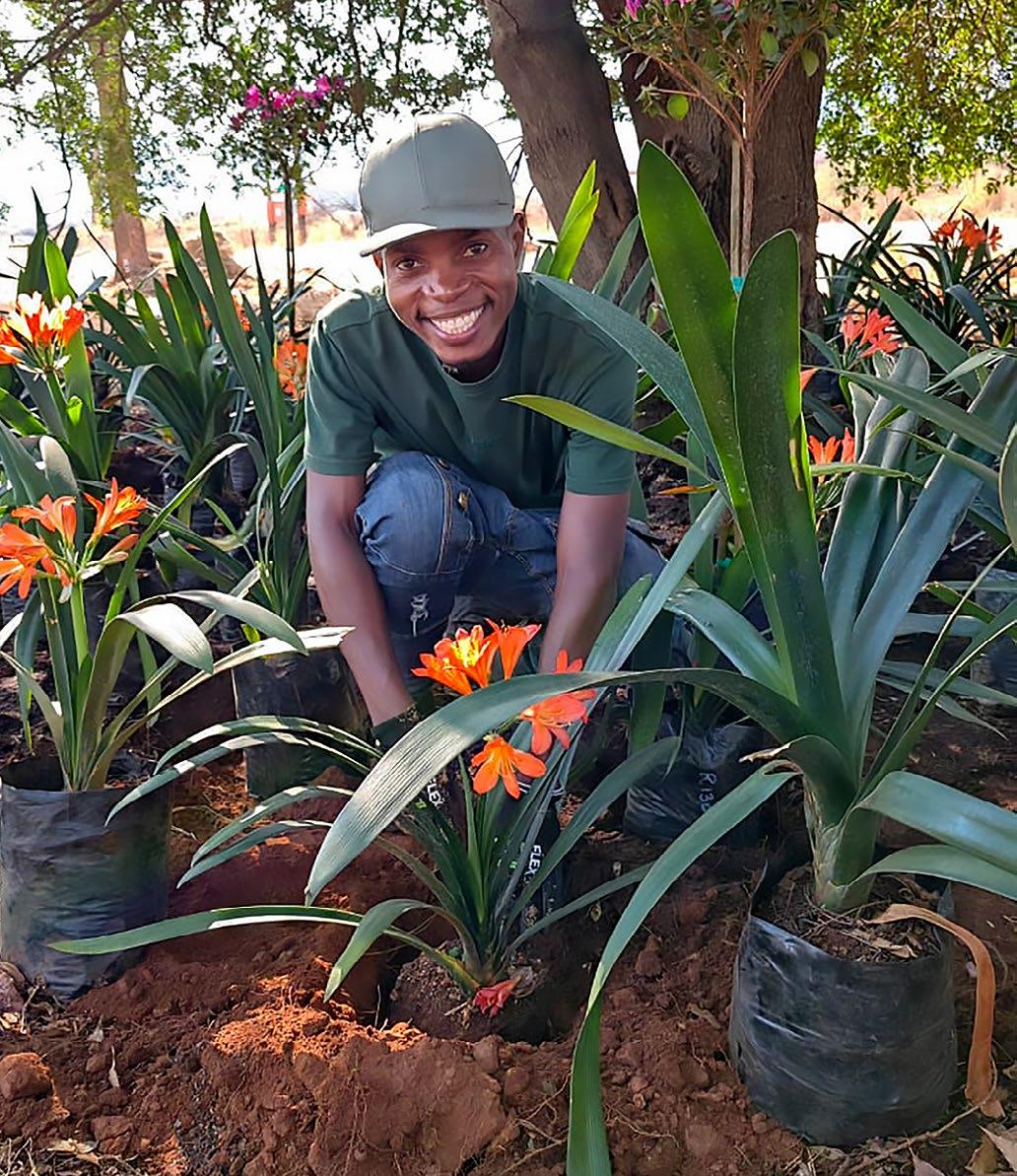
by planting additional flowers, plants and trees at their existing apiary sites across South Africa.
As part of SDG 14: “Life Below Water”, we offer biomonitoring services which are crucial tools in preserving aquatic ecosystems and ensuring sustainable water management practices. Biomonitoring helps track the health of aquatic ecosystems, assess the impact of human activities, and guide efforts to protect vulnerable species and habitats. By providing early warnings of ecological stress, biomonitoring supports efforts to reduce pollution and protect aquatic biodiversity—key targets of SDG 14. Biomonitoring helps identify areas where restoration efforts are needed, such as rehabilitating degraded water bodies or restoring aquatic ecosystems.
Our animation and illustration department plays a key role in promoting sustainability and supporting the SDGs through educational content like cartoons, illustrations, and infographics. These visual tools simplify complex topics—such as climate change, biodiversity, responsible consumption, and clean energy—making them accessible to diverse audiences, including children and those with limited education. By collaborating with NGOs, institutions, and businesses, the department enhances sustainability initiatives through powerful storytelling. This covers SDG 3: “Good Health and Wellbeing”, SDG 4: “Quality Education”, SDG 7: “Affordable and Clean Energy”, SDG 10: “Reduced Inequalities”, SDG 12: “Responsible Consumption and Production”, SDG 13: “Climate Action”, SDG 14 and
15: “Life Below Water” and “Life on Land” and SDG 17: “Partnerships for the Goals”.
OMI is also dedicated to building partnerships with young innovators to tackle sustainability challenges, particularly in waste management and plastic recycling. These innovators bring fresh ideas, creativity and passion for sustainability to the table from creating biodegradable alternatives to designing effective uses for recycled plastic and waste, aligning with SDG 12. By raising awareness and connecting them with businesses and governments, OMI supports SDG 11: “Sustainable Cities and Communities”. Through mentorship, funding, and distribution, these partnerships help scale grassroots solutions, driving change and fostering sustainable economic growth (SDG 8) and providing a sustainable livelihood for future generations. One such successful partnership is with MRN Designs , a company founded by Margaret Nesemare in Durban, South Africa, which makes earrings out of recycled bottle caps with the ethos: “Style & Elegance with Social and Environmental Responsibility."


Lombardy Corporate Park, Office B, Block B, Ground Floor, Cnr Graham and 1 Cole Road, Shere, Pretoria, 0084
info@omisolutions.co.za
+27 12 945 5081
omisolutions.co.za



By Tiago Marques, Head of Content of Global African Hydrogen Summit and Vice President of Production at the Sustainable Energy Council
What is hydrogen and how is it produced?
Hydrogen is a clean alternative to methane, also known as natural gas. It's the most abundant chemical element, estimated to contribute 75% of the mass of the universe. Hydrogen can be made directly from fossil fuels or biomass, or it can be produced by passing electricity through water, breaking the water into its constituent components of hydrogen and oxygen.
According to the National Renewable Energy Laboratory from the US Department of Energy, hydrogen has very high energy for its weight, but very low energy for its volume, so new technology is needed to store and transport it. And fuel cell technology is still in early development, needing improvements in efficiency and durability.
The emerging clean hydrogen market
The International Energy Agency (IEA) has stated the key pillars of decarbonising the global energy system are:
• Energy efficiency
• Behavioural change
• Electrification
• Renewables
• Hydrogen and hydrogen‐based fuels
• Carbon capture, usage and storage (CCUS)
In addition to the projected volume of emissions reduction hydrogen is expected to facilitate, hydrogen is positioned to play a significant role in the energy transition due to emerging capabilities to produce clean hydrogen and hydrogen-based fuels as well as increasing hydrogen demand generation.
According to McKinsey research, total hydrogen demand has the potential to reach up to 660 million tons by 2050, abating more than 20% of global emissions. Realising this opportunity will require all relevant stakeholders to come together to develop clean hydrogen value chains - often across geographies. Those positioned to take action in these areas will be uniquely advantaged to create new sources of value and play a leading role in future global energy markets.
Clean hydrogen is expected to play a critical role in decarbonising hard-to-abate sectors, often as a complement to other technologies, including renewable power and biofuels. Hydrogen has the potential to decarbonise heavy industries including steel, petrochemicals, fertilisers, long-haul
transport and more as well as to support flexible power generation, among other applications. While momentum is strong, more needs to be done to be on track to achieve net zero ambitions by 2050.
The increasingly supportive policy and funding environment - including quantified 2030 production capacity targets for many countries - means about two-thirds of announced projects are projecting start-up by the end of the decade. The momentum created by the US Inflation Reduction Act has helped boost energy-related sectors globally, including low carbon hydrogen. For investors, comparing the effect of hydrogenrelated policy and legislation on costs and pricing will be a key element of making informed, data-driven investment decisions.
However, the emerging hydrogen economy faces significant challenges in ramping up, including:
• A complex and capital-intensive value chain
• Value chain segments that are developing at varying paces, challenging scale-up
• Still-evolving facilitating technologies and supportive regulations
• Increasing equipment and financial costs that may put projects at risk as well as muffle the impact of government support
• Demand generation that does not match the current enthusiasm for production
For many African countries, the question is not about reducing their carbon footprint but rather to sustainably harness their existing resources to meet the growing demand for energy that will advance economic development, map a sustainable path to a net zero future and eliminate energy poverty across the continent. To this end, some African countries are setting their sights on clean hydrogen.
In the global drive to develop and commercialise clean hydrogen, Africa is on
an equal footing with developed economies. Governments around the world are promoting projects for domestic and export markets of clean hydrogen, with billions of dollars expected to be invested over the next few years. To capture the opportunity, supportive and facilitating policy will be needed to incentivise investment as well as:
• Catalyse collaborative R&D innovation platforms for sustainable, competitive technologies suited to the capabilities of each country
• Build the needed infrastructure to support hydrogen production, storage, transport and refuelling
• Construct the legal frameworks to support the localised hydrogen value chains
• Mobilise skilled and specialised workforce and supportive technology infrastructure needed to scale and mature a local hydrogen value chains
Given the advantage of abundant wind and solar resources, vast underpopulated landmasses and strategic coast lines, the continent could be highly competitive in supplying clean hydrogen for local and global consumption. A McKinsey Achieved Commitments scenario projects global hydrogen demand could grow sevenfold by 2050, accompanied by falling hydrogen production and renewable capacity increases. Africa has a significant opportunity to export the clean hydrogen needed to balance global demand with available supply. Collectively and through collaboration, hydrogen-producing African countries have the potential to complement African hydrogen exports of up to 40 megatons by 2050 with self- supply its full domestic demand potential of 10 to 18 megatons of hydrogen.
To enable these shifts, McKinsey projects $2.9-trillion of cumulative capital expenditure would be required between 2022 and 2050, most of which would need to be dedicated to green energy sources. In 2022, annual investments in energy amounted to $70-billion, of which nearly 60% were derived from oil and gas activities. By 2050,
the annual investment required is expected to more than double to $160-billion, with the focus of investment likely shifting to an expected 43% of capital expenditure spent on hydrogen, 38% on renewables, and 17 percent on power transmission, distribution and mini-grids.
The African clean hydrogen potential represents a major opportunity for growth, employment and innovation. Stakeholders across the public and private sectors, both domestically and internationally, will have a critical role to play in moving Africa and the countries across it toward a sustainable energy future.
The opportunity for Namibia Hydrogen as a catalyst to propel green industrialisation across the African continent is emerging as a multifaceted solution that aligns to domestic, regional, and global agendas. By capitalising on its renewable energy potential and strategic geographic location, Namibia can spearhead the development of a green industrial ecosystem that not only supports its own economic objectives but also contributes to broader regional and global sustainability goals. If executed diligently, it represents a pathway to overcome its structural economic constraints while simultaneously fostering high-skill job creation, increased productivity, market expansion, and foreign direct investment.
Central strategies include promoting export development, enhancing efficient production, ensuring external debt sustainability, and developing an integrated industrial strategy. Namibia’s own Green Industrialisation Blueprint also highlights the importance of modernising agriculture, empowering women and disadvantaged groups, and fostering a highly skilled and productive labour force. To avoid the potential pitfalls identified by its founding fathers and enshrined in Vision 2030, Namibia must reduce its reliance on the primary sector and adopt policies that promote economic diversification and resilience.
By Fiona Wakelin and Jessie Taylor

South Africa’s Just Energy Transition Investment Plan (JET IP) for the five-year period 2023-2027 sets out the scale of need - and the investments required - to achieve the decarbonisation commitments in the Nationally Determined Contribution (NDC), which outlines the rate at which South Africa plans to reduce greenhouse gas emissions and represents South Africa’s fair contribution to the goals of the Paris Agreement.
The Investment Plan supports South Africa’s goal of achieving a low-carbon economy and a climate-resilient society, addressing the global risks of climate change, while creating jobs and driving more rapid and inclusive
economic growth. On 16 November 2023, Cabinet approved the implementation framework for the Just Energy Transition Investment Plan which delivers just outcomes for those affected by the energy transition and will be driven by a combination of reforms in the energy sector, including new energy vehicles and green hydrogen – SONA 2024
August 2024 marked a significant step towards transforming South Africa’s energy sector when President Cyril Ramaphosa signed the Electricity Regulation Amendment Act into law. This landmark legislation aims to overhaul the existing electricity system, introducing a competitive market, bolstering energy security, and fostering an environment conducive
to the growth of renewable energy. The new law builds on the Electricity Regulation Act of 2006, addressing current challenges and setting the stage for a more reliable, affordable, and sustainable electricity supply in South Africa.
The Electricity Regulation Amendment Act seeks to reform the country's electricity sector, reflecting the government's commitment to modernising and diversifying energy production. The Act aims to introduce competition into the electricity market, reduce energy costs, increase investment in new generation capacity, and enhance the reliability of electricity supply across the nation. A key feature of the Act is establishing

the Transmission System Operator (TSO), an independent state-owned entity that will manage the national electricity grid. This new body, which will eventually operate under the National Transmission Company of South Africa (NTCSA), is tasked with ensuring that all electricity producers - whether public or private - are granted fair and non-discriminatory access to the grid.
The TSO is a cornerstone of the new regulatory framework. As an independent entity, it will oversee the operation and development of South Africa's electricity grid, ensuring that all generators have equal access to the transmission network. The TSO will play a critical role in maintaining and
expanding the national grid, ensuring its stability, and facilitating the integration of new, independent power producers (IPPs) into the system.
Among the TSO’s responsibilities are maintaining grid stability, dispatching electricity, and balancing supply and demand. It will also act as a market operator, facilitating electricity trading between producers and consumers on the newly established open market platform.
The Act also sets the stage for an open market platform that allows for competitive buying and selling of electricity. This reforms the current model in which state-owned utility Eskom dominates electricity generation, transmission, and distribution. By enabling multiple electricity producers to compete, the Act aims to drive down prices, increase efficiency, and encourage innovation within the sector.
The introduction of competition is expected to attract substantial new investments in energy generation, which is crucial for addressing the country’s ongoing energy crisis and ending load shedding.
One of the Act's goals is to promote the use of renewable energy by creating a favourable environment for investment in new generation capacity. Establishing a competitive market will encourage the adoption of new technologies and the development of renewable energy projects, contributing to the diversification of South Africa’s energy supply. To support this transition, the Act empowers the Minister of Energy to direct funds towards expanding and strengthening transmission infrastructure, ensuring that the grid can accommodate the growing influx of renewable energy.
In addition, the Act provides for the licensing of market operations by the National Energy Regulator of South Africa (NERSA). This includes the development of a Market Code, which will establish the rules
governing the competitive electricity market. NERSA will also continue to regulate prices, charges, and tariffs, ensuring that these reflect the true costs of electricity generation and transmission while allowing for a reasonable return on investment.
The Electricity Regulation Amendment Act represents a turning point for South Africa's energy sector. By introducing competition and opening up the market to multiple electricity producers, the Act is expected to drive significant changes in how electricity is generated, transmitted, and consumed in the country. One of the most immediate benefits anticipated from the Act is the potential reduction and eventual elimination of load shedding. The introduction of competition and new generation capacity is expected to enhance the reliability of electricity supply, reducing the need for load shedding and stabilising the grid. If successful, the Electricity Regulation Amendment Act will not only end load shedding but also position South Africa as a leader in the global transition to sustainable energy.
What’s happening in Europe
The European Union hit an encouraging milestone in the first half of 2024 when it generated more electricity from solar and wind energy than from fossil fuels. Analysts heralded a “historic shift” as wind and solar generated 30% of Europe’s electricity, while fossil fuels accounted for just 27%. More than three-quarters of a drop in fossil fuel use was in the five EU countries with the largest
Sources: The Presidency | South African Government | SONA | Corporate Knights


By John Hudson, National Head of Agriculture at Nedbank
Acontributing factor to climate change is undoubtedly agriculture. And without action or change on the percentage of greenhouse gas (GHG) emissions that agriculture produces, the impact on climate change could rise substantially as other sectors reduce their emissions. John Hudson sheds light on how financiers have a responsibility to fund the transition to a climateresilient agricultural sector.
Agriculture is unique in that it is a major contributor to climate change while, at the same time, being one of the sectors hardest hit by its effects. In South Africa particularly – where the sector accounts for 10% of total foreign exports and employs 785 000 people – it is already being severely impacted by higher temperatures, flooding and more frequent and intense droughts, while our ever-present energy crisis sees costs of electricity increasing exponentially as its supply becomes less reliable.
The need to produce food sustainably has gone beyond being the right thing to do – it is now a business imperative. Not only do innovations such as renewableenergy and water efficiency systems save precious resources, they also reduce costs significantly, increasing a business’s profitability.
“Agriculture is unique in that it is a major contributor to climate change while, at the same time, being one of the sectors hardest hit by its effects.”
But perhaps more importantly, sustainable farming reduces business risk by strengthening a business’s resilience and mitigating against worsening climatic conditions in the future. While the benefits of renewable-energy and water efficiency mechanisms are obvious, improving soil health produces soil with dramatically improved water-retaining abilities that is vital during droughts, and promoting biodiversity means reduced fire risk, natural pest control and improved crop pollination. Failing to climate proof this sector will have devastating consequences – significantly reducing the income from exports on which our economy relies; endangering jobs and livelihoods across the entire value chain; and posing a serious threat to food security.
In short, for the agriculture sector to survive this requires addressing climate risk.
The report on Climate Change Investment and Finance Opportunities in South African Agriculture released by WWF this year correctly asserts that financiers have an obligation to provide financing to support a lowcarbon, resilient and just transition in the agricultural sector. Climate change and sustainability are at the core of everything we do at Nedbank Agriculture and our focus on water, energy and soil health are examples of how we are encouraging our clients to transition to sustainability through our lending. But we believe that our role goes beyond simply financing the transition: we use our banking expertise and understanding of the sector to raise awareness about climate risk and the business case for sustainable farming, and we have frank discussions with our clients to advise
them on future-proofing their businesses and to package funding solutions specific to their needs.
Doing more with less is imperative and will benefit us all. The focus now must be on sustained production through the responsible use of the limited natural resources available to produce enough food for a burgeoning global population. But making this transition requires funding upfront before the enormous benefits take effect. My message to all banks, then, is that through lending we can drive change so much more than through corporate social investment. Let’s put our money where our mouths are and be part of the solution that transitions the South African agricultural sector for a resilient future.

By Kate Stubbs, Marketing Director at Interwaste
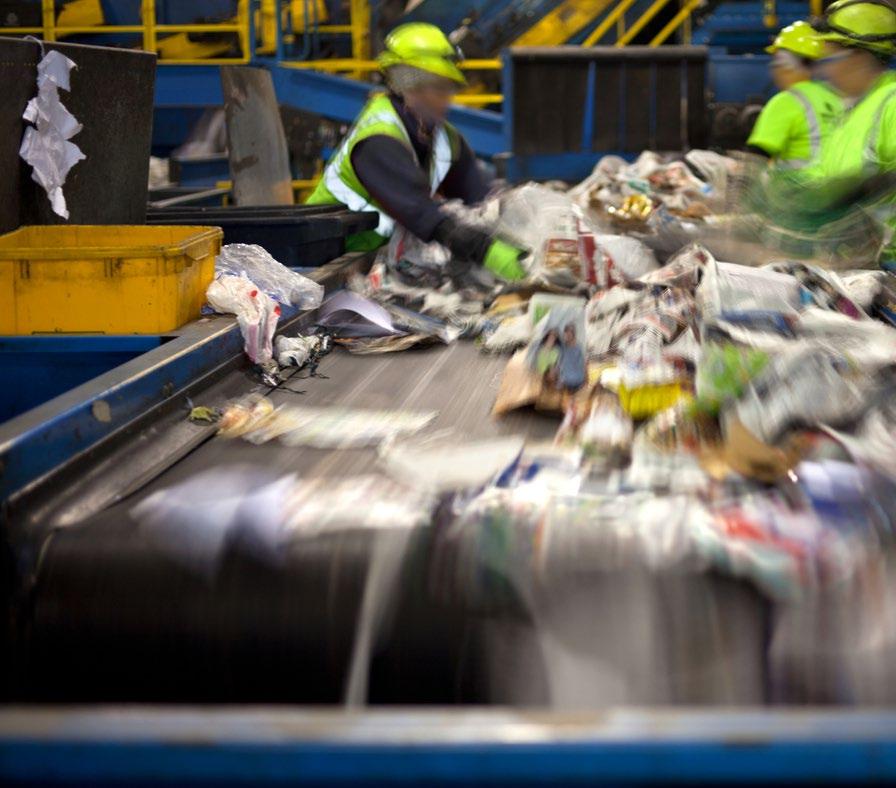
In recent years, sustainability has evolved from a buzzword to a fundamental principle that shapes the strategies of businesses, investors, and policymakers alike. The interconnected issues of Environmental, Social, and Governance (ESG) criteria, sustainability, and climate change are at the forefront of global discussions and will play a pivotal role in shaping the future of our planet.
Environmental, Social, and Governance (ESG) criteria have become integral to investment decisions, and their importance will only continue to grow. In fact, so much so that the concept it encapsulates, sustainability, has become a key watchword for South African corporates, as they grapple with both the public’s demand for environmentally friendly products and the demands of ESG reporting requirements. There is no doubt that
the combination of this is helping to drive a culture change across society, leading businesses to work together to identify innovations that address key issues, while meeting changing legislative demands.
The beauty of ESG lies in its increasing ability to integrate into investment strategies and corporate decisionmaking. In fact, what we are seeing is that investors are not only seeking

financial returns but demanding ethical and sustainable practices from the companies in which they invest. And this is good news for our global sustainability and climate crisis, as now businesses are prioritising ESG considerations as a means of attracting capital and securing long-term viability.
However, I believe that even with ESG reporting prioritisation taking place, we still need to see a greater shift in thinking from businesses around their
production processes and broader value chain - from the traditional linear production process - the takemake-dispose model - towards one that aims to reduce all unnecessary waste materials, and actively reduces the consumption of energy and raw materials to feed this back into the cycle.
This is the definition of the ‘Circular Economy’ model, where waste created in one industry is re-purposed for use in other areas of industry, and the economy, and where disposal is the final option, rather than the immediate go-to.
Of course, this means looking deeper than the obvious solutions and finding ways to unilaterally work together to ensure solutions available are viable and cost effective. Understanding too, that this is a massive strategic shift, which requires cross-functional collaboration, long-term planning a nd implementation.
South Africa has already indicated the intention to gain access to higher levels of climate financing with a goal of achieving $8 billion per year by 2030 and we are seeing strong legislation coming through the system that examines end of life productsand what should be done with these (addressing a key waste such as plastic for example) - as well as the future removal of organic waste from landfill disposal.
In fact, our country’s fixed target for the reduction of greenhouse gas emissions is 398-510 MtCO2e by 2025, and 350-420 MtCO2e by 2030, with the objective of reaching net zero emissions by 2050 through the Low-Emission Development Strategy. However, while we are making headway in many areas, we are still currently at number 96 on the Climate Vulnerability Index, meaning we are still largely a climate vulnerable society.
However, there are solutions that can change this reality for our society and drive sustainability. For us, effective waste management and the ability to use waste in creating a circular economy provides a critical pillar to addressing this reality. Not only does proper waste management ensure that we can reuse and repurpose the growing mound of waste, but it
ensures that, where waste cannot be repurposed/recycled, it can be - as a last resort – sent to a compliant landfill for safe disposal.
Without a doubt the waste sector plays a fundamental role in meeting the country’s Sustainable Development Goals (SDGs), tackling not one, but at least 6 of the 15 goals in total. Goals 6 (Safe water), 7 (Clean energy), 13 (Climate action) and 11 (Sustainable cities) being the most prominent in this regard.
However, we have a conundrum where business, community and at some levels of government - are under informed about the potential of wellmanaged, compliant, and innovative waste management solutions. The reality though is that with a population of 61 million people and growing by around 1% a year, and with each person generating around 2 kgs of waste per day, we are heading towards a waste disaster if we don’t start creating solutions and ensuring that all parties are educated as to why effective waste management is so important.
As a starting point, let’s discuss the impact of wastewater management on driving sustainable water supply. With 7 of the 13 major water systems in South Africa predicted to be in deficit by 2040 and the demand for water expected to exceed available supply by 2030, we need to find solutions. In our experience wastewater management can result in the redistribution of water into the environment for irrigation and dust suppression, as well as to replenish rivers and catchments in our water infrastructure networks. Furthermore, treated to the required standards, we have found that nearly all effluent can be recycled, if done properly, creating a strong solution for water sustainability and access – water that was previously not deemed safe for consumption.
On the other hand, waste can also help support how we tackle the energy crises, but it needs solid business, government and industry collaboration to see it to fruition. We know that Just Energy Transition’s (JET) provision focuses on achieving “Net Zero’’ carbon emissions by 2050, by exploring alternative sustainable options, and if we consider that the global waste-toenergy market is expected to grow

from 28.4 billion U.S. dollars in 2017, to almost 43 billion U.S. dollars in 2024, waste presents a large economic opportunity to establish new industries and/or revenue streams – while also meeting our SDG Goals. Sounds strange to use waste for energy, but it can be achieved through three key processes
– thermal, biological and physical. For each process, there are a variety of technologies available to convert different types of waste to energy such as electricity, steam or gas, which to my mind, presents us with multiple layers around how we can change South Africa’s energy crisis.
Let’s not forget the impact of what recycling can do for our sustainability too. South Africa consumed around 3.4 million tonnes of packaging in 2021 (so you can imagine how much higher these figures are today), with approximately 54% collected for recycling – which is a good start. However, if we consider that each person is estimated to generate around 2 kgs of waste per day, our recycling efforts are still not near close enough to what we need, especially as around 90% of all waste is still being disposed of to landfill or illegally dumped, a lot of which could be re-used as alternative resources, when managed effectively. While some might say that South Africa is making large headway in our fight against climate change, we must consider that we are in a juxtaposition between fighting climate change, and fighting economic turmoil – and which one comes first, or can they coexist? While we would like to believe that climate forms top of the agenda, we must be aware that the very agenda items needed to drive effective climate change are the same ones where we face some of our largest challenges including water and energy as key components.
This certainly doesn’t mean we aren’t committed to it, but rather that our challenges currently outweigh the obvious opportunity and so, simply put, we need to start digging deeper to find alternative means to addressing our challenges to improve our climate action.The good news is that climate action and economic preservation can coexist and in fact, should. Waste and effective waste management presents a large economic opportunity to establish new industries and/or revenue streams as well as meet our country’s SDG Goals and companies ESG targets, while meeting growing and necessary climate action agendas.



standards - our point of differentiation is our service,” says Justine Bufe, Managing Director at First Impression Labels. “We pride ourselves on our approachable team, merging professional and personal into one seamless experience. Our clients are at the centre of everything we do.”
In December 2023, First Impressions Labels proudly joined the All4Labels Global Packaging Group, a world leader in sustainable and digital packaging solutions. “As part of this global Group, we are now equipped to connect brands and consumers with cuttingedge labelling solutions in South Africa and beyond.” Justine explains that together with All4Labels’ global reach and expertise, First Impression Labels is transforming the packaging industry and setting new benchmarks for service and innovation excellence.
Pharmaceutically Audited Labels
• Peel and Read Labels
• Scratch Card Labels
• StarFloat™
• StarWash™
• StarFlake™
• Variable Date Labels, Sleeves and Wraparounds
1997 - Founded by Vaughan and Sandra Cumming with a single press
2005 – FIL diversified into shrink sleeves and wraparound labels and bought the first Mark Andy and received our ISO9001 accreditation
2011 – Became the first labels company in the world to have all 3 performance services Mark Andy presses

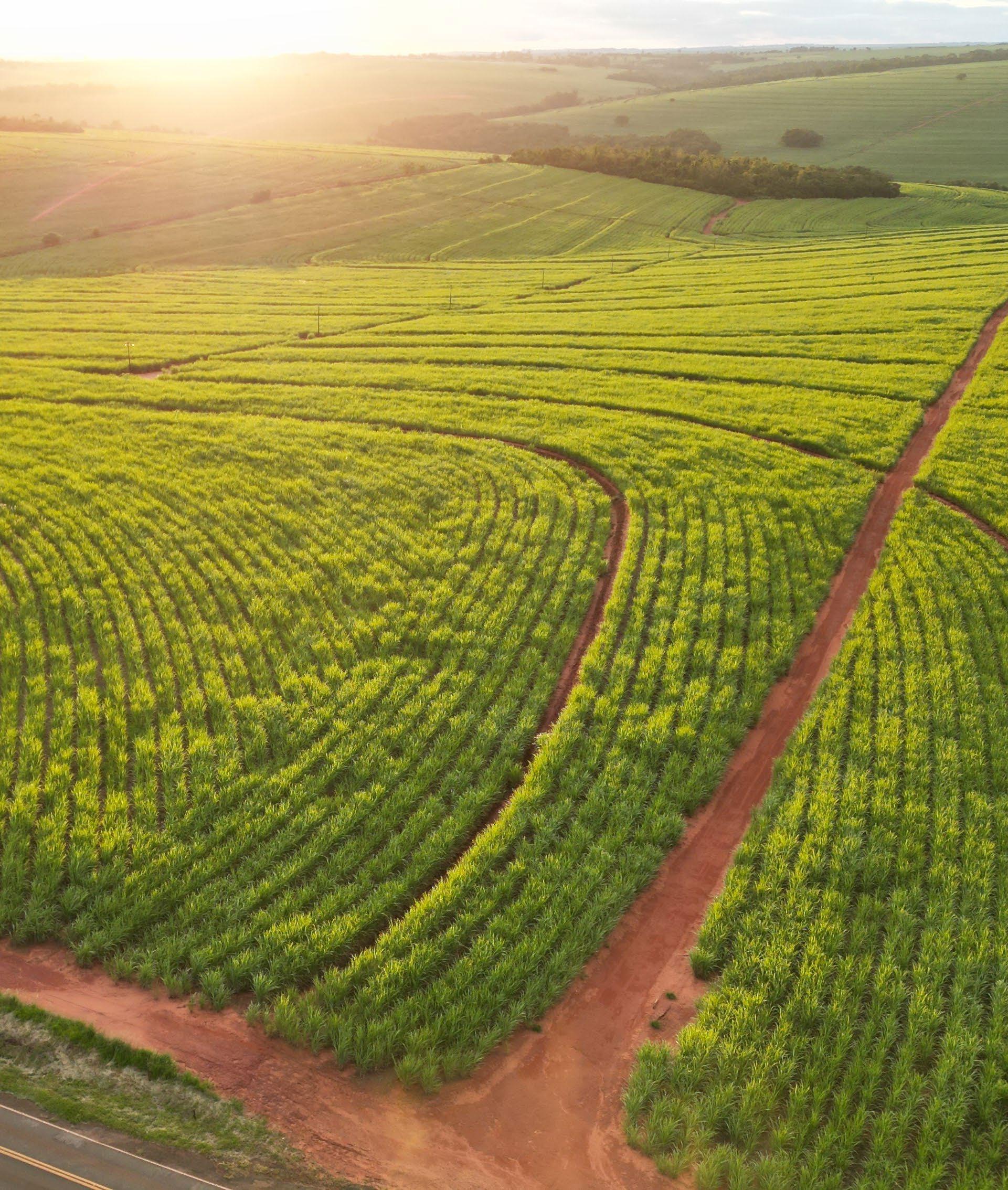
forward to a
By Sinazo Mkoko
“The Earth will not continue to offer its harvest except with faithful stewardship. We cannot say we love the land and then take steps to destroy it for use by future generations,” - Pope John Paul II
In a time where the world continues to face climate change, it has never been more crucial to launch green initiatives to prote ct the environment. The South African government is doing what it can to ensure that we all play a role in protecting our environment and ensuring that there will be a viable future for the next generations.Here we list sustainability initiatives that are being implemented by the South African government.
Limiting fishing in Algoa Bay
Starting in September 2023, an agreement was signed to limit fis hing in Algoa Bay in order to protect African penguins, which, according to the Department of Forestry, Fisheries and Environment, are critically endangered.
The department, together with several conservation organisations represented by BirdlifeSA, WWF, the Endangered Wildlife Trust, scientists from Nelson Mandela University, and lead representatives from the Eastern and Southern Cape Pelagic Association (ESCPA), have agreed to exclude “fishing in 42,17% and 93% of core penguin foraging areas around St. Croix and Bird Islands, respectively.”
Minister of Forestry, Fisheries and the Environment, Barbara Creecym, thanked the organisations for their investment in offering compromise and reaching consensus. “All representatives found common ground in prioritising a healthy and sustainably used Algoa Bay ecosystem. Stakeholderowned decisions are a first prize in environmental management an d are welcomed,” she said.
In December 2022, Hon. Creecym appointed an Expert Review Panel to assess the science related to managing the interactions between the “small pelagic (anchov y and sardines) fishery and the conservation of African penguins.”
“The Report recommended that penguin colony-specific discussions take place as each colony has a unique fishery and ecological dynamics, including that fish cat ch dynamics and replaceability vary at different colonies,” she stated.
“As announced upon the release of the Panel’s Report, any consensus on fishing limitations will be implemented as they are agreed. This agreement for St. Croix and the Bird Islands is such an agreement.” Hon. Creecym.


In June this year, during the visit of the Netherlands Prime Minister, Mark Rutte, and the Prime Minister of Denmark, Mette Frederiksen, to His Excellency President Cyril Ramaphosa, a Heads of Agreement was concluded with the intention to launch a new ‘SA-H2 Fund’. In a joint statement released, it was stated that SA-H2 is an innovative blended fina nce fund that will support and hasten the growth of South Africa’s circular economy and green hydrogen sector.
This is a partnership between the private and public sectors, with key supporters being Climate Fund Managers (CFM) and Invest International B.V. (II) of the Netherlands, Sanlam Limited of South Africa (Sanlam), the Development Bank of Southern Africa (DBSA), and the Industrial Development Corporation of South Africa (IDC), in collaboration with other strategic partners.
They stated: “The SA-H2 Fund initiative will aim to secure US$1 billion in funding, to be raised directly in South Africa or indirectly via other channels. A partnership of private and public enterprises and international and domestic institutions, SAH2 r eflects the immense potential of blended finance in tackling the climate crisis. Its focus wil l be to fast-track the mobilisation of funding towards the development and construction of large-scale green hydrogen infrastructure assets across South Africa.”

Good Green Deeds campaign
It was in 2019 that His Excellency, President Cyril Ramaphosa, launched the Good Green Deeds campaign, a nationwide initiative to encourage South Africans to take responsibility and take action to keep our environment clean. Through this initiative, the government is mobilising every citizen and social partners to act now to be a good Samaritan for green deeds.
The aim of this initiative is to, according to the government, change people’s attitudes and behaviours towards waste and its management and start taking charge and responsibility for keeping their neighbourhood clean.
Speaking during a clean-up operation in the Free State province, the Deputy Minister of Forestry, Fisheries, and the Environment, Makhotso Sotyu, said the prevalence of ineffective waste management practices is being witnessed in many parts of the country.
“This trend, unfortunately, affects the well-being of communities, as it has indeed resulted in the mushrooming of pockets of illegal dumping and littering sites,” said Hon. Sotyu.
“All South Africans have the responsibility to ensure that their environment is clean, green, and habitable. Poor waste management poses health and environmental risks. Everyone can do something to attain clean living spaces,” she said.
His Excellency President Ramaphosa said: “The objective of this specific programme is to drive towards a clean South Africa that is free of litter and illegal dumping. This is a nationwide environmental programme that proposes a simple but bold blueprint for what we all can do as individuals, organisations, communities, and as a nation to bring about the realisation of a cleaner and more environmentally presentable country.”
Invasive alien plants (IAPs) are known as the biggest threat to not only the country’s biological biodiversity but also water security, the ecological functioning of natural systems, and the productive use of land. It was for this reason that WfW started an initiative to clear these alien plants, working in partnership with local communities, government departments including the Departments of Environmental Affairs and Tourism, Agriculture, and Trade and Industry, provincial departments of agriculture, conservation, and environment, research foundations, and private companies.
Since its launch 28 years ago, more than one million hectares of invasive alien plants have been cleared through the programme, providing jobs and training to approximately 20 000 people from among the most marginalised sectors of society, with more than half of them being women


This initiative is an Expanded Public Works Programme (EPWP) aimed at providing work opportunities to young men and women. They do not only fight wildfires across the country but also globally. They also maintain, upgrade, and improve 19 plantations in the country.
By using integrated fire management solutions, WOF addresses wil dland fire prevention and control to improve sustainability and protect people, properties, and the environment at large. Their Forestry Support Programme aims to restore and protect government plantations and infrastructure against “fire and damage, by employing people fro m surrounding communities to minimise third-party claims.”
With a mandate that covers three subsectors: biodiversity/protected areas, integrated coastal management and pollution, waste, and impact assessment, the Green Scorpions are formally known as Environmental Management Inspectors (EMI’s). Section 24 of the Constitution states that every individual has the right to an environment that is not harmful to their health and wellbeing, and the Green Scorpions ensure that this legislation is enforced.
They investigate environmental crimes, including the illegal dumping of hazardous and toxic waste, illegal developments inland and on the coast, and incide nts of significant pollution or ruin of the environment.
This is a presidential programme that aims to support the count ry’s economy while reducing its environmental footprint.
The programme has more than 20 initiatives under four categories: bulk industrial waste, municipal waste, product design and waste minimisation and chemicals. There are ongoing action plans that need to deliver results by the end of this fin ancial year.

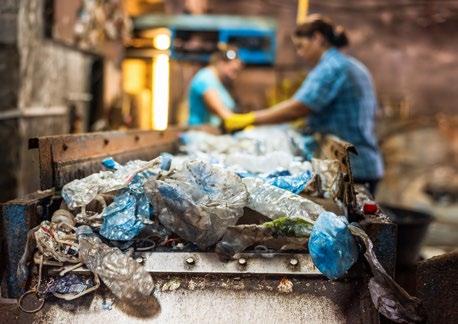


By Jessie Taylor

South Africa’s logistics sector is at a crucial crossroads, where the urgency of decarbonisation meets the challenges of finding viable alternatives to fossil fuels. In a world increasingly prioritising sustainability, freight trucks, which contribute significantly to global carbon emissions, must transition towards greener options.
Electric vehicles (EVs) provide an alternative for passenger transport. However, freight logistics requires more innovative solutions due to the demands of longdistance travel and heavy cargo loads. Among the key alternatives currently being explored are hydro treated vegetable oil and hydrogen fuel.
Heavy-duty trucks are responsible for over 40% of global freight emissions, making them a critical focus for decarbonisation efforts. One of the alternatives under consideration is hydrotreated vegetable oil (HVO). HVO is a biofuel that offers a seamless transition for logistics companies since it can be used in existing diesel engines without requiring modifications. The purest form of HVO, HVO100, can reduce greenhouse gas (GHG) emissions by up to 90% over its lifecycle compared to conventional diesel. Similarly, hydrotreated esters and fatty acids (HEFA), another biofuel with high energy density, also hold potential as a sustainable solution. However, the viability of both HVO and HEFA is limited by supply constraints and higher production costs. While these challenges remain, their potential to
significantly reduce carbon emissions without requiring a complete overhaul of vehicle fleets makes them attractive options for the future of sustainable transport in South Africa. Hydrogen, another option gaining traction, especially for longhaul freight, offers two potential solutions: Fuel Cell Electric Vehicles (FCEVs) and hydrogen-powered internal combustion engines (ICEs). FCEVs use fuel cells to generate electricity, powering the trucks’ electric motors. These trucks have longer ranges and shorter refuelling times than battery-electric vehicles, making them well-suited for the long distances typical in freight logistics. Meanwhile, hydrogen ICEs offer a more familiar setup, burning hydrogen in modified engines similar to traditional diesel models.
Yet, the hurdles for hydrogen are steep. Hydrogen trucks cost up to four times as much as conventional diesel trucks, and South Africa lacks the necessary refuelling infrastructure to support widespread adoption. Still, despite these challenges, hydrogen remains a promising long-term solution for freight logistics as global and local efforts toward decarbonisation intensify.
The South African government is acutely aware of the need to modernise and decarbonise the country’s transport sector. During her 2024/25 Budget Vote Speech, Minister of Transport Barbara Creecy outlined a series of initiatives designed to address the challenges in the sector and promote sustainable transport solutions.
One of the key initiatives is the creation of the National Logistics Crisis Committee (NLCC), which was formed to improve the operational performance of freight rail and ports, implement reforms to modernise the transport system and facilitate regulatory changes to support sustainable procurement and funding.
South Africa’s rail network also holds significant potential for reducing carbon emissions and improving transport efficiency.
“Building the climate resilience of our ports, road, and rail networks is both a necessity and a new opportunity for investment, growth, economic inclusion, and job creation. Contributing to reducing greenhouse gas emissions in all modes of transport will become a necessity once the new Climate Bill is signed into law,” said Minister Creecy.
Source: News24 / Department of Transport
As South Africa looks to the future, the transport sector will be transformed not only by the shift to green fuels but also by advances in digital technology. Real-time tracking of shipments, artificial intelligence in traffic management, and the potential for self-driving vehicles and drones are all on the horizon. These innovations will streamline logistics, reduce emissions, and improve safety across the sector.
Minister Creecy also highlighted the importance of investing in green transport infrastructure, including the promotion of biogas and green hydrogen as alternative fuels. The Department of Transport’s Green Transport Strategy aims to promote low-carbon technologies and extend the rail network as a more sustainable public transport option. Implementing this strategy will be a priority

Subscribe to Topco Media’s official Weekly newsletter as we keep you up-to-date with the latest business blogs and articles.
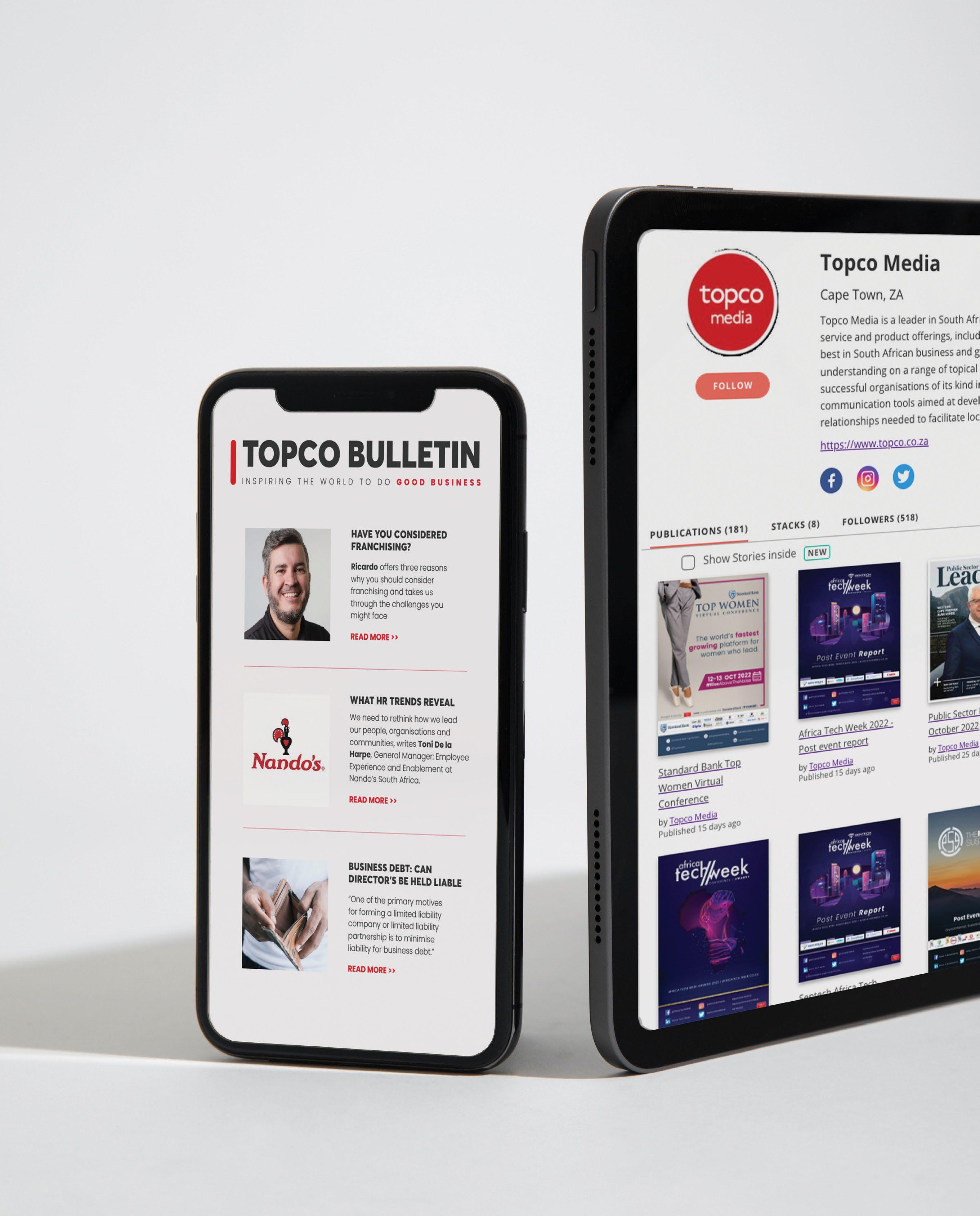



Africa Data Centres, a colocation data centre provider, has the largest network of interconnected carrier- and cloud-neutral data facilities on the continent. As CFO Finhai Munzara explains, they offer their customers a secure environment to host their servers. With a presence in economic hubs across the continent, Africa Data Centres, a division of the Cassava Technologies Group, their focus on operating sustainably and assisting their clients to reach their own decarbonisation targets reflects their forward-thinking approach which, coupled with their expertise and record of excellence, will continue to drive their growth. Here Finhai takes us through how they’re making their business more sustainable and shares the benefits of the ADC Channel Programme.
What is the benefit of the ADC Channel Programme?
The real goal of it is to foster collaboration amongst different partners. These partners are internet service providers, carriers, telecommunication companies, system integrators and other ICT and data centre providers. Essentially what this does is enable some of these partners to offer additional products to their customers because they're able to offer them hosting services. We've put in the infrastructure which we manage and run at 100% availability. And we're

effectively providing and giving access to that infrastructure to some of our partners who now are able to offer their customers some of these hosting services.
It extends to all kinds of partners because our data centres are designed to meet the needs of big hyperscale providers, which are all your big cloud providers, but also to wholesale and enterprise clients. If you're an internet services provider and you want to offer data storage services as well to your customers, you're able to do that whilst taking advantage of our infrastructure and of course the operational excellence that's in our data centres to make sure that your customers always have access to hosting services, always have access to storage, and effectively the same availability that we would offer a big cloud provider.
Please take us through some of your ESG policies
We have an overarching ESG kind of framework across the Cassava group that applies to ADC as well as its divisions. We have different needs, so we have different focuses. One of our big supply chain items, as I've mentioned, is power. We've started that with making sure that our data centres are as efficient as possible. And so we've done quite a lot of work around rolling out a data centre infrastructure management system. This is effectively an AI system that monitors the
environment. We have also looked at how much self-generating we can do, and this is really asking how many solar panels we can put on our own sites. And the third leg of that, which we announced a few weeks ago, is entering into power wheeling agreements with independent power producers and we signed 20-year agreements with some power producers to effectively build large-scale solar farms, effectively be the off-takers of that, and effectively have that renewable energy credited to our data centres and ultimately our customers. So that's the road we're on, and we'll continue to kind of drive through all of that. So that's a key one for us because that's our biggest supply chain item.
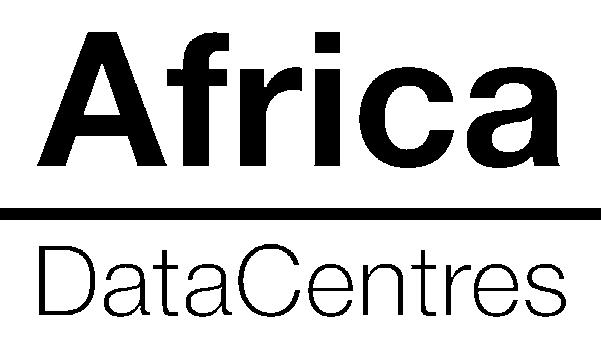
Address: Africa Data Centres Head Office, 401 Old Pretoria Main Road, Innovate Park, Midrand 1685, South Africa
Email: enquiries@africadatacentres.com
Facebook: Africa Data Centres
X/Twitter: @africa_dc
LinkedIn: Africa Data Centres


By Rowland Gurnell, MD
While political leaders and governments engage in fiery debates over climate change and environmental legislation, business leaders are being forced to take their own stand on environmental sustainability. In many instances, the increasing focus on ‘going green’ and cutting down on carbon emissions is not being driven by a philanthropic impulse to save the rainforests – but rather by an awareness that environmental sustainability translates into commercial sustainability.
Indeed, in both developing and developed economies, savvy business leaders are quickly recognising that embracing environmentally friendly operational practices is now a business imperative – and will soon translate into a key competitive advantage. This holds true across almost every industry and sector, and for businesses of all sizes. Within the property and property management sector, there is ample evidence to suggest that embracing renewable energy, for example, will produce cost savings and other major commercial benefits in the long term.
Moreover, South African businesses and property stakeholders are faced with deepseated political, social and environmental risks – all of which can be mitigated to some extent by achieving greater energy and resource efficiency.
Let’s take a closer look at how renewable energy in particular can support business sustainability for property companies and landlords.

For most businesses, simply keeping the lights on is a big expense – and is becoming even more expensive with Eskom’s steep tariff hikes. Many analysts warn that depending on the beleaguered power utility is a business risk in its own right (apart from the crippling cost of electricity). With this in mind, property managers and landlords should undoubtedly be exploring alternative and renewable forms of energy. Advancements in solar panel technology, for example, are quickly making solar energy a more viable and attractive option. While the initial cost of implementation will be high, experts assert that solar panels can make an immediate and significant impact on power consumption.
Beyond exploring alternative energy sources, property managers can also make less dramatic changes to cut down on energy usage. For example, the 2016 CSR Report from retail group Boots stated: “LED lighting replacements in stores in the UK… accounted for a consumption reduction of around 7.9 million kilowatt hours, enough to power over 1 700 UK households for a year.”
As noted above, local businesses can no longer rely on a steady supply of power from Eskom. Widespread load shedding
earlier this year wreaked havoc on industry and overall economic activity, with many businesses still recovering from the economic fallout. Eskom’s fragility, coupled with increasing resource scarcity (such as water scarcity), means that property managers have to take bold and proactive steps to achieve business continuity today.
While it may seem like an intimidating task, property sector leaders can learn from best practices that are already being implemented within global manufacturing, for example. Multinational brewer Carlsberg, for one, has a goal to source 100% renewable electricity at its breweries by 2022. In 2016, 45% of its power came from renewable sources. The company notes that one initiative involved the installation of 8 000 solar panels at a site in China, which meet up to 20% of the brewery’s needs.
Solar, in particular, is proving to be an attractive option for businesses and organisations looking to cut emissions and achieve energy independence. Renewable energy accounted for two-thirds of new power added to the world’s grids in 2016, the International Energy Agency said, but the group revealed solar was the technology that stood out. As the UK’s Guardian reports, “new solar capacity even overtook the net growth in coal, previously the biggest new source of power generation.”
WIN CUSTOMERS WITH SUSTAINABILITY PRACTICES
There is growing evidence to support the notion that reducing energy consumption and using renewable energy sources demonstrate good corporate citizenship. This is something that business leaders can maximise, while creating benefits for the environment and communities they operate within.
The consumer goods juggernaut Unilever is an example of this in action. Unilever’s ‘Sustainable Living Plan’ aims to “halve the environmental footprint of the making and use of our products” by 2030. The company stated that its ‘Sustainable Living’ brands accounted for 60% of its growth back in 2016.
For South Africa’s property managers and landlords, embracing renewable energy and sustainable business concepts might seem somewhat irrelevant in an exceedingly tough economic environment. Yet by planning ahead and making strategic investments, becoming energy efficient and energy independent could be the key to success in the long term.
By Dr Mmaki Jantjies

South Africa has been experiencing seismic shifts in weather patterns, from flooding in KwaZulu-Natal to heavy snow in Eastern Cape, highlighting the global impact of climate change. How is the growing use of e-commerce, and the numerous delivery vehicles on the road, contributing to this growing climate challenge?
For many professionals and working parents, the usefulness of the platform economy cannot be overvalued. While juggling many other tasks, digital apps allow people to acquire groceries, pay for services and transport goods at the click of a button. Whether craving lunch or requiring delivery of a parcel, or needing groceries delivered quickly to the house for the same day, one tap on the phone now provides consumers with access to courier services. Consumers have grown
accustomed to living in a world of “now”, with a high demand placed on suppliers to deliver meals, groceries and goods at great speed. According to Heyns and Killbourn (2022)1, about 68% of customers reflected that they now were shopping online since the impact of the pandemic in a study by Mastercard.
Thus, with the growth of online marketplace services, so has there been a parallel growth in the goods delivery industry, with motorbikes being some of the most economic options of delivery. Delivery people can often be seen navigating traffic from their motorbikes in metropolitan urban settings with the objective of meeting the immediate needs of city customers. Moreover, this boom in delivery services has created muchneeded jobs, exerting a significant impact on the economy. While more and more consumers require on-demand services
provided at the fastest convenience, this convenience can come at a cost to the environment and our communities.
One study by Ntuli et al., (2024)2 on the part of the Green Transport Energy of South Africa concludes that while the transport sector as a whole only contributes 11% of national carbon emissions, road transport in particular contributes 90% of this total. Factors such as engine type and technology, maintenance history, driver patterns and traffic congestion have an impact on the quantity of emissions. For instance, motorcycles remain some of the lowest emission producers, yet their increase on the roads contributes to the already heavy reliance of goods transportation on the roads. Several e-commerce operators locally and internationally have begun to factor these challenges into their fleet planning process. More and more companies are now considering how an increased number of delivery transport vehicles contribute significantly to urban air pollution and greenhouse gas emissions.
Outside of South Africa, some e-commerce entities are also shifting. Indeed, various countries and organisations have taken innovative approaches towards reducing e-commerce impact on carbon emissions.
In China for example, the e-commerce multinational Alibaba has invested in electric vans to make deliveries as well as providing robots to support last-mile delivery. Similarly in Germany, DHL has made a similar electric vehicle (including e-bikes and e-cargo bikes) investment to reduce congestion and related emission and noise pollution. In 2023 the organisation reported a reduction of 436 tonnes of CO2 emissions on a yearly basis with a mission to achieve net zero emissions by 2050. Meanwhile, other organisations such as Yamato Transport based in Japan are leveraging AI-powered route optimisation software to minimise delivery distances and fuel consumption. Yamato has achieved reduced delivery times, while reducing fuel consumption and CO2 emissions. And in South Africa, Uber amongst other interventions is pioneering a new model in South Africa by investing in scooters that feature swappable battery packs, significantly lowering their carbon footprint. Uber also reflected on being able to attract and gain new customers who greatly value environmentally friendly delivery options. Uber also has a key mission to be a zero-emission organisation by 2040. There

have been various incentives towards organisations investing in eco-friendly delivery options, these include amongst others regulation requirements such as the European Union’s CO2 emissions standards, in the USA the government offers tax incentives for new fleet acquisitions.
In cities such as London there has been the introduction of zones demarcated for low-emission delivery options. Similarly in the African region, there has been growing efforts on policies to encourage sustainable e-commerce delivery such as through tax incentives on e-vehicles and the investment and partnerships in startups which produce electric vehicles. One example of a startup in South Africa offering options to traditional motorbikes or vans is Green Scooter, they design and produce electric scooters and three-wheeled delivery vehicles focused on ensuring affordable and sustainable mobility.
Indeed, with this late mover advantage in e-commerce that many emerging markets face, there is an opportunity to ensure sustainable approaches to e-commerce growth. Continuous investment on the part of organisations based locally, coupled with incentives and policies to support the transition towards green delivery options can thus provide innovative approaches to reducing the local impact on climate change.
1. See research by Heyns, G. and Killbourn, P(2022). Online shopping behaviour and service quality perceptions of young people living in South Africa: A COVID-19 perspective. Journal of Transport and supply chain management (16).
2. See research commissioned by the Green Transport Energy of South Africa https://bnrc.springeropen.com/articles/10.1186/s42269-024-01192-4#:~:text=The%20research%20approaches%20the%20study,Transport%20sector%20by%20creating%20a
By Nicholas Fordyce
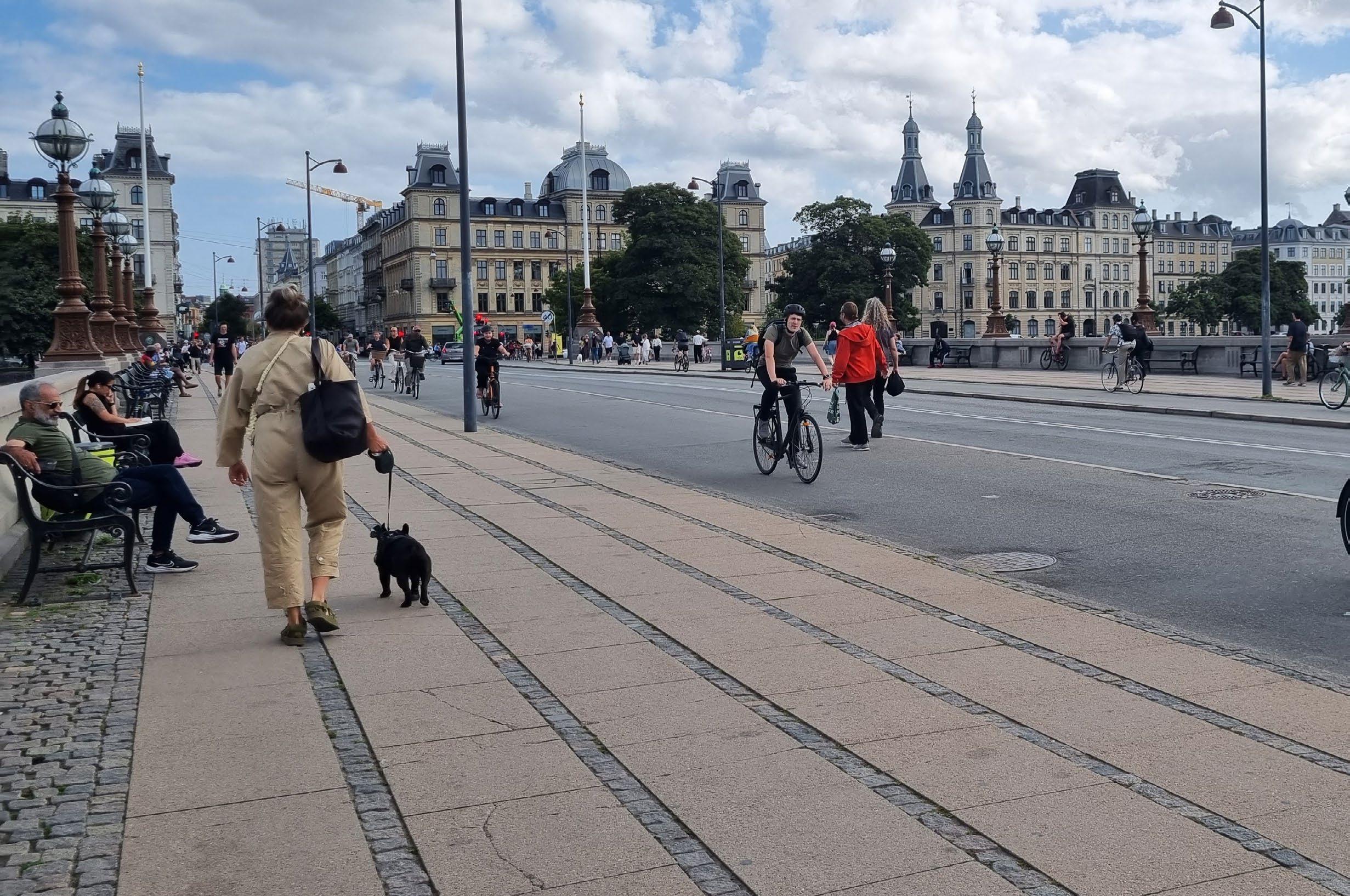
The World’s climate is changing. Climate variability has always been a thing; but anthropogenic climate change has not. Rapid industrialisation has led to significant changes in our atmosphere’s chemistry and the resulting climate changes are occurring at a rate and severity that risks exceeding the adaptive capabilities of the ecosystems and species which we are reliant upon for our own prosperity and, indeed more ominously, our survival.
Alarmingly, climate change is just one component of the Triple Planetary Crisis which faces us. Widespread pollution, on land, in our oceans and rivers, and in the air we breathe is another, and a steep decline in biodiversity is the other.
None of this should really be news to anyone. Neither should the fact that as South Africans, we’re in line to be on the more severe receiving end of the aforementioned climate
changes. According to the IPCC (click), we already frequently experience droughts, floods, and other extreme weather events, with evidence that the frequency and intensity of such events will increase yet more!
In searching for solutions to the triple planetary crisis, most agree that we must embrace a green transition. Whilst there are a number of different definitions for what this means, a few basic tenants hold true. A green transition necessarily implies a development pathway towards carbon neutrality that is also socially just (also referred to as a Just Transition); ensuring no one is left behind, whilst aiming to redesign the critical components of any economy including energy production, water and sanitation infrastructure, transport, food production and waste minimization and management such that each function in cleaner, more sustainable ways. In South Africa,
the just transition imperative has now been entrenched and embraced by most major stakeholder groups. There is broad consensus among social partners that climate change will impact people and the economy, and that a just transition to a sustainable, cleaner, and more inclusive economy is required (click).
The Presidential Climate Commission (PCC) highlights that “a just transition aims to achieve a quality life for all South Africans, in the context of increasing the ability to adapt to the adverse impacts of climate, fostering climate resilience, and reaching net-zero greenhouse gas emissions by 2050, in line with best available science” (click). It is therefore incumbent upon us to take lessons where they are available
Lessons from Denmark
One of the aspects of travel that has always excited me is the inevitable requirement to use
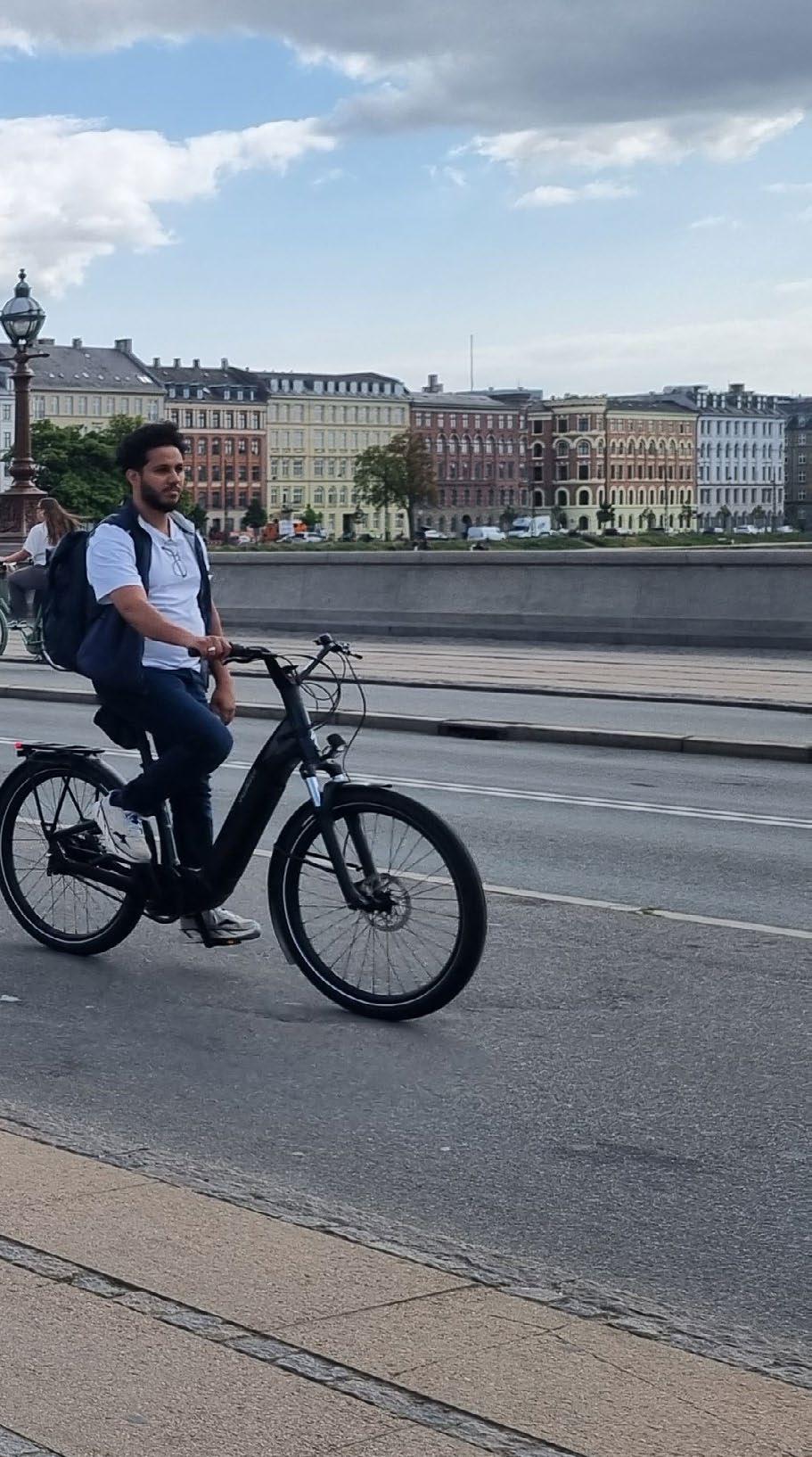
different modes of transport to get around. I’m probably a relatively extreme example of this; fueled by my interest in nature, and birds in particular, I’ve been extremely fortunate and intentional in seeking out pretty exotic and remote locations in search of unusual wildlife, and this has inevitably triggered the need to use unusual modes of transport. Yet even for the less intrepid traveler, varied transport requirements should be anticipated.
Copenhagen wouldn’t fall into a list of cities I’d classify as particularly intrepid or exotic, but it does still fit the aforementioned travel pattern. During a three-week visit to the city in September, as part of a study tour to learn about what Denmark is doing to adapt to, and mitigate against, climate changes, mobility was a feature that stood out.
Copenhagen has to be one of the easiest cities in the world to move around in. It is not the biggest city, but more importantly, public
transport is a breeze to use, and there are a variety of ways to get around. During my three weeks in Copenhagen, I walked a lot (according to my Strava app, over 120 kilometers). As a pedestrian, it’s no exaggeration to say that the biggest risk to one’s safety isn’t cars, buses or even trains; it is the hordes of cyclists that make use of the generous and numerous cycle lanes that cut through the city!
And so a key lesson from my Danish autumn emerges; ease of mobility; unlocking a city.
Copenhagen’s urban design has intentionally prioritised cyclists and pedestrians. Most major roadways include pedestrian and cycling lanes, often wider than those allocated to cars and buses, and the latter are required to give way to the former, without exception.
There is also a network of highly efficient, relatively affordable, electrified rail alternatives. I used the metro a lot; Copenhagen’s (mostly) underground rapid local train service. The metro runs 24/7 and, remarkably, trains can be caught at intervals usually 2 – 4 minutes apart. The convenience is extraordinary. Moving around in a new city can be intimidating; but the metro in Copenhagen consists of four different lines and it takes surprisingly little time to figure out which one you need to be on, and in which direction you need to be heading. Then it’s just a case of hopping on and off as required.
The S-trains, another inner-city train offering, are described as a hybrid urban-suburban train system. They run less frequently than the metro, with trains every 7-10 minutes, but, critically, link slightly further suburban areas with the city centre. In addition to the trains; buses are also very common throughout the city. One particular bus route, the 5C bus, actually runs entirely on biogas that is produced via the treatment of municipal organic waste; making it a carbon neutral bus offering.
These buses emit 72% less NOx and 33% fewer particles and they also make less noise (click). They resemble the bus rapid transit (BRT) system; an international concept known from European cities like Paris and Barcelona
Collectively, public transport infrastructure is comprehensive, and provides a plethora of clean, rapid and affordable ways to get around. It’s little wonder that most residents make use of public transport, despite the relatively high standard of living experienced by most Danish folk.
For those that do opt for private transport, there are challenges and an increasing number of reasons not to do so. Commuters using their own transport are discouraged from using greenhouse gas emitting internal combustion engine (ICE) vehicles within the city. This has been achieved through the establishment of “low emission zones” (Miljozøne) which have been adopted by five municipalities within Denmark; including in Copenhagen, Frederiksberg, Odense, Aarhus and Aalborg (click). The regulations stipulate that diesel-powered passenger cars, lorries, buses and vans must

have a particulate filter fitted to the vehicle in order to enter the low emission zones. This applies to both Danish and non-Danish vehicles. Enforcement is carried out by the Danish Environmental Protection Agency and fixed-penalties of between DKK1 500 – DKK12 500 apply (to put this in context, at the time of writing, these fines would equate to between R3 850 – R32 500 – a very steep penalty!).
Whilst these regulations are a useful tool, they do not operate in isolation. Infrastructure in Copenhagen is geared towards supporting a transition towards electric vehicles (EVs). Charging ports are incredibly common in the city, at least when considering the proportion of available parking spots that have and don’t have charging ports. The combination of low emission zones and readily available charging stations has played a significant role in accelerating the uptake of EVs in Copenhagen.
Moreover, electricity can be relatively cheap; making charging your EV an altogether more affordable option than filling your vehicle with diesel. For those looking to save on transport costs, a website like this one, which shows the real time energy production and consumption of the country, will
help inform the end user of when it is a good time (cheap) to charge your vehicle, and when it isn’t. Even for those who aren’t particularly discerning about when they charge their vehicle, the reality is that the abundance of clean energy sources that make up the Danish energy mix, results in a vehicle that is powered by clean energy.
Parking is another mechanism that the Danes have used to discourage private passenger vehicle use. In urban contexts, parking bays often take up a disproportionate amount of space; often to the detriment of much needed low-cost housing close to a city’s economic hub. In Denmark, and in Copenhagen particularly, parking has been made extremely expensive, acting as yet another reason not to opt for private vehicle use (click).
It is easy to look at Denmark and cast judgement on our own transport inefficiencies at home. That would be unfair and lacking suitable context. For one thing, Copenhagen’s topography and generally mild climate underpins its suitability to cyclists and walkers. The city is incredibly flat, meaning cyclists and walkers very rarely have to exert themselves going up a hill. Contrast this with certain African cities and it’s easier to see how we may face more challenges, including abiotic ones, in rolling out such a system. Nevertheless, there
are lessons to take from Denmark and improving mobility should not be overlooked as a critical part of a green transition. In June this year, I wrote about “Driving towards a Just Transition”, and highlighted the complex economy that is linked to South Africa’s coal industry. What is clear is that there is an alternative. Just as there are numerous jobs linked to the diesel-powered freight industry (a theme of that article from June), so there is an equivalent job creating industry linked to cleaner modes of transport.
Green Riders, a Cape Town-based green mobility SMME, provides a local example of exactly what can be achieved in this respect. The company has not only created a clean, sustainable and potentially decarbonised lastmile delivery service within the city, but it is equipping hundreds of individuals with new, decent job opportunities. As part of the recent Earthshot Week, hosted in Cape Town by the UK’s Prince William, hundreds of cyclists took to the road to demonstrate ecotravel and micro-mobility in the city (click). The demonstration is important, and as with the example from Copenhagen, it makes a strong case for investment into infrastructure to improve mobility within our cities.

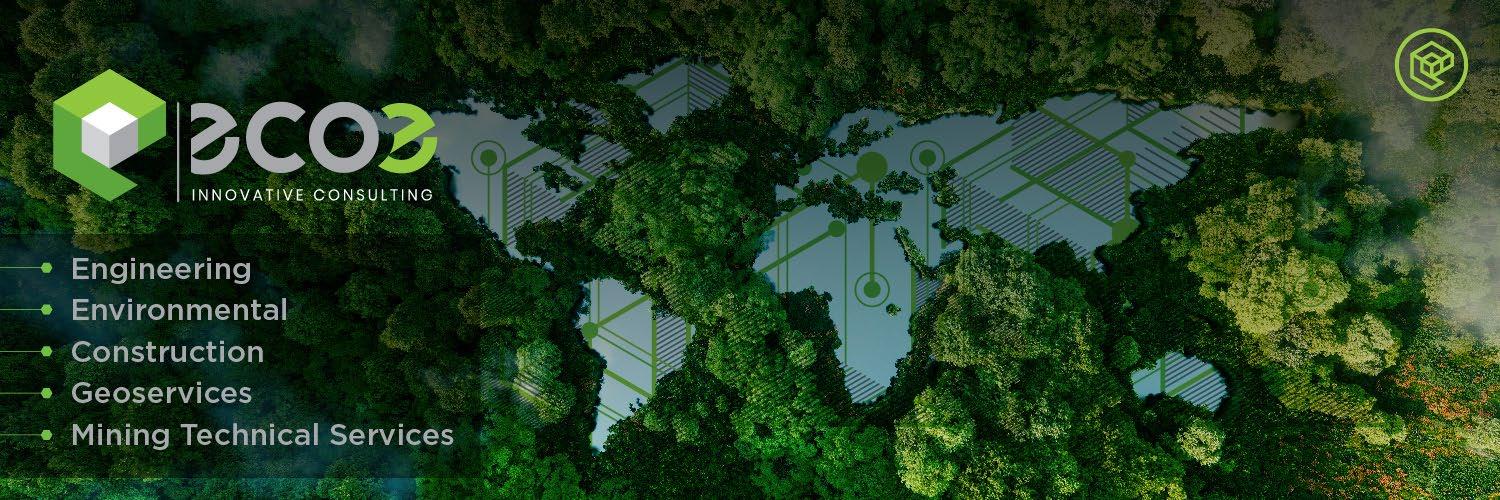
It has become common practice among statutory bodies, lending facilities, investors, end-users, and the financial marketplace to consider companies’ environmental, social, and governance (ESG) investing strategies prior to associating with a company. Increasingly companies are recognising the importance of prioritising and formulating operational strategies surrounding issues affecting the environment, society, and corporate governance. These are designed to ensure the least environmental and social impacts. The Eco Elementum (Pty) Ltd (EcoE) Corporate Environmental Services Department supported by our other expert departments provides solutions such as environmental risk management, climate change solutions, eco-financial solutions, eco-footprint management, eco-mitigation management, and ESG solutions.
A current and global issue impacting the environment and society is climate change. The quantity of greenhouse gases (GHGs) in the atmosphere has a considerable contribution from human activities. The main source contributing to the increase in GHGs in the atmosphere is the burning of fossil fuels, waste, trees, and other biological material. Climate change affects the weather systems and ecosystems as they occur now and in the past. Fundamental concerns of climate change include the increase in intensity, frequency, and change in location of occurrence of severe weather events, modifications in areas typical seasonal
temperatures and rainfall. These can cause discomfort, non-infectious illnesses e.g. heat-stroke; variations in the location and severity of infectious illness; modifications to existing biomes; and both direct and indirect impacts to fauna. The quantity of GHGs in the atmosphere are from both emissions of GHGs into the atmosphere and formation of GHGs from the reactions of other compounds emitted into the atmosphere. Scope 2 emissions are the indirect emissions from the use of electricity, steam, heating, and cooling. Scope 3 emissions are the indirect emissions from the inputs, use of outputs and disposal of waste. In the context of ESG investing, companies’ GHGs contribution would typically consider both direct and indirect emissions in the strategies developed and implemented.
In the development of the EcoE Corporate Environmental Services Department solutions the following components are considered:
• The quantity of GHGs emissions.
• Assessment of the physical risks.
– Vulnerabilities of the operations to variances in climate.
– Impacts of climate change on the surrounding communities.
• Analysis of the transitional risks.
– Financial implications of transitioning to low-carbon operations.
– Opportunities for sustainable investments and operational improvements.
• Business impact assessment.
– Direct and indirect impacts of climate change on your business operations.
EcoE solutions are designed to enable our clients to achieve cost-effective and complete legal compliance. These solutions provide our client with:
• Feasible measures to reduce emissions and the company’s contribution to climate change.
• Strategies to enhance the company’s resilience against the changing climate.
EcoE services include permitting, environmental management reporting, environmental assessments, environmental monitoring, compliance auditing, legal advisory services, scientific services, and environmental engineering.


CONTACT DETAILS
Address: 472 Botterklapper Street, Block@Nature, Block B, Die Wilgers, Pretoria East, 0184
Tel: 012 807 0383
Email: info@ecoe.co.za Website: www.ecoe.co.za








By Jessie Taylor

Over the last 25 years, South African companies have spent around R22-billion on corporate social investment (CSI) projects and today they are increasingly financing projects that uplift South Africans. Not only does this empower local communities, but it also makes smart business sense for local companies.
While CSI is not directly related to a company’s purpose, the two can be closely aligned. An effective CSI programme has the ability to impact the community it serves, the business that backs it and the employees who drive it.
What companies are investing in
Despite the efforts to recover from the economic shock brought on by the COVID-19 pandemic, South African businesses spent almost
R11-billion on CSI projects in the 2022 financial year, according to the Trialogue Business in Society Handbook.
The 2022 CSI spend saw a 6% increase year-on-year, with indications showing that the upward trend could continue into 2023.
According to the report, most companies have indicated a willingness to increase CSI spending over the next two years, with around 60% predicting there would be an increase in resources and budget for CSI.
Some of the favourite causes South African businesses supported were in the education sector. More than 98% of companies gave 44% of CSI expenditure towards education. Social and community development was the
second-most supported sector, receiving 13% of CSI expenditure, with food security and agriculture ranked third with 10% of the CSI spend. The causes chosen by companies reflected the concerns South Africa faced during the year, said Trialogue Director, Cathy Duff. This included the impact of the pandemic and natural disasters, with many companies focusing on supporting disaster relief and food security projects. Projects with a national footprint were most likely to be allocated funding, receiving 68% of CSI funding, followed by projects in Gauteng (31% of companies directed funding to projects in the province) and KwaZulu-Natal (supported by 28% of companies). None of the companies surveyed supported international projects, down 7% compared to 2021.

“As social investments become more strategic, we can expect to see increasingly localised expenditure, where companies invest heavily in geographies around their operations, alongside more national expenditure that aims to have a systemic impact,” Duff explains.
Why companies are spending on CSI CSI programmes can contribute significantly to the upliftment of the community a business serves, by creating jobs, improving education opportunities, and empowering people through skills development. CSI programmes are not intended to drive company profit, but they can create benefits for a company. For example, they could lead to an increase in brand recognition, improve a company’s reputation, increase customer
loyalty, attract top talent and foster a sense of purpose within the business.Half of the surveyed businesses said their top reason for CSI spending was a moral imperative, while three-quarters ranked it as among their top three reasons. The second biggest reason for supporting CSI projects was to meet B-BBEE codes (with 54% of respondents including it as a top-three reason) and thirdly, companies said the programmes improved their reputation (44% of respondents). However, one of the most valuable benefits of CSI programmes is fostering a sense of purpose in the business. This has been shown to drive measurable economic results, by giving employees a sense of purpose that helps motivate them in the workplace.
In 2022, there was an increase in the number of companies that had employee volunteer programmes (EVPs). Threequarters of companies (75%) said they had an EVP in 2022 compared to the 71% in the previous year. These programmes consisted of company-organised volunteering initiatives (93%), fundraising and collection drives (83%), and time off for individuals during work hours (72%).
However, a third of companies said their volunteer programmes had been stopped or put on hold in 2022 due to the COVID-19 pandemic. South African businesses have always played a significant role in contributing to socio-economic upliftment. Increased support of CSI projects has aided in bringing about systemic change and will benefit millions of South Africans in years to come.
“Despite the efforts to recover from the economic shock brought on by the COVID-19 pandemic, South African businesses spent almost R11-billion on CSI projects in the 2022 financial year, according to the Trialogue Business in Society Handbook. ”
Increased focus on environmental, social and governance (ESG) issues South African businesses are increasingly prioritising environmental, social and governance (ESG) in their business strategy.
In 2022, 69% of South African respondents said their company’s overall business strategy responds to ESG issues. This amount sits at 80% internationally.
In addition, 51% of South African companies increased the amount of public ESG reporting they did in 2022.
ESG is a way for investors to assess a company’s likelihood of creating, preserving or eroding their enterprise value creation, along with the larger impact they have on the world. Investors are better able to allocate their capital when evaluating ESG risks as they have an understanding of the long-term resilience of companies.
While ESG has become popular over the last three decades, the concept first gained traction in the 1960s when socially responsible investing was implemented to reduce support for companies aiding the Vietnam War, apartheid in South Africa or unethical industries. In 1997, investors and environmentalists came together in response to the 1989 Exxon Valdez oil spill to create the first accountability mechanism to ensure companies adhere to responsible environmental conduct principles. ESG issues were then included in the 2006 UN Principles for Responsible Investment (PRI) report, where ESG criteria were required by companies.
Sources: Medium | Trialogue | Bizcommunity | DBSA | Gartner
By Raine St.Claire

Experts have consistently sounded the alarm bells and warned of irreversible damage to our planet by 2030.
Even more alarming is the fact that if we hope to make a significant impact within this timeframe, as a global society we only have four years to address decades of human-induced damage. The negative consequences of our carbon footprint, which contribute to increasing greenhouse gas emissions, are substantial. Therefore, the immediate reduction of our carbon footprint is a non-negotiable and urgent priority. The clock is ticking, and the call for action has never been more crucial.
Empowering companies to stay the course on their sustainability journey
In response, consumers and businesses are increasingly embracing sustainable products
and services, driving the adoption of a circular economy. This transformative shift shows no signs of slowing down, with companies focusing on crafting reusable sustainable products to reduce waste. However, a critical question remains: How can brands gauge their positive impact on the environment? The answer lies in Key Performance Indicators (KPIs), which offer valuable insights into the brand’s influence and its environmental effect.
Measuring Business Sustainability: Understanding the difference between broad and granular KPIs
Broad KPIs
These are top-level indicators giving a general view of how a business is doing. They are often used for assessing the overall
health and success of a company or specific functions. For instance, in a retail business, “total revenue” or “customer satisfaction score” are broad KPIs. They provide a sense of overall performance but lack specific details about what drives that performance.
Granular KPIs
In contrast, granular KPIs are specific and detailed metrics that offer a deeper understanding of particular processes, operations, or components of a business. They are often used for tactical or operational purposes. For the same retail business, “average transaction value per customer” or “inventory turnover rate” could be granular KPIs. These metrics provide detailed insights into specific aspects of the business and help identify areas for improvement.

Addressing environmental sustainability: An in-depth look KPIs
1. Carbon footprint
Addressing environmental preservation necessitates considering the carbon footprint. Measuring greenhouse gas emissions, including carbon dioxide (CO2), methane (CH4), nitrous oxide (N2O), and fluorinated gases, reveals the company’s contribution to heat-trapping gases in the atmosphere. These emissions are categorised into three segments:
• Scope 1: Direct sources controlled or owned by the organisation.
• Scope 2: Indirect sources like purchased electricity, steam, heating, and cooling.
• Scope 3: Indirect sources from purchased goods, transportation, employee commuting, end-of-life
2. Ecological systems impact
A circular and sustainable brand’s essence lies in its ability to nurture, rather than harm, the Earth’s biological systems. Assessing what impact on the environment the organisation has, is crucial. For instance, are biodegradable waste materials returned to the Earth as compost, fostering ecosystem growth? Are dyeing and fabric washing processes carried out without releasing toxic chemicals into the environment? Understanding the overall impact on ecological systems, whether positive or negative, offers profound insights into its genuine sustainability impact.
Electricity consumption
Evaluating energy consumption across various settings, from factories and offices to transportation, plays a significant role in assessing an organisation’s sustainability efforts. It involves tracking the amount of energy used, typically measured in kilowatt-hours (kWh), within these facilities. This process offers insights into energy usage patterns, helping to pinpoint areas where energy consumption is high
Item-specific product tracking
Product IDs allow for detailed monitoring of individual products throughout their entire lifecycle. It provides insights into how products are made, used, and disposed of. By analysing the data collected, businesses can identify areas for improvement, such as making products more eco-friendly, durable, or recyclable. This tracking system encourages a “circular economy” approach, where products and materials are kept in use for as long as possible, reducing waste and lessening the burden on landfills.
Load density
Efficient product distribution is crucial for conserving time, resources, and money. By consolidating shipments and avoiding unnecessary smaller trips, load density can be improved. In cases where load density is low, exploring shared-load options where companies share shipping space enhances cost-efficiency and preserves essential resources for all parties involved.
Beyond tracking metrics related to energy consumption and emissions, it is essential to monitor improvements achieved year-over-year or over shorter periods. Demonstrating, for example, that the company has reduced carbon emissions by 20% in a year reflects environmental benefits and cost savings. These insights are valuable for internal assessments, showcasing the advantages of sustainable practices for businesses and appealing to environmentally conscious consumers.
Recycling KPIs are crucial for understanding how a brand contributes to pollution reduction and waste minimisation. They measure how often materials are recycled during production and how frequently consumers recycle the packaging and products. These metrics reveal the extent to which materials are reused, reducing global waste. Recycling rates are essential for minimising waste and pollution in terms of what the company does during production and how consumers interact with the brand’s products.
Progress and improvements 7. Recycling rates 8. Sustainability assessment and performance
Specialised companies assist businesses with sustainability assessments. They evaluate different aspects of a company’s operations and provide a comprehensive overview of its sustainability performance. They use scorecards to grade sustainability efforts, highlighting both strengths and areas requiring improvement. These grades offer insights to help companies enhance their sustainability. In the context of a circular design, the scorecard remains a useful tool for identifying specific areas for further improvement.
Monitoring waste in the supply chain goes beyond the company’s direct production or administration; it involves every aspect of the supply chain. Carefully examining waste generation, whether at a farm or in a factory, provides a comprehensive understanding of the brand’s sustainability impact. This insight fosters collaboration with partners committed to waste reduction. Established suppliers can share sustainability best practices and work together to minimise waste across all production stages. A circular economy offers opportunities
The global bottled water market equates to over 446 billion litres of water annually, or one million bottles per minute. Despite the common belief that water is an unlimited resource, the process of purifying it demands significant energy. The energy-intensive purification process, often involving filtration and chemical treatments and waste pose a threat to natural ecosystems by introducing pollutants that disrupt the balance of rivers, lakes, and aquatic life. To address these issues, it is essential to measure water consumption, tracking the amount used, recycled, wasted, reused, and returned to the ecosystem without pollution..
Monitoring the carbon footprint helps identify strategies for reducing it, ideally aiming for net-zero emissions.


By Raine St.Claire
BALANCING SUSTAINABILITY AND EMPLOYEE RETENTION FOR BUSINESS SUCCESS
In the ever-changing business landscape, there is a growing dynamic interplay between employers and employees. Employers prioritise adaptable and resilient workforces, recognising the strategic importance of thriving in evolving markets. On the other side, employees are increasingly motivated by a sense of purpose and are scrutinising how companies embrace sustainability. This evolving relationship is driven by the need for adaptability and sustainability, giving a competitive edge to companies that embrace these principles.
The connection between intensified sustainability efforts and employee retention is seamless. By adopting strategies that enhance sustainability, businesses offer their staff a clear sense of purpose and mission, leading to greater loyalty and dedication.
A recent survey of 1 000 UK office workers revealed that a significant number would decline a job offer from a company with a poor sustainability record. This survey underscores the importance of robust sustainability policies in both attracting and retaining employees. Roughly threequarters of respondents expressed a desire for stronger organisational sustainability commitments.
Around one-third of those surveyed feel their workplace falls short of environmental sustainability standards, with nearly a quarter indicating they would reject a job offer from a company with a questionable environmental track record.
When asked about who should take responsibility for enhancing workplace sustainability, 72% believe that all employees
should be held accountable, with 24% naming the CEO, and 17% pointing to the HR department.
A sustainable mindset should start at the top, with leaders demonstrating a commitment to the cause and implementing policies that promote sustainability at work. Establishing environmentally friendly practices is not only beneficial for business; it also serves as a strong motivator for attracting and retaining employees.
The most popular sustainability activity in workplaces is recycling office waste, mentioned by 50% of respondents. Approximately a quarter of respondents cited policies to reduce paper usage, encourage staff to reduce energy consumption, enhance energy efficiency, reduce travel, and promote reusable kitchenware.

Start by asking employees for their input and implement actions like using energyefficient equipment, opting for renewable energy sources, reducing waste, and recycling. Encourage eco-friendly transportation options, such as carpooling, public transit, or remote work, to reduce daily commuting. Promoting sustainability need not be challenging or costly. Considering that more than 15 tons of plastic find their way into the ocean every minute, prohibiting single-use plastic in the workplace emerges as a practical stride toward sustainability.
Retaining employees is one of the most significant challenges facing businesses today. High turnover rates negatively impact productivity and morale, affecting overall organisational performance. Employee retention goes beyond keeping employees on the payroll; it is about creating an engaging environment that encourages employees to stay. Research indicates that 86% of young people would stay longer at a company with robust sustainability credentials.
Sources: IEMA | Sensiba | Topline
1. Cost savings
Replacing employees is expensive, with estimates suggesting it can cost 6 to 9 months’ worth of their salary, covering recruitment, training, and lost productivity. Retaining employees significantly reduces these costs.
2.
Long-term employees bring valuable knowledge and experience that is hard to replace. Losing them creates a knowledge gap and disrupts workflow, impacting overall organisational effectiveness.
As employees increasingly seek alignment between their values and their organisation’s practices, employers must ensure that their workforce remains content, engaged, and productive through internal sustainability initiatives. Prioritising employee development demonstrates a commitment to staff wellbeing and organisational growth.
By adopting meaningful sustainable practices, organisations demonstrate their dedication to creating a positive impact. This not only attracts employees who want to be
part of this mission but also enhances their brand, reputation, and core values.
Furthermore, Environmental, Social, and Governance (ESG) efforts can significantly enhance employee retention in an era where environmental and social issues take centre stage. Employees seek assurance that their workplace actively promotes diversity and sustainability.
Investing in employees is a wise strategy for long-term success. High turnover leads to financial losses and expertise gaps, making employee retention crucial. Offering opportunities for personal and professional growth increases confidence, efficiency, and effectiveness while preventing burnout. Promoting work-life balance, supporting mental health, and valuing diversity and inclusion are vital for employee well-being.
By aligning profits with employee well-being and creating an environment that fosters growth and loyalty, companies can remain competitive and retain valuable staff.

By Michael Gullan, CEO of G&G Advocacy

Career growth and development are the most important things employees want from their employers. They also want to work in roles challenging their strengths and competencies for organisations that provide opportunities to grow their knowledge and skills. There’s a lot of evidence proving that employees that don’t apply their knowledge, skills, and strengths in the workplace are unfulfilled and tend to leave their jobs 12 times faster.
Learning and development are imperative for a happy, engaged, high-performance workforce. However, how do you balance what the business needs and what employees want to learn?
Employees’ learning interests vary widely depending on their roles, goals, interests, and career paths. However, we have noticed some common themes from conducting learning needs assessments and plans in various industries.
Soft Skills: Communication, leadership, time management, and problem-solving are highly valued by employees. Many seek opportunities to improve their soft skills to enhance their effectiveness.
Customer service skills: Crucial for customer-facing employees to improve their ability to interact with customers and handle challenging situations.
Technical skills: In today’s rapidly evolving work environment, employees want to acquire or enhance their technical skills. This includes learning programming languages, data analysis tools, graphic design software, or other job-specific software and tools.
Industry-specific knowledge: Employees want to stay updated on industry trends, regulations, and best practices to stay competitive and to put them in line for potential promotions.
Career advancement skills: Skills that advance careers, such as networking, negotiation skills, project management, and strategic thinking are high on the learning lists for many individuals.
Digital literacy: Most employees want to remain current with technology, such as new software, online platforms, or adapting to remote work technologies, such as time management, effective virtual communication, and cybersecurity.
Financial literacy: Many employees want to upskill on financial planning not only in the context of organisations, but also personal finance and financial planning. They may want to learn about budgeting, investing, and retirement planning.
Wellness and work-life balance: Employees want the skills to manage their stress so they can perform better at life and work.
Creativity and innovation: Many employees want to enhance their creative thinking and problem-solving abilities so they can take on new and stimulating projects.
Health and safety: Workplace health and safety knowledge is crucial for employee well-being. Understanding safety protocols and practices is a priority for many.
Diversity, equity, and inclusion: Inclusive workplaces are essential, and employees want to understand the subtleties of diversity, equity, and inclusion to contribute to an inclusive and respectful work environment.
Ethical and sustainability practices: With growing awareness of ethical and environmental issues, employees want to understand ethical business practices and sustainability initiatives within their organisations and industry.
Languages: Learning a new language or improving existing skills is of interest to employees working in international or multicultural environments. Most employees want to learn and develop their skills and be recognised for their learning efforts. Employees will work harder on their self-development when they’re rewarded with certificates, badges, or in-person acknowledgments. Employees’ learning needs and goals vary widely from organisation and industry. To ensure you get a return on investment (via increased employee performance) and a return on emotion (via a positive culture and happy workforce), an L&D assessment, strategy, and plan should result in a programme that is a win-win for employees and the organisation.

At Sanofi, we believe that caring for people means caring for the planet. Our Planet Care Strategy is a testament to our dedication to achieving net zero greenhouse gas emissions by 2045. With an intermediate milestone of carbon neutrality by 2030, we are on a clear path to a sustainable future.





By Hannes Schoonraad, Founding Partner at Regarding My Life
In just a few hundred years humanity progressed from donkey carts to hyper cars, from Galileo’s crude instruments to the James Webb Space telescope, from the printing press to quantum computing and yet, we remain perplexed by our ancient quest for the simplest thing - true happiness.
While all indicators of our collective prosperity have skyrocketed, most global happiness indicators are trending downwards.
Should we as modern organisations, in both the private and public sector, be concerned with the happiness of the people in our care at all? Can we, as a provider of employment, even impact a unique individual’s personal happiness?
Without a doubt these are the type of questions any caring organisation should be asking itself.
To give ourselves a fair chance at thoughtful answers, let us briefly touch on what happiness is first.
At its core happiness is a deeply personal experience. It is a quiet and soft way of living in peace with yourself and the world around you. More than anything, it is a way of being with life just as it is, with all its imperfections, beauty, and mystery. It is rooted in inner peace and joy. Therefore, any effort to improve happiness is primarily an inside job. Barring dysfunctional environments and major
calamitous events, our surroundings have surprisingly little effect on our overall happiness. Happiness mostly resides in how we choose to interpret life and the personal happiness habits we choose to build into our daily routines. So, if happiness is such a private affair, is organisational happiness worth discussing, or is it a mere consequence of the collective personal happiness levels of the people in the organisation? For the organisation that sees its
people as more than a resource, for those who realise how inadequate terms like human capital are to refer to humans, it is natural to deeply care about the happiness of its people. In fact, some leading organisations have turned happiness into an operational objective and a growing body of research confirms that organisations that consciously promote behaviours and conditions that are conducive to personal happiness, reap benefits far beyond their initial expectations.


Even for those hardcore executives who do not yet see an active role for the organisation in supporting personal happiness, there are plenty of sound business reasons to invest in happiness.
True happiness is accompanied by a deeper level of maturity, and mature people accept full responsibility for every aspect of their lives. They tend to gravitate away from corporate culture killers like gossip and blame. They find ways to compromise on issues of mere personal preference and style and in doing so simply bypass many of the causes of conflict within an organisation.
Happier people are substantially more engaged in their daily tasks and substantially more productive, without any additional stress or expensive interventions. Happier people treat the people around them better, leading to increased levels of customer and stakeholder satisfaction. The infectiousness of happiness trends towards attracting the right
kind of talent during the recruitment process, saving man hours and lots of money on trying to correct for ill-fitting appointments.
Pro-actively tending to organisational happiness is exponentially cheaper and easier than dealing with the consequences of misery and unhappiness.
An authentic organisational focus on happiness compliments a healthy dynamic high-performing culture and in no way detracts from long-term bottom-line performance – quite the contrary.
So far, we have considered what happiness means and why it is a good idea to have it high up on our organisational agenda.
Now let us consider a few practical steps an organisation can take in the interest of its own happiness. Much like a person, it all starts with a deep realisation and commitment to be a happy organisation. From that inner
acceptance and commitment, creating a happiness-friendly work-environment is easy and highly rewarding.
Firstly, support and encourage people to optimise their health. Allowing space and time for physical activity during working hours, ensuring access to proper healthcare professionals and facilities, and engaging in some form of sports, as a company, allow people to tend to their physical health in ways they would have easily neglected if not for the opportunities provided by their employers. Similarly making professional counselling available to people often opens a door to healing deep-seated mental wounds and increased general mental health.
A second happiness tip is to find creative ways to give back to the communities in which you operate. Try to give what money cannot buy. For instance, just spending attentive time with the marginalised people in a community affords them the dignity that no amount of money can give. As an organisation we can create

opportunities for our people to experience the remarkable happiness benefits of doing something for someone else.
A simple third tip is to be mindful of how we communicate at organisational, team and individual level. Awareness of the effect that words, their tone, and our body language have on those we communicate with creates fertile soil where natural happiness can grow freely. Some organisational principles around communication are a helpful tool.
Lastly, act decisively to root out any obvious causes of misery and unhappiness like gossip, unfair labour practices or continuous, unrealistic targets and deadlines.
Now that we have a slightly better understanding of what happiness is, why it is worthwhile pursuing and what we can do to open the doors to it, we need to think about how we measure the effect of our efforts in the happiness arena. There are many tools available to
measure organisational happiness. There are also a growing number of experts available to assist an organisation with creating a happiness index or dashboard.
Whatever tools you choose, if it is applied consistently over time, you should be able to identify trends as opposed to some absolute happiness number or goal.
Ultimately happiness is something you can sense by simply listening to people and talking to them. Your customers and suppliers can also be a good source for gauging organisational happiness.
Asking them what they see and how they experience your organisation can lead to some insightful happiness feedback.
True happiness is more attainable than we tend to believe and much more of a hard science than we have been taught. Considering the joy and economic value happy talented people bring to the world, is it not worth our while to re-evaluate where organisational happiness ranks
on our strategic priorities? By elevating our organisational awareness of what happiness is and how it works we can, and we should, start investing in the promotion of conditions and behaviours that are more conducive to improved personal happiness. A few slight shifts in perspectives and behaviours, coupled with well-considered investments in some tools and supportive practices, can lead to outsized improvements over time. Individual happiness cannot help but spill over into a more productive, more profitable, and ultimately happier way of doing what we do.
Let us build organisational cultures that allow authentic personal happiness the opportunity to grow and flourish amongst all our stakeholders, while we keep doing well on all our traditional measures of success.
After all, there are few sights in this world as inspiring as a happy person, living a content and productive life.


Geralda is a sustainability and ESG (Environment, Social and Governance) expert, working mostly in mining and renewable energy across Southern Africa. Her significant leadership roles include that of Independent Board Director to Caledonia Mining Corporation Plc, a listed gold mining company on the NYSE and London’s AIM, and Northam Platinum Holdings, a platinum miner listed on the Johannesburg Stock Exchange (JSE). In these roles she is instrumental in steering the sustainability decisions across the businesses. She furthermore serves as panellist on the Climate Change Advisory Committee of Sasol Limited, as JSE listed company.
Geralda is also the CEO of Maisha Social Solutions Pty Ltd, an advisory and consultancy company specialising in corporate sustainability and ESG. She has worked in more than 15 countries across Africa, South America, North America and Australia. She was a winner in the 50 Power Women in the 2021 Mail & Guardian competition,

under the category of the Mining Woman, and a winner in the World Women Leadership Congress Awards 2024. Geralda is an educational psychologist by training and holds a Master’s Degree in Psychology from the University of Cape Town and an MBA from BSN, as well as Postgraduate Certificates in Crosssector Partnerships and Advanced Social Management from Cambridge University’s Institute for Sustainability Leadership. She is a Director of SAICA Enterprise Development and The Hope Factory, where she serves in a voluntary capacity.
About Maisha Social Solutions
Maisha is an advisory and consultancy business specialising in ESG in the mining and renewable energy sectors. Its mission is ‘to achieve the sustainability of our planet, our business, and the businesses of our clients.’
Maisha won the Standard Bank Top Gender Empowered Company award in 2022, for its innovative and flexible
recruitment and human resources policies. Maisha works mostly with women who work as freelancers, owners of SMEs, associates, and contractors, and all these approaches benefit both the company and the women. With clients across Africa, mostly in South Africa, Zimbabwe, Botswana and the Democratic Republic of the Congo, Maisha is a champion for sustainability topics that are critical to the continent.

By Brett van Aswegen, CEO of Wonga

When I embarked on my leadership journey, I was faced with a choice around what my management style would be. Many traditional corporations at the time managed employees with carrot-and-stick methods, fostering low trust environments underpinned by rigid policies and fear.
We have all seen a star employee who consistently outperforms. But is it possible for most employees to be star performers? Is it possible to have a company full of star performers? And how do you retain these star performers when you find them?
In today’s competitive business landscape, the art of retaining highly skilled talent has become a strategic imperative for companies across various sectors, particularly those in the highly skilled sectors, such as engineering and data science.
The ability to attract and, more importantly, retain star performers is a challenge amplified by numerous factors in South Africa’s business environment. From the scarcity of skilled professionals, due to issues in the education pipeline, to the alarming brain drain phenomenon, where thousands of skilled individuals emigrate out of South Africa
annually, the pool of talent within the country is shrinking at an alarming rate.
To compound these challenges, the rise of the work-from-home culture has opened the doors to global competition for cheap local talent. International firms, lured by favourable foreign exchange rates, are increasingly poaching
The power of engagement in talent retention
South Africa’s brightest minds, exacerbating wage pressures on local businesses.
In this scenario, the question arises: Is there an alternative to continually inflating wage bills to retain highly skilled and highly mobile employees?
Many companies resort to using money to try to motivate and retain people and annual performance incentives are certainly effective in this regard. However, studies have shown that for people involved in tasks that require cognitive skills, decision-making, creativity and higher order thinking, monthly salaries can be a negative motivator.
There is little to no upside benefit to intrinsic motivation if you overpay this person, but there is a downside negative impact on motivation if you underpay them. So ensuring employees are correctly benchmarked and fairly remunerated against the market is imperative. But what do you do when skilled employees in high demand can always get a higher salary?
The answer for us at Wonga has been to focus on building our company culturearound cultivating intrinsic motivation in our people.
In his book titled Drive, Daniel H. Pink outlines three key drivers of intrinsic motivation:
1. Autonomy – A desire to be self-directed, which increases engagement over compliance
Autonomy: With us, our business strategy, outlining what the business wants to achieve, is set at the executive level. As far as possible, decisions outlining how the strategy will be executed are rolled down to the relevant teams. We treat our people like adults and partners in our success, giving them the space to direct critical decisions within a collectively accountable team.
To make this work, we have had to work hard to establish psychological safety to support candid conversations, and be prepared for mistakes and the learnings they bring us. We tell people that if they aren’t making mistakes, they aren’t trying hard enough. The result of this is we have had transformational ideas coming from open-minded juniors, coupled with strong team accountability for delivery.
2. Mastery – The urge to get better skilled
Mastery: Coming from a growth mindset, we want our people to develop and grow. Their success builds our success. We have implemented development ladders that allow individuals to manage their own growth at their pace and we follow this up with executive level performance and growth reviews of each individual in the company on their six monthly anniversary. This allows us to recognise growth and avoid delays in levelling people up.
3. Purpose – The desire to do something that has meaning and is important
Purpose: As a purpose-driven organisation, our purpose forms the foundation of our culture, allowing our staff to deeply connect with why our business matters to our customers. Every member of our team understands the problem we are trying to solve for our customers, and the impact this can have in our customers’ lives, fostering real meaning in the work they do. While we continue to develop our culture, we have employee engagement scores in the top quartile of our industry and employee retention rates above 90%.
Nurturing company culture and employee engagement is not just a trendy HR initiative; it is a strategic necessity for retaining highly skilled talent. When employees are motivated intrinsically, and are aligned with organisational values, businesses can thrive in the toughest of times.
By Sinazo Mkoko

Ahealthy and safe workplace prioritises the safety of its employees and manages risks wisely in order to protect its employees and the organisation. It’s essential for every organisation to provide a healthy and safe environment for its employees, regardless of its size.
Occupational Health and Safety Act, 1993
According to the Department of Labour, the Occupational Health and Safety Act,1993, requires the employer to create and maintain, to the greatest extent reasonably practicable, a work environment that is safe and free of risk to the workers’ health.
“This means that the employer must ensure that the workplace is free of hazardous substances, such as benzene, chlorine, and microorganisms, articles, equipment, processes, etc., that may cause injury, damage, or disease. Where this is not possible, the employer must inform workers of these dangers, how they may be prevented, and how to work safely, and provide other protective measures for a safe workplace,” they say.
The Labour Department, however, warns that this is not the sole responsibility of the employer and calls for open communication and cooperation between the employees and the employer.
“The workers and the employer must share the responsibility for health and safety in the workplace. Both parties must proactively identify dangers and develop control measures to make the workplace safe. In this way, the employer and the workers are involved in a system where health and safety representatives may inspect the workplace regularly and then report to a health and safety committee, who in turn may submit recommendations to the employer.”
The cost of an unsafe and unhealthy workplace
Human Focus, a global leader in skilled behaviour change in the workplace, states that a safe working environment
benefits from fewer injuries and accidents, meaning cheaper healthcare expenses, more staff retention, and less employee downtime.
Unfortunately, the cost of an unhealthy and unsafe workplace is high and includes, but is not limited to, fines and compensation claims against the employer, damaged work equipment, a decrease in productivity, an increase in staff turnover, and a loss of reputation for the organisation.
An unsafe and healthy workplace would affect employees negatively and possibly result in losing wages, negative effects on health and wellbeing, medical expenses, and high chances of unemployment. Maintaining a safe and healthy workspace doesn’t only mean
you value your employees’ lives but also your clients, thus affecting business revenue.
Mental health is increasingly becoming one of the most crucial elements in the health of an employee. Organisations are advised to prioritise the mental health of their employees. The National Institutes of Health (NIH) states that “poor mental health can also lead to burnout amongst employees, seriously affecting their ability to contribute meaningfully in both their personal and professional lives.”NIH adds that health problems affect organisations through increased absenteeism, a negative impact on productivity and revenues, and an increase in spending to address the issue.
“In addition, they impact employee morale adversely. Work-related stress is a major cause of occupational illness, poor productivity, and human error. This means increased sickness absence, high staff turnover, poor performance in the organisation, and a possible increase in accidents due to human error.
“Work-related stress could also manifest as heart disease, back pain, headaches, gastrointestinal disturbances, or various minor illnesses, as well as psychological effects such as anxiety and depression, loss of concentration, and poor decision-making.”
According to the Department of Labour, these are the general duties of employers towards workers.
The employer must provide and maintain all of the equipment necessary to do the job, as well as all of the systems that must be used, in a condition that does not jeopardise the workers’ health and safety.
To ensure that these duties are complied with, the employer must:
• Identify potential hazards that may be present while work is being done, something is being produced, processed, used, stored, or transported, and any equipment is being used.
• Establish the precautionary measures that are necessary to protect his or her workers against the identified hazards and provide the means to implement these precautionary measures.
• Provide the necessary information, instructions, training, and supervision while keeping the extent of workers’ competence in mind. In other words, what they may do and may not do
• Not permit anyone to carry on with any task unless the necessary precautionary measures have been taken.
• Take steps to ensure that every person under his or her control complies with the requirements of the act.
• Enforce the necessary control measures in the interest of health and safety.
• See to it that the work being done and the equipment used are under the general supervision of a worker who has been trained to understand the hazards associated with the work.
• Such a worker must ensure that the precautionary measures are implemented and maintained.
General duties of the worker according to the Department of Labour It is the duty of the worker to:
• Take care of his or her own health and safety, as well as that of other people who may be affected by his or her actions or negligence. This includes playing at work. Many people have been injured and even killed owing to horseplay in the workplace, and that is considered a serious contravention
• Cooperate with the employer where the Act imposes a duty or requirements on the worker
• Give information to an inspector from the Department of Labour if he or she should require it
• Carry out any lawful instruction that the employer or authorised person prescribes with regard to health and safety
• Comply with the rules and procedures that the employer gives him or her
• wear the prescribed safety clothing or use the prescribed safety equipment where it is required.
• Report unsafe or unhealthy conditions to the employer or health and safety representative as soon as possible
• If he or she is involved in an incident that may influence his or her health or cause an injury, report that incident to the employer, authorised person, or health and safety representative as soon as possible, but no later than by the end of the shift




By Professor Parmi Natesan, CEO, Institute of Directors in South Africa
If it is accepted that a board’s performance is directly linked to the performance of the organisation it governs, then the board’s composition is clearly a hugely important determinant of its effectiveness. This is particularly true now that boards are in the spotlight for the quality of the decisions they make, and also now that the business environment has become so complex, and the stakeholders that need to be satisfied are so varied. In this environment, goes the argument, the insights offered by a diverse group of directors will make for better oversight and decision-making.
This makes intuitive sense, but it’s also broadly borne out by research. Now-venerable research from the Boston Consulting Group’s Henderson Institute shows that companies with more diverse leadership teams report revenue from innovation that is higher than those with below-average diversity scores (45% to 26%). The same institute also showed that diversity is linked to future growth prospects. For these reasons, as well as for fairness and moral redress, the JSE Regulations require a board diversity policy to be implemented, and King IV requires targets to be set for race and gender diversity on boards.
Once it’s agreed that diversity is a good thing, it’s worth taking a moment to consider what it actually looks like. And here, understandably but regrettably, there remains a tendency to take the easy way out—what I call the tick-box approach, the appearance of diversity.
In South Africa, and elsewhere too, diversity typically means more women (gender diversity) and more people of colour (racial diversity). Thus we hear about a “diverse appointment” being used to refer to a female or ACI (African, ‘Coloured’ or Indian) appointee, and companies proudly list the relative numbers of each on their boards and executive teams.
Greater representation of both women and people of colour is obviously a good start but, as the activist investor group Barrington Capital Group argued in a 2020 paper for the Harvard Law School Forum on Corporate Governance, demographic diversity is not the same as cognitive (or experiential, for that matter) diversity.
In other words, an overemphasis on demographic criteria can rob a board of the skills, industry knowledge and experience it needs.
Additionally, the point is often made that this tick-box approach means that the same old names keep cropping up on boards, which means that corporates are potentially missing out on the growing pool of ACI and female candidates who are experienced and competent to serve as directors.
So if there is a good case for diversity, how much progress has been made?
The short answer would probably be “slow but steady”. When it comes to race, according to PwC’s Non-executive directors’ Practices and fees trends report (May 2023), black Africans now almost equal the percentage of white non-executive directors (47% to 44%), with Asians (5%) and ‘Coloureds’ (4%) corresponding fairly closely to national demographics. Excluding chairs, where whites continue to dominate (58%), black Africans (45% of nonexecutives) and whites (46%) are neck and neck for non-executive directorship positions.
As far as gender goes, females now make up 38% of nonexecutive positions, quite a way off their representation in the broader population, where women make up 51.1% of the total population.
For a deeper dive into the progress on gender diversity, reference can be made to the Business Engage report, 2021 - Status of gender on JSE-listed boards, published last year. (This report quotes the 2021 figures, which represent an improvement as compared to the previous four years unless otherwise stated.) Several points stand out.
One point is reporting and disclosure—if we can’t see what companies are doing, we can’t hold them to account. Even at this late stage, 17 of approximately 296 listed companies still don’t have their governance reporting easily available on their websites, and 41 did not report specifically on gender at board level. Only 10 listed a web address for their gender policy.
There has been a big decline in the number of companies that set themselves voluntary targets for gender diversity on the board (27 as opposed to 2020’s 95).
All of this is unacceptable: the JSE requires listed companies to have a policy on the promotion of diversity at board level and also states that listed companies should apply King IV, which in turn requires them to set gender targets and disclose not only the targets, but also progress against them.
At the other end of the scale are the 33 companies that have appointed one woman to their boards and consider that box ticked—the “one and doners”.
Twenty-seven crops up again as the total of JSE-listed companies that have achieved gender parity, with a further 20 just one appointment away from this goal.
As regards female non-executive directors, the Business Engage report broadly correlates with the PwC figures quoted above. It’s interesting but disheartening to note that as regards board committees, women only achieve parity representation on the social and ethics committee.
At the executive level, women have a long way to go, with only 6% of listed-company CEOs and 22% of CFOs being female.
In conclusion, then, I would tend to argue that while companies are making progress in becoming more diverse, it is happening rather too slowly. Given that women are graduating in greater numbers than men, and are thought to control the majority of consumer spending, one is surely forced to conclude that the undoubted benefits of true diversity have not yet been fully recognised.

Take a journey away from short termism and start looking at a better future. Meet the interesting people changing Africa – and the way we work, think and live.

The COP28 UN Climate Change Conference in Dubai, the United Arab Emirates, was the biggest of its kind, with 85 000 participants, including more than 150 Heads of State and Government among the representatives of national delegations, civil society, business, Indigenous Peoples, youth, philanthropy, and international organisations in attendance at the conference from 30 November to 13 December 2023.
COP 28 decisions
COP28 was particularly momentous as it marked the conclusion of the first ‘global stocktake’ of the world’s efforts to address climate change under the Paris Agreement. Having shown that progress was too slow across all areas of climate action – from
reducing greenhouse gas emissions, to strengthening resilience to a changing climate, to getting the financial and technological support to vulnerable nations – countries responded with a decision on how to accelerate action across all areas by 2030. This includes a call on governments to speed up the transition away from fossil fuels to renewables such as wind and solar power in their next round of climate commitments.
Linking climate change to biodiversity
COP 28 resulted in unprecedented recognition and momentum for linking efforts to address the climate and biodiversity crises. Alongside pollution, these make up the triple planetary crisis – the three, main interlinked environmental issues facing humanity.
Governments were called on to consider ecosystems, biodiversity and carbon stores, such as forests, when developing their stronger national climate action plans (known as nationally determined contributions), which are due by early 2025.
This call was part of a wide-ranging, comprehensive decision by Parties on the world’s first ‘global stocktake’ to ratchet up climate action before the end of the decade with the aim of limiting the global temperature rise within 1.5°C. The decision emphasises “the importance of conserving, protecting and restoring nature and ecosystems towards achieving the Paris agreement temperature goal” through protecting “terrestrial and marine ecosystems acting as sinks and reservoirs of

greenhouse gases and by conserving biodiversity.” This also includes “halting and reversing deforestation and forest degradation by 2030”, which would eliminate about 14% of global emissions and enhance the capacity of forests to store more carbon. This is the first time such a pledge has garnered formal recognition under the UN Framework Convention on Climate Change (UNFCCC).
Recognising “the need for enhanced support and investment, including through financial resources, technology transfer and capacity-building” for these combined efforts to address the climate and biodiversity crises, governments are urged to approach this based on “the best available science as well as Indigenous Peoples’ knowledge and local knowledge systems”.
Sources: United Nations | Climate Change
“Now all governments and businesses need to turn these pledges into real-economy outcomes, without delay.”
Nature-based solutions were also recognised in the decision on the ‘global stocktake’, recognising that nature and biodiversity are keys to mitigating a heating planet and protecting vulnerable communities from the impacts of a changing climate.
All these efforts are to be aligned with the goals of the Kunming-Montreal Global Biodiversity Framework, which was agreed at the fifteenth meeting of the Conference of the Parties (COP 15) to the UN Convention on Biological Diversity in Montreal, Canada in December 2022. Among the Biodiversity Framework’s 23 commitments, are protecting 30% of the planet’s land and oceans for nature by 2030 (the so-called “30x30” pledge) and restoring 30% of the planet’s degraded ecosystems.
The beginning of the end for fossil fuels
COP 28 closed with an agreement that signals the “beginning of the end” of the fossil fuel era by laying the ground for a swift, just and equitable transition, underpinned by deep emissions cuts and scaled-up finance. As COP 28 President Dr Sultan Al Jaber said: “We have language on fossil fuel in the (COP) final agreement for the first time ever.” It clearly points to the direction of travel in the energy transition, and that the scale and pace of change can’t be stopped or reversed.
The call on nations to transition away from fossil fuels was part of a decision by nearly 200 Parties on the world’s first ‘global stocktake’ to ratchet up climate action before the end of the decade –with the overarching aim to keep the global temperature limit of 1.5°C within reach.
“Whilst we didn’t turn the page on the fossil fuel era in Dubai, this outcome is the beginning of the end,” said UN Climate Change Executive Secretary Simon Stiell. “Now all governments and businesses need to turn these pledges into real-economy outcomes, without delay.”
The ‘global stocktake’ is considered the central outcome of COP 28 – as it contains every element that was under negotiation and can now be used by countries to develop stronger climate action plans due by February 2025. The stocktake recognizes the science that indicates global greenhouse gas emissions need to be cut 43% by 2030, compared to 2019 levels, to limit global warming to 1.5°C. But it notes Parties are off track when it comes to meeting their Paris Agreement goals.
The stocktake calls on Parties to take actions towards achieving, at a global scale, a tripling of renewable energy capacity and doubling energy efficiency improvements by 2030. The list also includes accelerating efforts towards the phase-down of unabated coal power, phasing out inefficient fossil fuel subsidies, and other measures that drive the transition away from fossil fuels in energy systems, in a just, orderly and equitable manner, with developed countries continuing to take the lead.
In the short-term, Parties are encouraged to come forward with ambitious, economy-wide emission reduction targets, covering all greenhouse gases, sectors and categories and aligned with the 1.5°C limit in their next round of climate action plans (known as nationally determined contributions) by early 2025.
By Jessie Taylor

As the world prepares for the 29th Conference of the Parties (COP29) to be held in Baku, Azerbaijan, in November, the African continent faces significant challenges and opportunities in its efforts to combat climate change. The African Group of Negotiators (AGN) has positioned itself at the forefront of these discussions, focusing on climate finance, adaptation, loss and damage, and carbon market mechanisms, with a clear emphasis on ensuring that Africa’s unique needs and vulnerabilities are addressed.
The African finance agenda For African countries, COP29 is being dubbed the "Finance COP" due to the continent’s urgent requirement for financial resources to implement climate action. The AGN's priority is to
push for a New Collective Quantified Goal (NCQG) on climate finance, which will define how much money developed countries must provide to assist developing nations, particularly in Africa, in mitigating and adapting to the impacts of climate change. As Kenya’s climate envoy Ali D. Mohamed noted: "Finance will lie at the heart of climate diplomacy at COP29 as a critical enabler of climate action."
The AGN has been advocating for the NCQG to be ambitious, transparent, and consistent with the goals of the Paris Agreement, specifically limiting global warming to 1.5°C. A key issue remains the lack of adequate financial support from developed countries for the implementation of Africa’s Nationally Determined Contributions (NDCs) under the Paris Agreement.
Without this support, African countries risk being unable to meet their climate commitments, leaving them vulnerable to the increasing impacts of climate change.
Adaptation is another critical focus area for African countries as they grapple with the direct impacts of climate change. African negotiators are pushing for agreement on key indicators to track progress on adaptation and want to ensure that adaptation finance is included as a central component of these discussions.
In addition, climate-induced health risks, including increased morbidity and mortality from extreme weather events, are a growing concern in Africa. The AGN calls for climate-resilient health services to be mainstreamed into
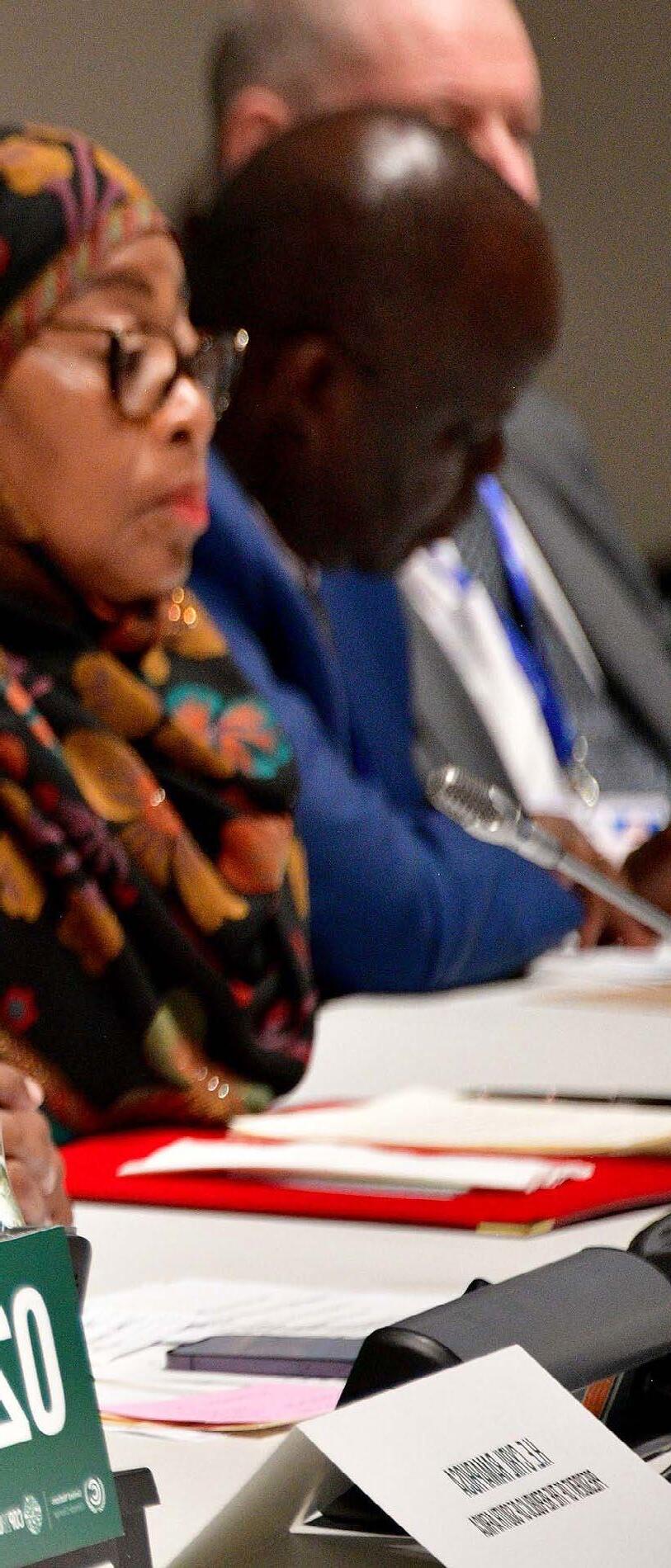
climate policies. The goal is to reduce health-related vulnerabilities caused by climate change and ensure that African countries have the resources to address these issues.
Environmental Minister Dion George said: “Given the scarcity of financial resources on the continent, it is imperative that we speak with one voice as a continent on this matter and others in consonance with the key elements of the Common African Position on Climate Change. With growing financial needs to adequately address the ambitious targets by African countries as reflected in the Nationally Determined Contributions (NDCs), we need, as African governments, to increase our budget allocations to address and respond to climate change.”
"Finance will lie at the heart of climate diplomacy at COP29 as a critical enabler of climate action."
Addressing Africa’s climate realities For many African countries, the issue of loss and damage is a pressing concern, particularly as they face increasing climate-induced disasters. East Africa has seen severe flooding, Southern Africa is grappling with droughts, and the Sahel has endured fatal heatwaves—all clear indicators of the need for a fully operational Loss and Damage Fund. The AGN is focused on finalising the modalities for this fund to become functional, as it will provide much-needed financial support to countries dealing with irreversible climate losses.
However, there is frustration within the AGN regarding the recent decision to locate the Santiago Network on Loss and Damage, a technical assistance body, in Geneva, Switzerland, rather than in Africa. The AGN contends that Nairobi, Kenya, home to the United Nations Disaster Risk Reduction (UNDRR) headquarters, would have been a more appropriate and costeffective choice. African negotiators have expressed their intent to challenge this decision at COP29, reflecting their broader concerns about equitable representation and access in global climate forums.
As part of their climate strategy, African countries are also pushing for greater support for mitigation measures, particularly those that can accelerate access to low-carbon energy and clean cooking solutions. The AGN, however,
Sources: Greenpeace | DFFE | Africa Climate Wire
remains firm in its stance that mitigation targets should be self-determined by each country within their NDCs, reflecting the principle of "common but differentiated responsibilities and respective capabilities" (CBDRRC), which is a core tenet of the Paris Agreement. The AGN is also working to ensure that Africa’s energy transition is just and equitable. Many African countries are in the process of transitioning to low-carbon energy systems, but they require financial and technical support to make this transition smoothly. This includes expanding access to renewable energy and ensuring that African countries can benefit from carbon market mechanisms under Article 6 of the Paris Agreement.
Minister George said: “There is a massive opportunity to accelerate local, regional and global low-emissions and climate resilient development and the development of inclusive economies and strengthen the delivery of the Sustainable Development Goals . These efforts must continue to acknowledge the different capabilities and differing responsibilities of individual countries, as reflected in the principle of common but differentiated responsibilities and respective capabilities in light of national circumstances, which is at the heart of the multilateral climate process. We urge global leaders to seize this unprecedented economic opportunity for inclusive and shared prosperity.”

By Tariro Mutizwa, ACMA, CGMA, Regional Vice
Professional Accountants.
With up to 90% of a company’s value now resting in intangible assets, it seems clear that we can no longer manage businesses the way we managed them in the past.
In an ever-changing and complex business environment, we can no longer solely focus on financial data to assess business performance, drive long-term strategies, and generate sustainable value. As a consequence, corporate reporting itself is changing. We are seeing companies move from strictly financial reporting to a more integrated approach, which includes an organisation’s non-financial information, such as its ESG data. A study from AICPA and CIMA, in partnership with the International Federation of Accountants, found that 95% of companies reviewed reported some level of sustainability information.
Groups, such as customers, the workforce, society, governments, and investors, all demand greater organisational transparency beyond the traditional financial metrics. ESG is fast becoming t he lens through which an organisation is judged. Being able to clearly and effectively share this information will help organisations grow their resilience and strengthen their reputation by demonstrating their commitment to ESG priorities.
As with everything in business, if something is to be managed, it must be measured, and businesses can’t build trust with thei r stakeholders unless they provide consistent, comparable information on a variety of metrics, including ESG metrics.
A willingness to engage with ESG matters in corporate reporting improves stakeholder engagement and shows investors that the company is forward-thinking and aligned with strong, unified , and global reporting standards supporting consistent and transparent reporting, such as IFRS S1, General Requirements for Disclosure of Sustainability-related Financial Information, and IFRS S2, Climate-related Disclosure Standards, which will come into force in January 2024.
While many still believe that sustainable growth requires financ ial trade-offs, research shows that this is not always the case. A recent analysis from McKinsey indicates that financially successful businesses that integrate ESG priorities into their business strategy to drive long-term value creation outperform their peers, provided they also outperform on the fundamentals when it comes to profit and growth. Investors are a lso showing greater interests in ESG and sustainable business practices for evaluating businesses as they correlate with higher returns, lower risks, and long-term business success.
By increasing their focus on ESG, businesses can also attract and retain a diverse pool of talent. This is especially true for the younger generations who want to work for organisations that share their vision, values, and purpose and that have a positive impact on society as a whole.
In fact, more than 40% of Gen Z and millennials would switch jobs over climate concerns, highlighting the growing importance of having a clear ESG strategy with measurable actions in place. In addition, data shows that a greater focus on diversity and inclusion helps businesses perform better. A recent BlackRock study showed that companies with more gender-balanced workforces tended to outperform their country and industry peers by as much as 1.6% percentage point (29%) on average per year over the 2013–2022 period
Employee retention and attracting the next wave of talent
The accounting and finance profession has long focused on assess ing and managing financial risks. However, the global risks we are seeing today are pushing our profession to expand its remit.
As core members of almost every business and non-governmental o rganisation, accounting and finance professionals have a pivotal role in providing non-financial and financial mana gement information to drive business performance, develop strategies, and influence decision-making. They own the processes, systems, data, management information, reporting, and assurance that will support their organisations’ transitions to sustainable businesses.They bring a unique set of skills and knowledge to the table and can work with stakeholders to integrate responsible and sustainable practices into their business and operating models. Without the rigour and business acumen of finance and accounting professionals, it may prove impossible to truly embed sustainability into “business as usual”.
The profession’s very nature makes it a powerful force for supporting and implementing strategies and programmes aligned to organisational goals and ensuring this information and the s ystems. Businesses are being called upon to look beyond profit maximisation and demonstrate their accountability to people and the planet as well as generating revenues. If businesses want to thrive in an ever-evolving environment, they need to incorporate a wide range of capitals, notably environmental and social capital, into their strategy and operations, creating value for all stakeholders, not just a few. ESG matters are now increasingly at the top of people’s minds, which means they are central to business strategy.
ESG reporting is no longer a nice-to-have; it is a must-have.

By Sandra Villars, Partner at Oliver Wyman
To achieve its Sustainable Development Goals (SDGS) by 2030 and unlock the potential of its youthful population, Africa needs $7-trillion, with $6-trillion of this dependent on private sector investment, including banks and financial institutions.
Sub-Saharan Africa is currently home to more than 1 billion people and it’s estimated that by 2050, half of the continent’s evergrowing population will be under the age of 25. For those young people to become an active part of the economy and to share in global prosperity, Africa needs to unlock capital on a large scale.
Today’s investors are increasingly seeking commitments to non-financial disclosures andsustainable reporting from banks, as well as greater accountability and transparency when it comes to the disclosure of the social and development impacts of the projects that arefinanced by the banks they choose to work with.
While advocacy groups have developed disclosure guidelines, they are mostly voluntary.However, companies that do not comply with these reporting protocols and standards mayface challenges in loan and investment approval processes, including from funding sources such as pension funds and development finance institutions.
Although banks understand the importance of improving their reporting and social, environmental, and governance track records, many are not taking the necessary measures to address this need. A recent poll
by Oliver Wyman of board members, banking executives, financial services investors, and heads of sustainability found that 70% believe that the quality of a company’s nonfinancial disclosure reflects management’s commitment to ESG issues, while twothirds agree that the reputational benefits of voluntary reporting generally outweigh any reputational risks.
Despite these statistics, half of the respondents in the poll cited a lack of prioritisation at the leadership and executive levels as the main obstacle to implementing
a comprehensive non- financial disclosure framework. Additionally, 77% of the respondents were unable to provide concrete examples of non-financial reporting best practices within the banking landscape on the continent. Bloomberg Intelligence reports that ESG-focused funds hold $41-trillion in managed investments and banks should view reporting a company’s social and environmental assetsand liabilities not as a burden, but as an opportunity to control their own narrative and as away to access significant investment.
Banks should create a customised ESG strategy with targets and metrics that align with each organisation’s vision and mission in order to improve reporting. There is no one-size-fits-all approach and frameworks such as the Global Reporting Initiative and Task Force on Climate-Related Financial Disclosures can serve as useful roadmaps. Banks must also be flexible and adaptable to a rapidly evolving reporting environment.
To clarify roles and responsibilities, banks must have a comprehensive governance and operating structure that addresses challenging and “who does what” questions, even when resources are limited. It is crucial to form a diverse and cross-functional team with C-suite backing.
This team should consist of members with expertise in ESG issues who are empowered to make decisions. If the bank lacks internal specialised resources, it can engage qualified third parties. Additionally, many banks must acknowledge that their sustainability functions and reporting areas require additional resources, such as recruitment, training, and IT investment.
To ensure accountability for achieving ESG goals, banks should establish ongoing, coordinated governance through senior committees. Banks should also consider aligning the achievement of critical ESG targets with existing incentives, such as by modifying metrics in performance review frameworks.
To develop an appropriate strategy, banks should take inventory, track, and benchmark their ESG efforts against peers, which can be challenging but highly insightful. Banks should also consider seeking independent reviews and ratings voluntarily. Additionally, banks should make an inventory of the steps they are already taking across the business, including community initiatives, green products, fair-lending practices, consumer protection, and anti-money laundering compliance programmes.
It’s also important to make connections and build networks. Although financial non-disclosure can be intimidating, there are resources available to provide support, ranging from voluntary programmes to worldwide initiatives such as the Glasgow Financial Alliance for Net Zero (GFANZ), a group of prominent financial institutions dedicated to expediting the decarbonisation of the economy.
Embracing novel processes and methodologies poses a significant challenge for institutions, necessitating an initial transformation in mindset. In the context of non-financial reporting, the repercussions of banks failing to adhere to these standards would be nothing short of a costly catastrophe that would not only jeopardise their own financial stability but also threaten to impede the broader progress of the continent.
Therefore, it becomes crucial to recognise that the overall value of a company should extend beyond mere financial considerations, catering to the interests of not just funders and investors, but also society and the planet.
Compiled by Fiona Wakelin

The IFRS Foundation is a not-for-profit, public-interest organisation established to develop high-quality, understandable, enforceable and globally accepted accounting and sustainability disclosure standards.
The foundation states: “Our standards are developed by our two standardsetting boards, the International Accounting Standards Board (IASB) and the International Sustainability Standards Board (ISSB)”.
The International Sustainability Standards Board was formed at COP26 in 2021 with the express purpose of developing “standards that will result in a high-quality, comprehensive global baseline of sustainability disclosures focused on the needs of investors and the financial markets” (IFRS).
Two years later, the South African Institute of Chartered Accountants (SAICA), together with the JSE, hosted
the South African launch of the first two Sustainability Disclosure Standards.
WHY IS THIS IMPORTANT?
“In a country like ours, sustainability is of paramount importance. We live in an unequal society still grappling with its past; at the same time, we need to create a new legacy, a moral and equal society that is a beacon of hope for both the African continent and the international community.
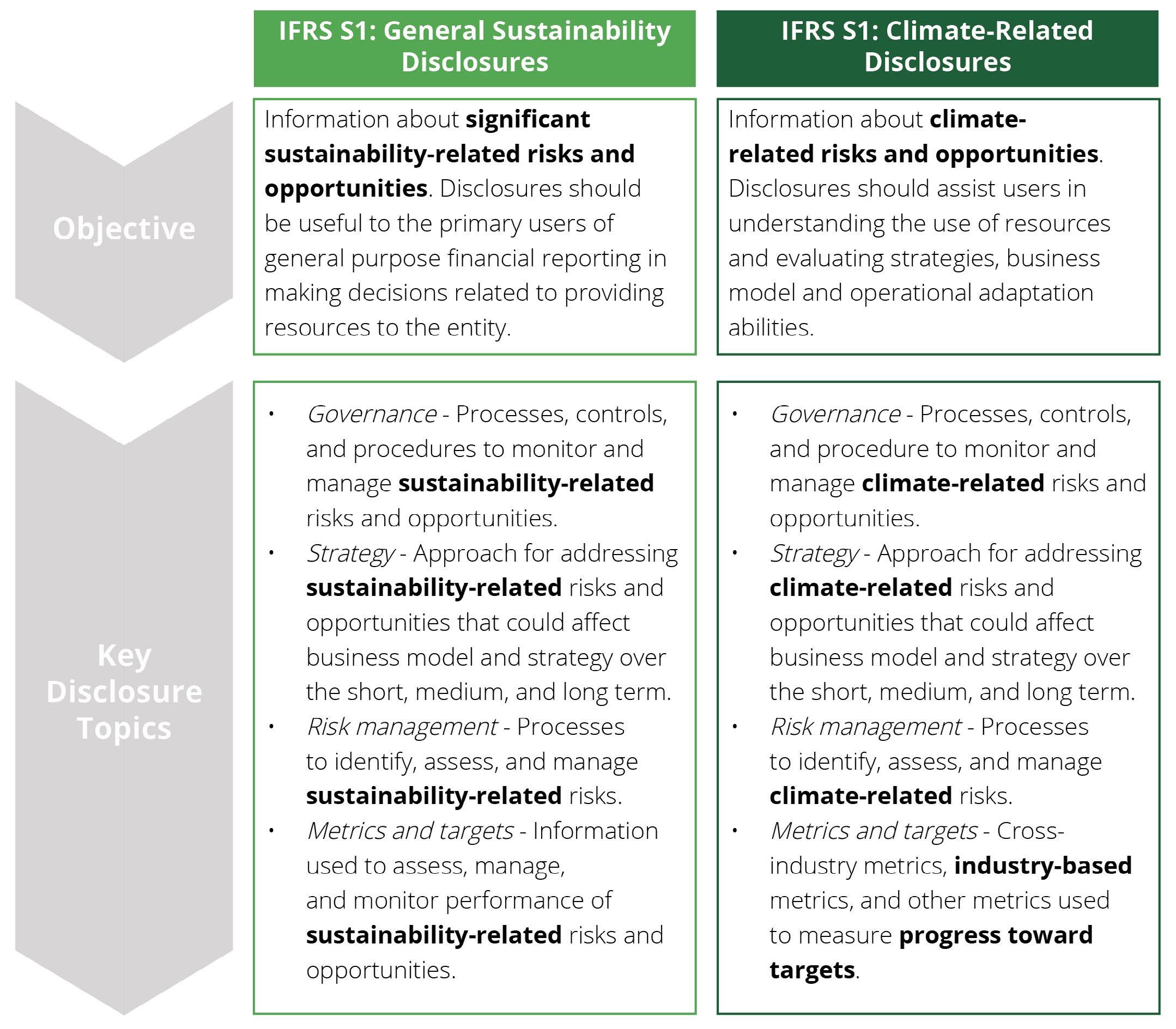
“The sustainability of our resources, our profession, and our talent are core to what we urgently require. We’ve seen the impact of climate change. Devastating floods in one province and equally devastating droughts in another are affecting our citizens and our economy. SAICA members are difference-makers, people in positions of power and influence with skills and competencies to make a difference for all stakeholders.”- Milton Segal, Executive Director of Standards at SAICA.
“We’ve been working to introduce integrated reporting to both the International Accounting Standards
Source: Deloitte | IFRS | ISSB | SAICA
Board (IASB) and the International Sustainability Standards Board (ISSB) and ensure that the framework and its concepts and principles are reflected in S1 and S2. We also recognise that businesses do not operate in a vacuum. The needs of investors have to be considered, but so do the needs of the environment and other stakeholders.
In South Africa, privatisation of the role of the board and governance are embedded in King 4 and corporate governance, and the same cannot be said about many countries around the world. That makes it clear that integrated thinking is a particular strength in this country,” says Jonathan Labrey, Chief Strategy
Officer of the International Integrated Reporting Councils.
IMPORTANT STEPPING STONES TO A GLOBAL REPORTING SYSTEM
“The new standards are important stepping stones towards a comprehensive global corporate reporting system. There is a recognition of the need for collaboration and alignment between sustainability standard setters and framework providers in order to create an integrated approach to financial and non-financial reporting. This is critical if we are to offer a holistic picture for capital providers,” says Professor Mervyn King.
By Jessie Taylor
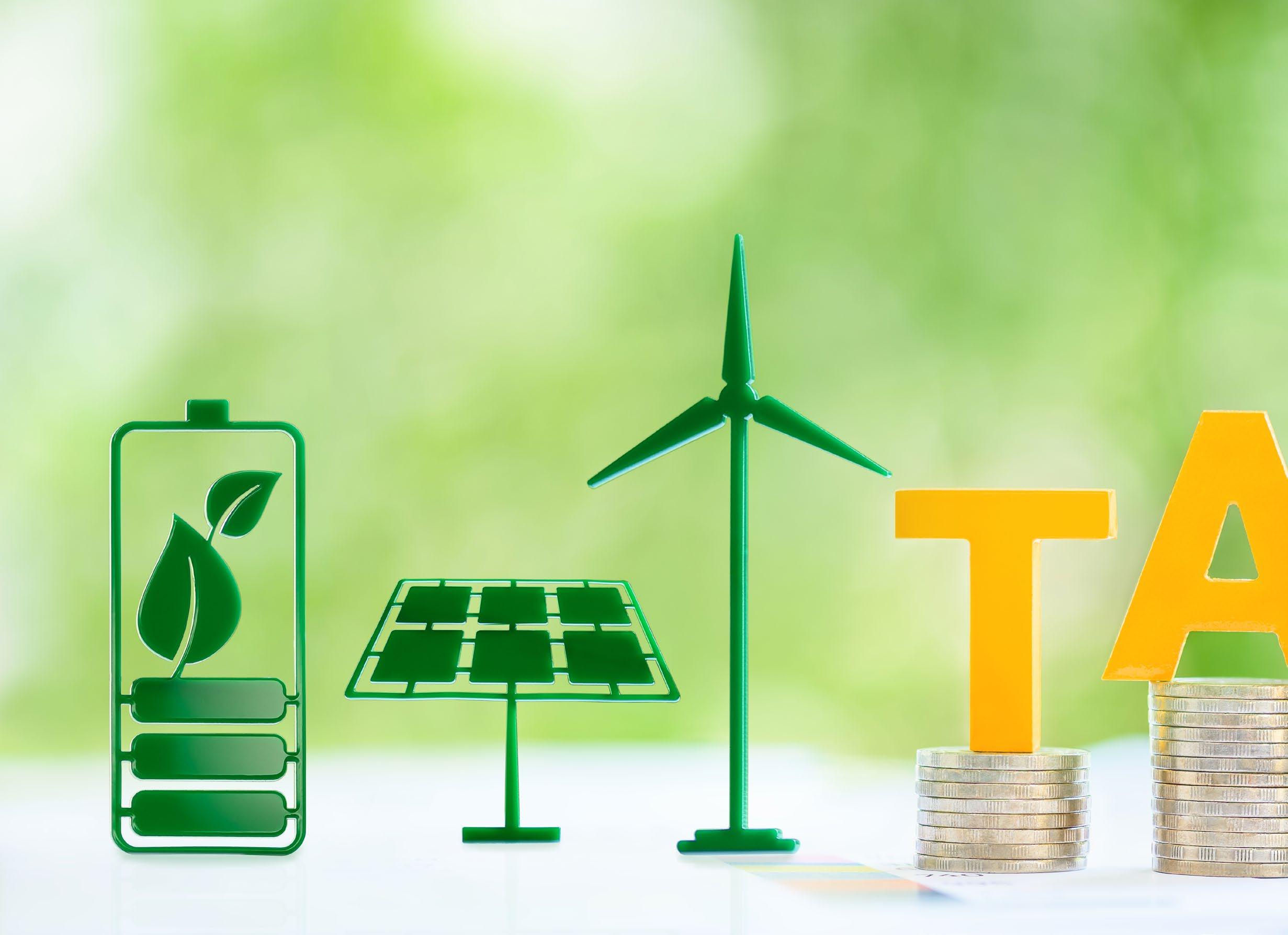
As the South African government tackles the energy crisis, National Treasury has announced two key tax incentives to encourage individuals and businesses to assist with energy generation.
Finance Minister Enoch Godongwana recently announced tax incentives for individuals who install solar rooftop panels at their homes, as well as a tax break for businesses that invest in renewable energy.
Through these two incentives, the Treasury said it would be offering R4-billion in relief provided for individuals that install solar panels and R5-billion to companies through an expansion of the renewable energy tax incentive.
President Cyril Ramaphosa announced in his recent State of the Nation Address that incentives to encourage individuals and businesses to invest in solar energy generation have become a priority, as they offer one means of reducing the impact of load shedding on households and the economy.
Individuals who install rooftop solar panels during this tax year will be able to claim a rebate of 25% of the cost of the panels, up to a maximum of R15 000 per person. This can be used to reduce their tax liability in the 2023/24 tax year. This incentive aims to encourage homeowners to contribute to electricity generation by allowing them to claim the rebate against their personal income tax liability.
The following conditions apply:
• The rebate applies only to new and unused solar PV panels with a minimum capacity of 275W per panel (design output), installed as part of a new system or as an extension of an existing system.
• The solar panels must be installed at a private residence and have a certificate of electrical compliance issued.
• The rebate only applies to solar PV panels, not other forms of power generation like inverters or generators.
• To claim the incentive, individuals must present a VAT invoice and proof of payment to SARS, as well as the Certificate of Compliance.
• The rebate will only be claimable on submission of the ITR12 annual returns for individuals.

• The rebate is available to the person who pays for the system, so it is not confined to property owners. However, body corporates do not qualify.
Minister Gondwana has temporarily expanded the existing tax incentive Section 12B of the Income Tax Act, which provides for capital expenditure deductions for assets used in producing renewable energy.
This section originally allowed businesses to deduct 50% of the costs in the first year, 30% in the second and 20% in the third for qualifying investments in wind, concentrated solar, hydropower below 30 megawatts (MW), biomass and photovoltaic
“Individuals who install rooftop solar panels during this tax year will be able to claim a rebate of 25% of the cost of the panels, up to a maximum of R15 000 per person.”
(PV) projects above 1 MW, and provided an accelerated capital allowance of 100% in the first year for solar PV energy projects of less than 1MW.
This incentive has now been temporarily expanded to allow businesses to claim a 125% deduction, which can all be claimed in the first year. The adjusted incentive will only be available for investments brought into use for the first time between 1 March 2023 and 28 February 2025.
The rebate is available for any renewable energy project, with no cap on the generation capacity.
According to the minister, from 1 March 2023, businesses will be able to reduce their taxable income by 125% of the cost of an investment in renewables.
“There will be no thresholds on the size of the projects that qualify, and the incentive will be available for two years to stimulate investment in the short term,” he said.
The current incentive allows businesses to deduct the costs of qualifying investments over a one- or three-year period, which creates a cash flow benefit in the early years of a project.
GUARANTEE SCHEME
In addition, Finance Godongwana announced that the existing loan guarantee scheme - that was initially designed to help businesses recovering from the COVID-19 pandemic – would be used to incentivise renewable energy and rooftop solar.
This programme, known as the Energy Bounce Back Scheme, was launched in April, with the aim of incentivising renewable energy and rooftop solar. The scheme will also address energy-related constraints experienced by small and medium enterprises.
Minister Godongwana has also announced that, under the scheme, the government would guarantee solar-related loans for small and medium enterprises on a 20% first-loss basis.
This means that government will carry 20% of the loss on defaulted loans, so banks don’t have to take the whole loss.
It is hoped that this will encourage banks to issue more loans for renewable energy projects.
The amendments to the scheme also allow banks to borrow directly from the scheme to facilitate the leasing of solar energy equipment to small businesses. Small businesses installing solar will also be able to borrow finance for working capital.
Sources: TGS | Business Tech | Africa News | Bloomberg | Pretoria News | Webber Wentzel | Fin24
By Fiona Wakelin
Greenwashing is the act of making false or misleading statements about the environmental benefits of a product or practice - a way for companies to continue or expand their polluting as well as related harmful behaviours, while gaming the system or profiting off well-intentioned, sustainably minded consumers. The term was actually coined back in 1986 in an essay by environmentalist and then student Jay Westerveld. While visiting a hotel in Fiji, Westerveld noticed that it asked guests to reuse towels for the planet’s sake - a request that would also conveniently save the hotel money. Meanwhile, the hotel, located near sensitive island ecosystems, was in the middle of an expansion – NRDC
Also known as “green sheen,” greenwashing is an attempt by companies to have their cake and eat it by purporting to be sustainably driven, whilst implementing environmentally toxic practices in order to cheaply capitalise on the growing demand for environmentally sound products, a trend that is particularly driven by Gen Z, environmentally aware consumers.
Futerra’s 10 tips on how to recognise green washing
Fluffy language
Words or terms with no clear meaning (e.g. “eco-friendly”).
Green product vs. dirty company
Such as efficient lightbulbs made in a factory that pollutes rivers.
Suggestive pictures
Green images that indicate a (unjustified) green impact (e.g. flowers blooming from exhaust pipes).
Irrelevant claims
Emphasising one tiny green attribute when everything else is not green.
Best in class
Declaring you are slightly greener than the rest, even if the rest are pretty terrible.
Just not credible
“Eco friendly” cigarettes, anyone? “Greening” a dangerous product doesn’t make it safe.
Jargon
Information that only a scientist could check or understand
Imaginary friends
A “label” that looks like third party endorsement—except that it’s made up.
No proof
It could be right, but where’s the evidence?
Out-right lying
Totally fabricated claims or data.
“Companies have recognised the importance the environment plays for their long-term business operations, whether it’s manufacturing, product development, marketing and communications, or employee satisfaction. There are many avenues of conveying environmental leadership to consumers and constituents. But because everyone has become more aware and sophisticated in understanding environmental issues, whatever form the message takes, it needs to be authentic.”
—Claudia Malley
Vice President, Global Media and Publisher
National Geographic Magazine
Green Business Benchmark lists the following categories, highlighting a descending order of environmental communication authenticity:
CATEGORY
Effective communication and good environmental value
Sustainability is built into a business’s strategy and core mission statement. Every organisational process and operation is considered, challenged, and improved to reduce an entity’s environmental and social impact. Efforts and successes are then communicated
accurately using an evidence-based approach to back claims made. These brands operate as green leaders.
CATEGORY
Poor communication, some environmental value
In this instance, corporate greenwash is not used intentionally but is rather the result of ineffective communication that undermines the substantial efforts made to improve a company’s environmental performance. Most often, misguided greenwash includes the use of sweeping generalisations, using terms such as natural, eco, or environmentally friendly with the absence of data to back these statements up. A revised communication strategy is needed here to deliver data-driven and focused marketing messages.
CATEGORY #3: GREENWASH NOISE
Poor communication, poor environmental value
These are companies who try to shout louder than their competitors about how green they already are. These brands spend more time and money presenting themselves as green relative to the actual time and money spent on making a change and becoming more sustainable. Much work needs to be done to move these brands into the
Effective Environmental Communications category, but this is possible by: Addressing the brand’s environmental impact through the value chain. Developing and implementing an effective environmental strategy. Communicating environmental efforts accurately using a scientific, datadriven approach. Achieving thirdparty certification.
CATEGORY #4: UNSUBSTANTIATED GREENWASH
Effective communication disguises poor environmental value
These brands are involved in positive environmental projects and provide data to back up their claims. However, these claims mask a company’s damaging environmental impacts. Brands that fall into this category cause the most harm to the environment because their behaviour could lead to public disillusionment and disengagement from the environmental debate.
A cautionary tale
In an era where fake news is commonplace, it is of utmost importance to be on the look out for authenticity – and cry foul when companies are misleading the public and consumers in terms of their sustainability profile. We can’t take sustainability lightly – there is no Plan-et B.
By Tom Marsicano, CEO of and Change
The Ukraine conflict, the hangover of the pandemic, economic recessions, mass inflation – it’s no wonder people feel bombarded by circumstance. According to the World Economic Forum, the planet is amid a so-called “Polycrisis”. The word cropped up throughout panel discussions at the World Economic Forum’s Annual Meeting in Davos with experts evaluating the short- and long-term challenges facing the planet for the Forum’s Global Risks Report 2023.
Defined as “disparate crises interact(ing) such that the overall impact far exceeds the sum of each part”, it’s a term that unnerves people worldwide. Yet for those of us in South Africa, who are used to facing economic constraints and infrastructural issues like loadshedding and water interruptions, we know that even during a crisis (or multiple crises), there are opportunities to bring about positive change.
Considering the vast amount of change many countries, organisations, and individuals have faced over the past few years, it’s no wonder that change adaptability has become an increasingly valued skill.
The entities (and the people within those entities) adept at problem-solving, keeping an open mind, and being willing to change are most likely to thrive – even during a crisis.
As change management practitioners, we are the people who build organisational change capability, and what we’ve noticed among our most successful clients – and in other case studies – is that scenario planning is more valuable than ever. Scenario planning is about asking the

“what if” questions and trying to find the best decisions in the face of uncertainty –before the impact of a crisis hits.
Organisations can effectively balance the effects of a crisis by incorporating economic data into organisational planning and forecasting, researching the geopolitical effects on a sector/industry, and helping individuals make sense of the world in a chaotic time. Yes, it requires deep research, analysis, and time, but proactive scenario planning can reveal the crossover effects of this ongoing polycrisis
and help find the solutions to help us stabilise. But these scenarios aren’t only for the present. These solutions can be applied across various situations and ultimately can be a significant part of ensuring an organisation is adaptable and – even more importantly – agile.
Cost constraints don’t just emerge in an economic recession. New ways of working should be implemented beyond the pandemic. Disruptions occur regardless of global conflict. Therefore it’s essential always to be prepared for the unexpected and be capable of change.

We’ve also had to become significantly more agile in the change management industry. It’s what I’ve called Adaptive Change Management. While our fundamentals are still the same, we’ve had to learn to apply these methods in new and original ways. While we used to focus on the leadership level to guide organisations through change, we’ve had to accept that a multi-level approach is more effective – and a requirement in these change-heavy times. We must still secure the sponsorship from leaders but also recognise the impacts of a change across an organisation. These include
“ As change management practitioners, we are the people who build organisational change capability, and what we’ve noticed among our most successful clients – and in other case studies – is that scenario planning is more valuable than ever. ”
financial factors, social factors, and even mental health effects on individuals. In a nutshell, change managers have had to become more sophisticated. We’ve had to solicit people’s input from across organisations to get the complete picture surrounding potential change and understand that this context is essential to our work. The more diverse the feedback, the better we can plan to address potential resistance, help people cope, and reaffirm the importance of a change.
Recently, the Gordon Institute of Business Science (GIBS) released a report about the polycrisis – and said that future-fit leaders are essential to navigating the current global business environment.
“A future-fit leader in the 21st century requires much deeper insights beyond knowing how to run a business,” says GIBS’ Abdullah Verachia. “To be able to respond to a rapidly evolving business sector and external environment, you need the understanding of what’s happening in the world around you; politically, digitally, technologically, socially, and environmentally.”
As change managers, we have to be these leaders and help those we work with to become capable of handling any crisis.
Sources: World Economic Forum | Global Risks Report 2023 | ENCA | Forbes | GIBS |

By Carlos Martins, Advisory and Compliance at Change Financial Solutions
When operating an import or export business in South Africa, you could be forgiven for assuming that volatile currency movements are the sum of “risk” that your organisation might face in financial markets. The reality is that if you don’t have a Treasury and Risk Management matrix in place, this will have a knock-on impact to all parts of your business.
If one researches the word “risk”, they will discover that it has its origins in the 1660’s and derives itself from the French word “risqué” which refers to “hazard, danger, peril, exposure to mischance or harm”. It appears in English in the early 1700’s and refers to the “hazard of the loss of a ship, goods, or other properties” – the word is perfectly aligned with the challenges of import and export operations.
Every ship needs a captain and a bosun. It is the bosun’s task to guarantee the operation of the ship and crew so that the captain may guide it. The key benefit of your Treasury function is to act as the bosun who will provide you as the entrepreneur or finance arm of a business with a clear overview of all the financial risks across your business and help you make informed decisions to maximise profit and reduce risks.
Irrespective of your industry and structure, all businesses have 3 core parts that are exposed to a degree of financial risk:
• Front-Office
• Middle-Office
• Back-Office
An integrated Treasury function will not only ensure risk is managed holistically – but will assist Financial Management teams to stay focused on long term strategy. Empowering a Treasury function allows for quick decision making that is aligned with long term strategy but focused on short-term liquidity and financial risk.
Too often, financial risk is viewed as a “Back-office” or finance function only –but in truth, risk should inform financial decision making across all three parts of the organisation and this is why:
This is typically your client-facing function charged with generating revenue. Are you able to correctly price your products and services – not just today but at a specific point in the future? Are you tracking a true real-time profit and loss and locking in foreign exchange, interest rate and cost of capital at specific points in time? Too often, this function in the business is focused on chasing revenue and sales targets but does so blindly – without having sight of fluctuations in input costs, commodity prices and foreign exchange movements.
Without understanding these risks and inputs, sales teams cannot adequately price their products or services as well as target appropriate sales volumes, often leading to internal conflicts between sales and procurement coupled with disappointed clients when salespeople renege on deals or attempt to renegotiate prices to accommodate for fluctuations. Failure to manage risk in the Front-Office can result in reputational damage for your business.
Depending on the industry you operate in, this is where your policies, technology and compliance risks effectively sit.
A robust Middle-Office is where you conduct scenario analysis and determine the overall risks in your organisation. A perfect example of this could be your exposure to interest rate volatility which is very topical right now.
As an entrepreneur, you have just navigated through the COVID-19 pandemic, started to rebuild your balance sheet, and perhaps
taken on some debt to fund growth and expansion. Did you do any scenario analysis which mapped out a 300-basis point increase in the local interest rate environment? Do you have structured policies in place to guide you around responding to the changing interest rate environment? That’s the job of your Treasury function.
This is effectively the engine room of your business and will be the team responsible for managing payments, settlements, SWIFT transfers – in many ways, they are your final check-and-balance.
A business is only as strong as its financial function and if this is purely viewed as administrative work, your risk profile will invariably be higher. Supporting this function with strong policies and skills by incorporating a Treasury function will turn it into a key player in your strategy execution.
Risk is not something which should simply be viewed as a financial function or a compliance department. To effectively manage risk, you need all hands on deck in your Front – Middle and Back-Offices. Working with the right Treasury and Advisory partners will help you make better decisions which should ultimately drive profitability with less exposure to variables which are out of your control.


By Sinazo Mkoko

“The Infrastructure Fund, first announced in 2018, creates an opportunity for more partnerships between government and the private sector through the use of blended finance. A pipeline of economic and social projects, most of which are expected to be Public Private Partnerships (PPPs), is being developed with the private sector”Budget Review 2021
PPPs were first introduced in 1998 in South Africa, and 34 PPP projects valued at approximately R90-billion have been completed.
Known as PPPs, Public-Private Partnerships have a record of success across a wide range of challenges facing a developing country such as South Africa.
The World Bank Group states that PPPs can be a tool to get more quality infrastructure services to more people.
“When designed well and implemented in a balanced regulatory environment, PPPs can bring greater efficiency and sustainability to the provision of public services such as energy, transport, telecommunications, water, healthcare, and education. PPPs can also allow for better allocation of risk between public and private entities.”
We’ve seen the success of these partnerships during the COVID-19 pandemic, when the government and the private sector came together for the greater good of South Africans through the vaccination programme.
In the Western Cape, there’s a current increase in housing developments that form part of the PPPs. The Western Cape province has always had a housing issue. The launch of the Belhar Social Housing Project paved the way for social housing in the province, showing the crucial role that PPPs can play in facilitating the provision of social housing, which provides housing solutions for low- to middle-income households in more central areas.
The recently launched Maitland Mews in Voortrekker Road housing development is another successful PPP initiative between the City of Cape Town municipality and the private developers. The 24-unit apartment complex, which comprises 204 apartments, is now home to low-income families who earn between R1 850 and R6 700 per month.
The municipality stated that they are looking for more partnerships with the private sector to tackle the housing challenge in the Western Cape.
SANRAL N4 East Toll Road
SANRAL N3 Toll Road
SANRAL N4 West Toll Road
Northern Cape fleet
Chapman’s Peak Drive Toll Road
The Eastern Cape Department of Transport Fleet management - a strategy that enables organisations/government departments to arrange and manage work vehicles in order to increase productivity, cut expenses, and ensure compliance with legal requirements.
Cape Town’s Metro Southeast (MyCiti Phase 2A)
Gautrain Rapid Rail Link
Cradle Of Humankind Interpretation Centre Complex
SANRAL Gauteng Freeway Improvement Plan Toll Road
“Since 2010, the PPP model has shifted away from its previous focus on the sectors listed above to focus on the independent power producer (IPP) sector, with the primary focus being the Renewable Energy IPP Procurement Programme,2 which was launched in August 2011 and under which four separate procurement rounds have been conducted, resulting in the procurement of 64 projects, investment of US$14-billion by the private sector in these projects and the procurement of 3,922 megawatts (MW) of renewable energy,” - Law Review
Currently, the South African government is calling on the private sector to partner with it to revamp and redevelop six of its busiest land ports in the country. The government also wants cutting-edge infrastructure and technology to be installed in these ports. Home Affairs Minister, Dr Aaron Motsoaledi, stated that the South African government is committed to using the latest infrastructure and relevant technology in its effort to modernise and upgrade the ports to be on par with the current global best practices on border management. Hon. Motsoaledi said the aim is to make it easier for law-abiding people and companies to easily enter and exit South Africa through the borders while the illicit movement of persons and goods is prevented and stopped.
The six earmarked ports of entry are:
• Beitbridge - Zimbabwe
• Lebombo - Mozambique
• Maseru Bridge – Lesotho
• Ficksburg - Lesotho
• Kopfontein - Botswana
• Oshoek - Eswatini
“In fact, South Africa’s ports of entry were designed during the apartheid era with the primary objective of tightened security whilst neglecting the effective facilitation of regional and international trade. In fact, ladies and gentlemen, it is not an exaggeration to state that when you visit our land ports of entry, between us and our SADC neighbours, the South African side of the border looks like informal settlements while the other side looks like Sandton.”
He added that the outcome of the redevelopment of these ports of entry will be used as a blueprint in the long term for all of South Africa’s land ports of entry.“The primary intention is to ensure the realisation of regional economic integration in the SADC region while facilitating the realisation of the African Continental Free Trade Area,” he said.
The World Bank Group said it is committed to helping governments make informed decisions about improving access and quality of infrastructure services, including—where appropriate—using PPPs as one delivery option.
• Exploring PPPs as a way of introducing private sector technology and innovation to provide better public services through improved operational efficiency
• Incentivising the private sector to deliver projects on time and within budget
• Imposing budgetary certainty by setting the present and future costs of infrastructure projects over time
• Utilising PPPs as a way of developing local private sector capabilities through joint ventures with large international firms as well as subcontracting opportunities for local firms in areas such as civil works, electrical works, facilities management, security services, cleaning services, and maintenance services
• Using PPPs as a way of gradually exposing state-owned enterprises and the government to increasing levels of private sector participation (especially foreign) and structuring PPPs in a way so as to ensure transfer of skills leading to national champions that can run their own operations professionally and eventually export their competencies by bidding for projects or joint ventures
• Making the country more competitive in terms of its facilitating infrastructure base as well as giving a boost to its businesses and industries associated with infrastructure development (such as construction, equipment, and support services)
• Supplementing limited public sector capacities to meet the growing demand for infrastructure development
• Extracting long-term value for money through appropriate risk transfer to the private sector over the life of the project—from design and construction to operations and maintenance



























Ralf Fletcher | CEO: Topco Media
Greetings from the forefront of innovation and sustainability!
I’m Ralf Fletcher, the CEO of Topco Media, and it is my privilege to introduce the eagerly awaited Future of Sustainability Conference 2024!
In the realm of business, the terms “disruption” and “sustainability” may initially appear contradictory, but it is imperative that we not only acknowledge them but also embrace them to prosper in the long run. Picture this: Disruption and sustainability, two dynamic forces colliding to create a thriving business ecosystem. It’s not just a conference; it’s an invitation to join the revolution and embrace the future with open arms.
We are living in a pivotal time which demands our attention. We’re not just talking about sustainability; we’re talking about a cultural shift. ESG-minded businesses are leading the charge, rewriting the rules and leaving an indelible mark on the world. We’re not just advocates; we’re pioneers of sustainable and transparent business practices, setting the stage for responsible corporate citizenship and unprecedented development.
The Future of Sustainability Conference is your exclusive ticket to steering your business towards a future that’s not just sustainable but absolutely exhilarating.
Welcome to the #FutureofSustainability! Established in 2011 in collaboration with the UN Climate Change Conference COP17, our mission is to promote sustainable and transparent business practices. We strive to foster responsible corporate citizenship and sustainable development, extending our impact from individual to institutional levels. By offering a platform for thought leaders, businesses, entrepreneurs, policy makers, and industry experts, we aim to
inspire actionable steps toward implementing green, sustainable, and ethically-sound strategies. Our vision is to mobilise and transform Africa towards becoming a zero-carbon emission, waste-free, fully sustainable, and brilliantly smart continent.
Participating in this event not only aligns with your investment goals but also supports ethical and environmentally conscious approaches to conducting business. Without sugarcoating the challenges we face, we embrace the reality of Africa and the monumental opportunity it presents. From this vantage point, we take action towards FutureProofing African Business.
Do not allow GenAI, burgeoning climate-tech, and disruptive climate policy leave you behind! Get ready for an unforgettable experience where excitement, innovation, and networking collide. Let’s create a brighter, greener, and more sustainable future for Africa, together!
Fired up and ready to redefine the future - I look forward to your active participation and the positive impact we can collectively make at this significant conference.
Best Regards,








We are immensely honoured to have the following dignitaries & executives taking part in this year’s Future of Sustainability Conference.





Nozicelo Ngcobo
Public Affairs, Communications and Sustainability Director, Coca-Cola Beverages South Africa





hon senzo mchunu Minister of the Department of Water



Blessing Manale
Head: Communications and Outreach, South African Presidential Climate Commission



Dr. Achieng Ojwang
Executive Director, United Nations Global Compact Network South Africa (GCNSA)



Dr Sibongile Mazibuko
Deputy Director: Department of Trade and Industry & Competition, Green Economy



Karyn Harrington
Vice President, Public Affairs Communications and Sustainability, Coca-Cola Africa





Meet our sustainability leaders, innovators, & visionaries guiding us towards a greener tomorrow.








































Programme Manager - Mitigation, South African Presidential Climate Commission


Khwezikazi Windvoel Municipal and Project Finance Manager, South African Presidential Climate Commission










Representative at the United Nations Global Compact SDG Innovation Accelerator for Young Professionals





























































